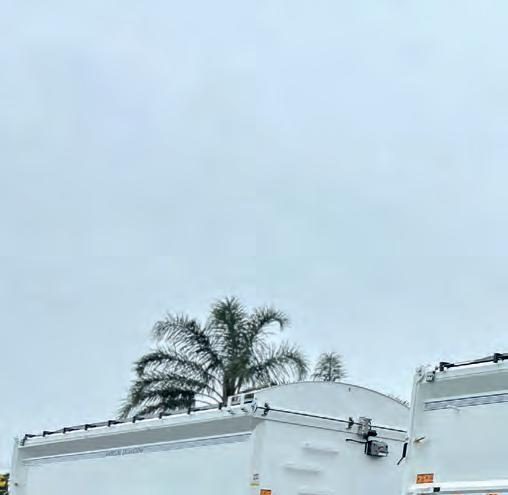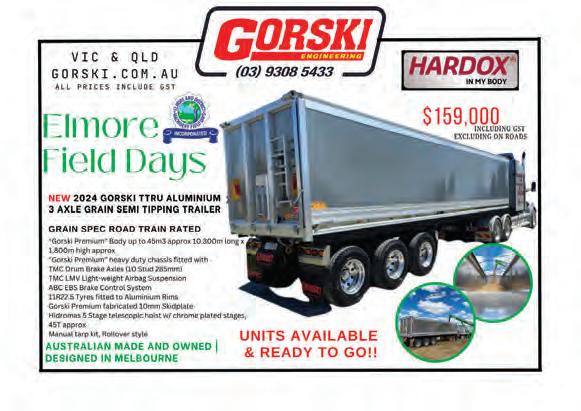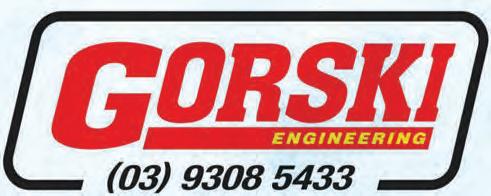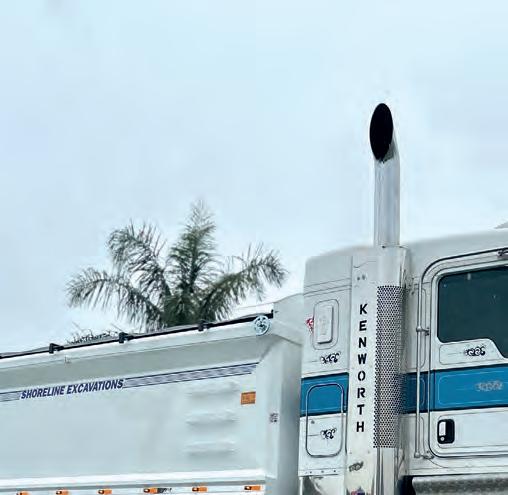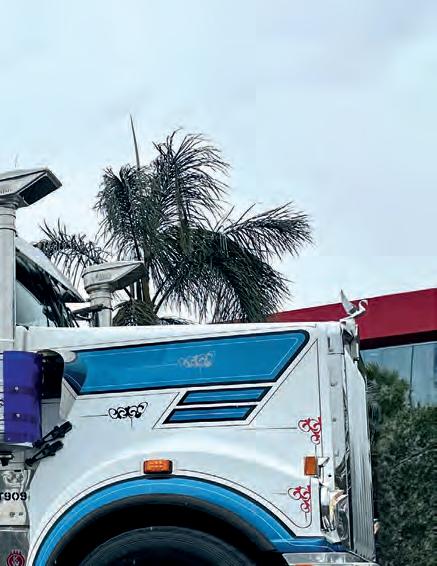





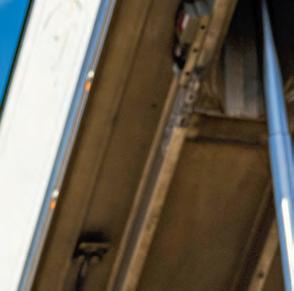



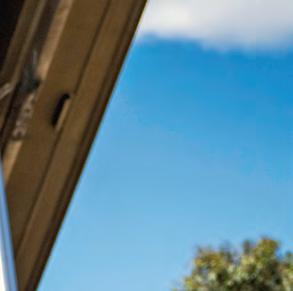

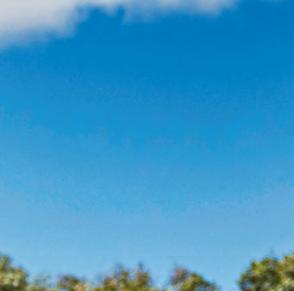



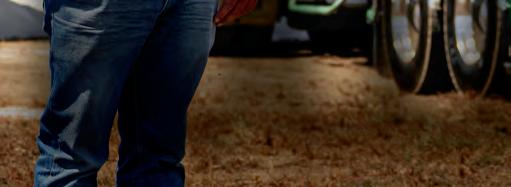

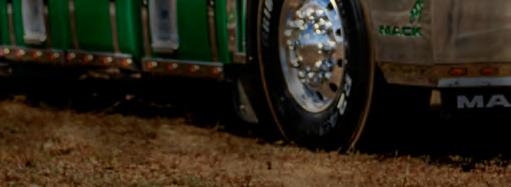


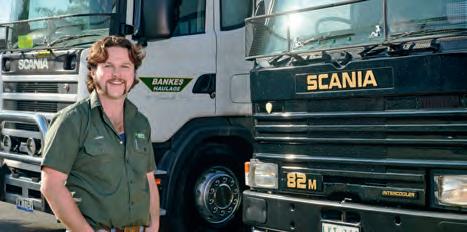



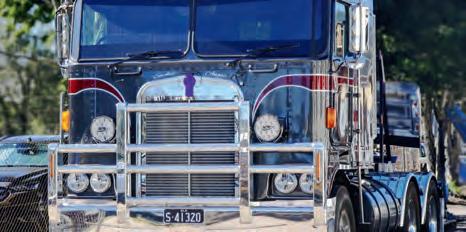














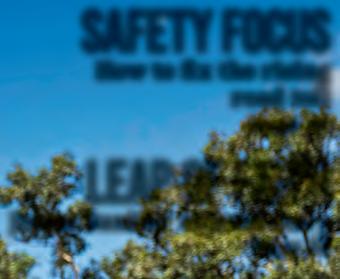





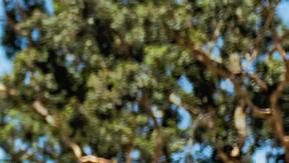





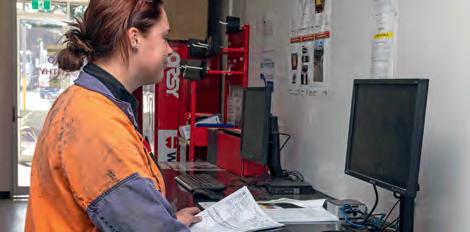


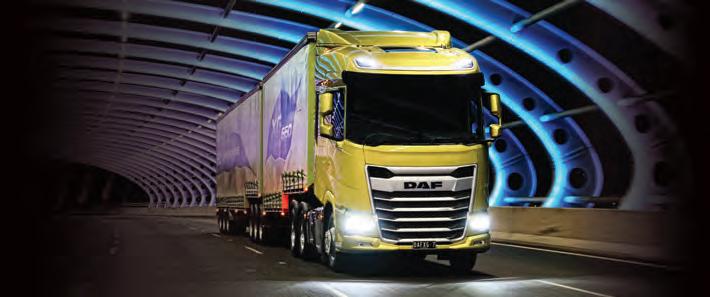


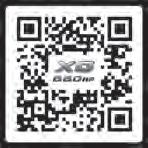

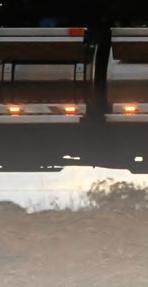



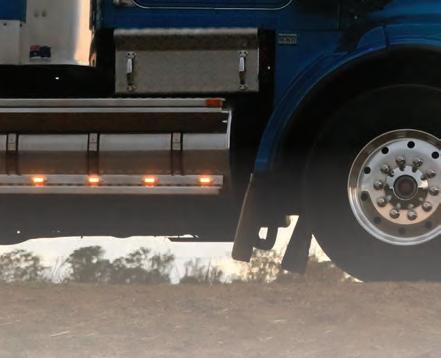





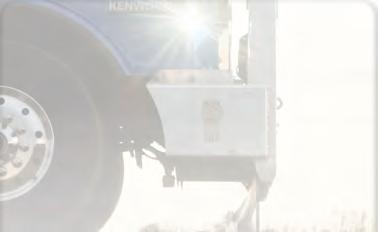
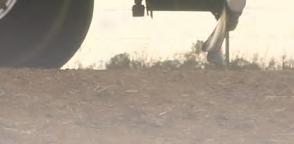
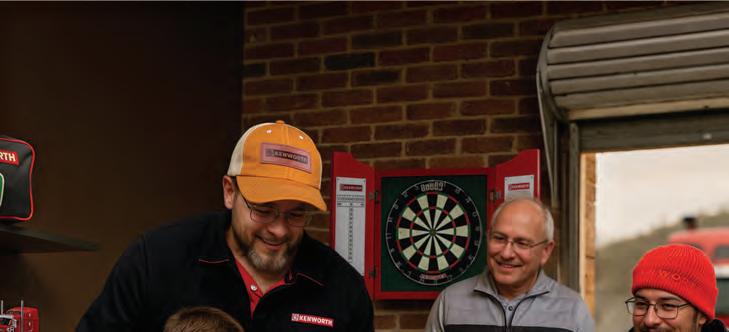



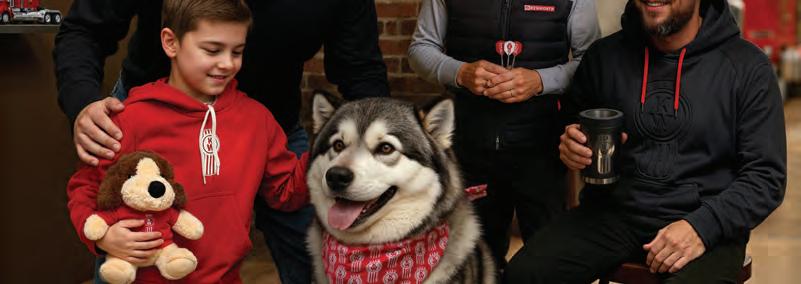


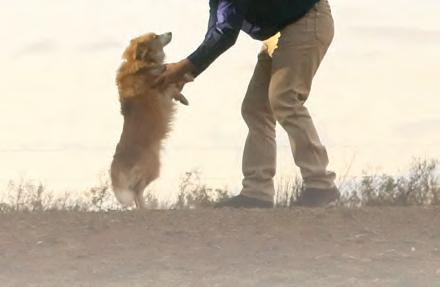






















































































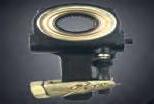


















































































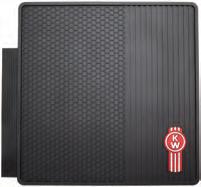






































































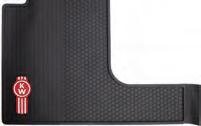



































































































































































































































































































































































































































































































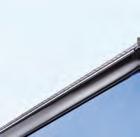























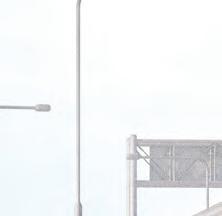





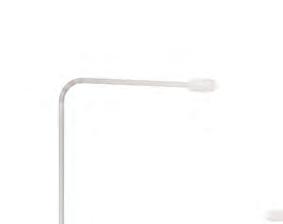




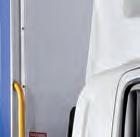



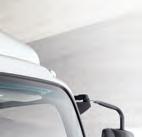




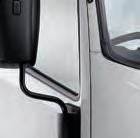
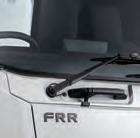

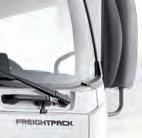


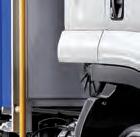



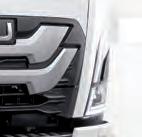



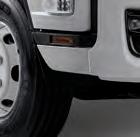
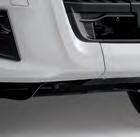


























The all-new range of Isuzu trucks has arrived. With a sleek new cab design, more advanced safety features and a smoother, more comfortable drive, the new range will change the way we rely on our trucks. Forever. To find out more, visit your nearest Isuzu Trucks Dealer or visit isuzu.com.au

















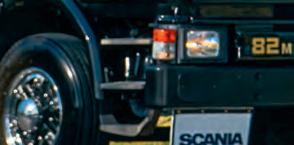











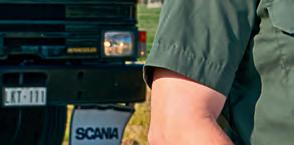
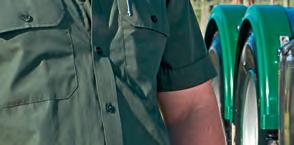



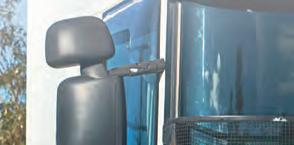



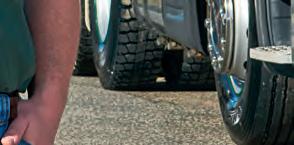




20
Australia’s road toll is the defining issue currently causing debate and calls for change in the nation’s heavy vehicle industry. Sean Mortell looks at the many factors causing a spike in road fatalities and what can be done to make freight routes safer for all
24



Trucking has always been a dream for James Bankes. Now, after taking a leap of faith two years ago, he’s succeeding under the banner of Bankes Haulage
30
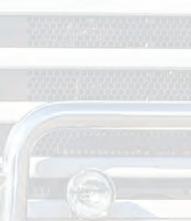


After a recent pivot into harvest work, Luke Keams decided to concoct the perfect Mack to suit his growing list of wishes, Warren Aitken writes
38
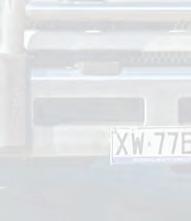

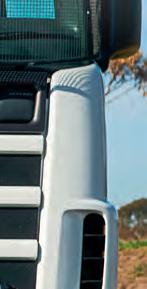
For nearly 30 years, Razor’s trailer technology has been the perfect partner for Gorski’s products. Now, technological evolution and a safety focus is allowing the Razor name to succeed on a global scale
44 DRIVING HOPE



In the midst of a family tragedy, Warren Aitken is calling on the trucking industry to contribute to a meaningful cure for a crippling disease
46



The journey that Laura Wilkinson has been on in her life has led to the launch of an exciting new WA logistics company that is taking a unique approach to project logistics
48 PETERBILT PASSION
Tiarna Condren sits down with Shane Pendergast to find out how a vintage Peterbilt made its way to Camden, NSW
50 INNDYAH THE SPARKIE
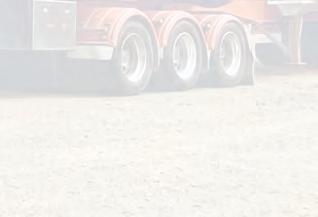
Warren Aitken found himself at Victoria’s Hallam Truck Centre in front of Inndyah Chenoveth, who may not have grown up loving trucks but is now thriving in her role within the industry











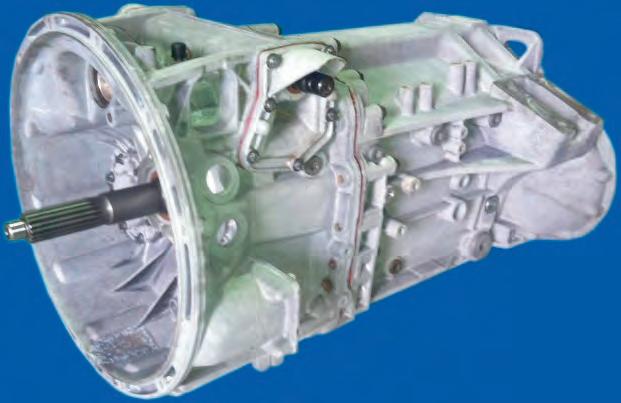
ReconditionedMercedes-BenzTransmissions. MostMakesandModelsG100,G131,GO210, G240,G280,G330available.S3. TA431566. POA
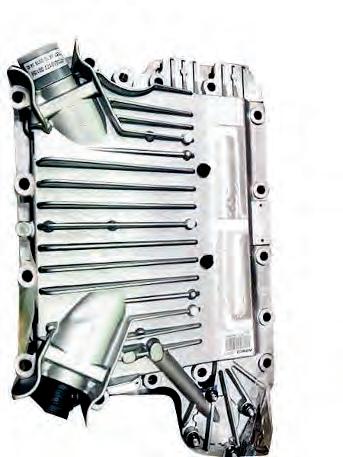
Unit 1/71 Axis Place, Larapinta, Brisbane, QLD, 4110, Australia
Ph: (07) 3276 9300 Fax: (07) 3276 9301
Email: sales@ggd.net.au davids@ggd.net.au
Ph: (07) 3276 9300 Fax: (07) 3276 9301 Email: mattc@gibbsparts.com davids@gibbsparts.com Web: www.gibbsparts.com
Web: www.gibbsparts.com

ZFEcolitepowerpacks.S40. TA952390.
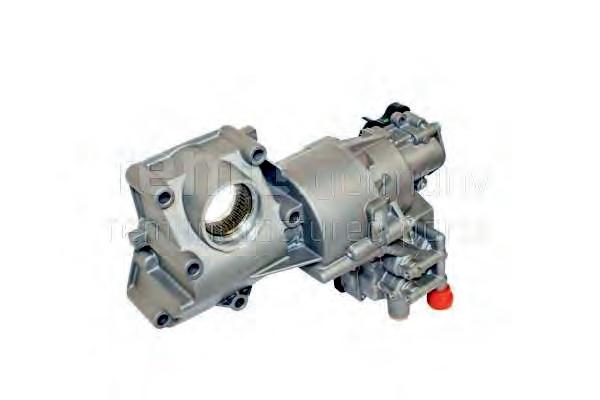

Allmakesandmodelsavailable.S11. TA431615. POA


VOLVO/MACKI-SHIFT/M-DRIVE AT2512C,AT2612D&ATO3112D. S44. TA952399. POA ZFTRANSMISSIONSALLMODELS Allmakesandmodelsavailable.S10. TA431606. POA

EDITORIAL
Editor Sean Mortell
E-mail Sean.Mortell@primecreative.com.au
Phone: 0468 577 166
Journalist Tiarna Condren
E-mail Tiarna.Condren@primecreative.com.au
Contributors Warren Aitken, Frank Black, Sarah Marinovic, Rod Hannifey, Michael Kaine, Glyn Castanelli
Cartoonist John Allison
PRODUCTION
Art Director Bea Barthelson
Print IVE Print
ADVERTISING
Business Development Manager
Tosan Popo Ph 0481 260 352
E-mail Tosan.Popo@primecreative.com.au
SUBSCRIPTIONS
www.ownerdriver.com.au/subscribe
Phone +61 (0)3 9690 8766
Mon-Fri 8am-4.30pm (EST)
Email subscriptions@primecreative.com.au
Mail 379 Docklands Drive, Docklands, VIC 3008 Australia
EXECUTIVE GROUP
Chairman John Murphy
CEO Christine Clancy
Publisher Sarah Baker
Operations Manager Regina Fellner
Sales Manager – South Danny Hernandez



Now is the time for reform and change as Australia’s trucking industry is currently swaying through a world of challenges
The famous saying of ‘no news is good news’ hasn’t quite been an apt descriptor of the past month for Australia’s trucking sector. In fact, times have been incredibly tough. In the past few months alone, numerous transport companies have exited the industry. From the larger end of town like Don Watson Group and XL Express to the latest smaller and more rural operations such as Francis Transport in Corowa, it’s hard to deny that the industry is in a world of hurt.
How has it got to this? There’s more to come on our end, but a combination of stagnant rates, rising costs and increasing regulation appears to be crippling operators in all sectors of transport and logistics. Our array of insightful columnists discuss the state of the industry in frank and honest terms in this month’s copy of OwnerDriver, painting the picture that time is almost out for many in the sector before more tough decisions are made.
operation. From page 24, hearing his fresh passion for all things Scania and for taking to the roads summarises the beauty of trucking.
As per usual, Warren Aitken’s contributions are a cracker, as this month his Truck of the Month is a magnificent Mack that comes courtesy of the team at Keams Transport. From page 30, the words and photos from Warren do a wonderful job of representing a beautiful truck and a wonderful trucking tale.
Through further pieces, such as his journey to raise vital awareness and funds for River’s Gift via Hope the Elephant, Warren continues to underline the caring and generous nature that makes the trucking sector so important to Australia’s DNA. He also headed to Victoria’s Hallam Truck Centre to find a particularly keen young apprentice in Inndyah on page 50 who is kicking goals and making transport her own.
To wrap up the stories for this month, another thriving operator is the newly formed X Logistics.
Owner Driver is published by
Prime Creative Media
379 Docklands Drive, Docklands Melbourne VIC 3008
Telephone: (+61) 03 9690 8766
www.primecreative.com.au
ISSN 1321-6279
OwnerDriver magazine is owned by Prime Creative Media. All material in OwnerDriver is copyright and no part may be reproduced or copied in any form or by any means (graphic, electronic or mechanical including information and retrieval systems) without written permission of the publisher. The Editor welcomes contributions but reserves the right to accept or reject any material. While every effort has been made to ensure the accuracy of information Prime Creative Media will not accept responsibility for errors or omissions or for any consequences arising from reliance on information published.
Opinions expressed in OwnerDriver are not necessarily the opinions of, or endorsed by the publisher unless otherwise stated.
Sadly, this isn’t the only issue afflicting trucking in Australia. In a deep dive, it was an unpleasant time to uncover the rising road toll in our nation, and the involvement that heavy vehicles have in the road toll increase. The decision was made to focus on solutions, and what everyone – not just truck drivers, but motorists, pedestrians, regulators and manufacturers – can do in the bid to lower the number of people losing their lives on the road. From page 20, this industry issue is thrust into the spotlight, hopefully for the sake of change.
Despite these tough talks, there’s still plenty of good news filtering around the industry. It was a pleasure to catch up with James Bankes, a recent addition to Victoria’s owner-driver network, and discuss his initial success running his own
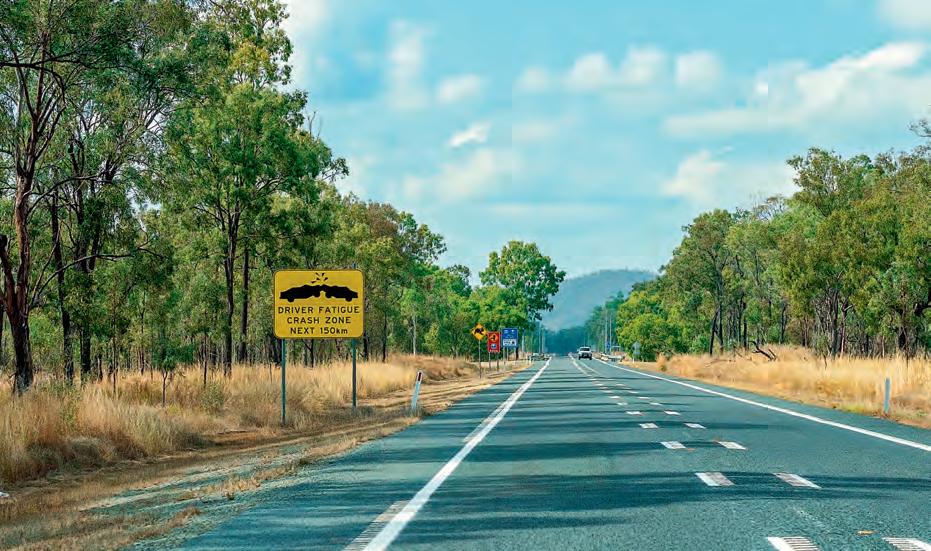
Led by Laura Wilkinson, who has had a unique career to date in transport and logistics, it’s always wonderful to hear of these great tales and fresh perspectives as can be read on page 46.
On the technical side, from bullbars to trailers and everything in between, our growing array of manufacturers and suppliers take you through some of the best innovations currently being made in Australia’s trucking landscape. It’s a jam-packed edition, and we hope you enjoy the read. Stay safe.
“In a deep dive, it was an unpleasant time to uncover the rising road toll in our nation, and the involvement that heavy vehicles have in the road toll increase.”






Introducing G® Lubricant, the cutting-edge graphene-based additive transforming the diesel and gasoline engine industry. Verified by the prestigious University of Queensland, this revolutionary lubricant delivers up to 8.4% fuel savings under high-load conditions, offering optimised performance and cost efficiency.


• Exceptional Fuel Savings: Achieve up to 8.4% improvement in fuel efficiency, even under demanding conditions.
• Minimal Concentration, Maximum Impact: Just 1:10,000 graphene-to-engine-oil ratio ensures safety and compatibility with any internal combustion engine and Group I,II,III and IV engine oil, not suitable for Group V oils. Suggest use in engines out of warranty.
• Proven Results: Backed by four years of advanced testing.

Graphene, a carbon wonder material known for its strength and low friction properties, enhances lubrication at a molecular level. When added to your engine oil, it reduces internal friction especially around the pistons, optimizing performance and fuel economy without compromising engine integrity.

• Eco-Friendly Solution: Reduce fuel consumption and emissions while saving money.



BE PART OF THE
Don’t get left behind in the race for efficiency. Upgrade your engine oil with G® Lubricant today and experience the graphene revolution firsthand!


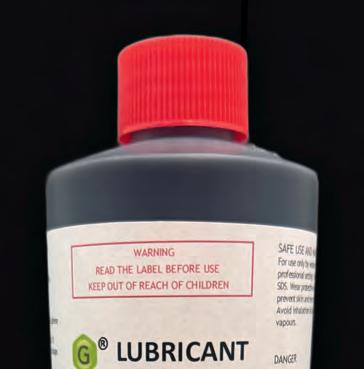

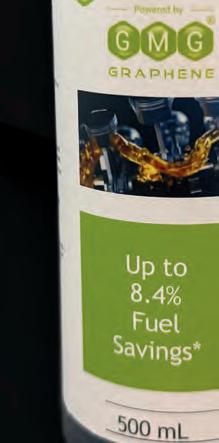



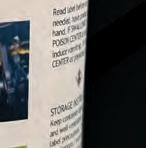


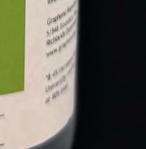










Automotive enthusiasts seeking peak engine performance.
• Industrial operators aiming for sustainable energy savings.
KEY ADVANTAGES
• Significant cost savings.
• Improved Fuel Efficiency & Performance.
• Safe for all diesel and petrol engines - suggest use in engines out of warranty.


Order now and join the global movement toward smarter, greener, and more cost-effective engine solutions.

Technology, interchange and bridge upgrades are set to roll out across the country shortly, as numerous state governments have splashed cash on Australia’s roads
The New South Wales government is investing millions in its roads, aiming to improve productivity and road safety. Part of this investment will see a 28-metre-long bridge constructed along the Golden Highway, while two new fixed speed cameras are set to start operating on the Pacific Highway. Over in South Australia, contracts have been awarded to deliver $150 million upgrades of the Mount Barker and Verdun Interchanges, with major construction set to begin in late 2025.
The New South Wales government has revealed that two new fixed speed cameras are set to begin operating along the Pacific Highway.
Based north of Hornsby, the two activated cameras will be situated between Cowan and the Hawkesbury River.
Transport for NSW acting executive director of transport safety Ruth Graham says the new cameras will target speeding as part of the government’s commitment to improve safety for all road users.
“We know that increased speeds lead to an increased likelihood of a crash occurring, and higher impact speeds also lead to more severe injuries and greater chance of death,” she says.
“In the five years from 2019 to 2023, 70 crashes occurred on the Pacific Highway between Cowan and the Hawkesbury River Bridge. As a result of those crashes, sadly one person was killed and 48 people were seriously injured.”
For the first month, the new cameras will run in warning mode, with drivers and riders who are caught exceeding the speed limit by up to 30km/h being sent a warning letter. For any drivers that exceeds by more than 30km/h, they’ll be issued with a court attendance notice and will face significant speeding fines.
After the warning period ends, the cameras will enforce all offending drivers, with penalties to apply.
These fixed speed camera locations will result in major safety improvements following a 2023 review of the NSW Automated Enforcement Camera Programs. Across all fixed speed camera locations, fatalities dropped by 76 per cent, while crashes where someone was killed or injured by 56 per cent.
These figures compare the five
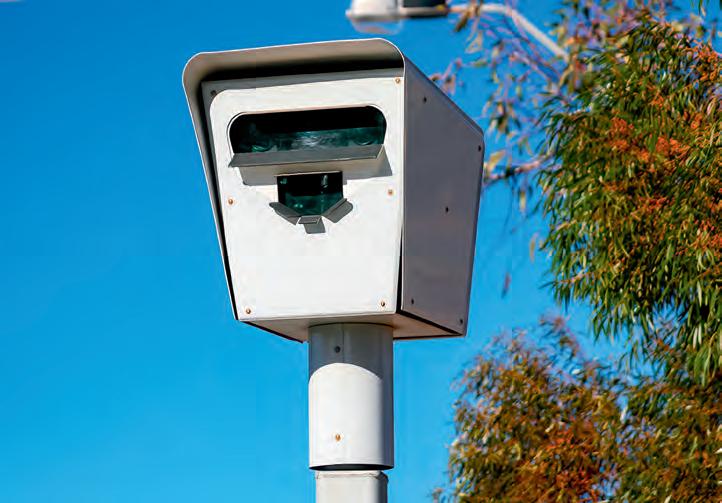
years after the cameras were installed to the five years before they started operating.
CONTRACTOR CHOSEN FOR $150 MILLION SA INTERCHANGE UPGRADES
The South Australian government has revealed that contracts have been awarded to deliver $150 million upgrades of the Mount Barker and Verdun Interchanges, with major construction set to begin in late 2025.
Bardavcol has been awarded the contract for the upgrade of the Mount Barker Interchange, while a joint venture between BMD and Leed will undertake the Verdun Interchange upgrade.
Bardavcol is a South Australian company with more than 45 years of experience in civil infrastructure, including on the Marion Road and Sir Donald Bradman Drive intersection upgrade currently underway.
The company previously delivered the safety upgrades on Main Road, Cherry Gardens as part of the Adelaide Hills Productivity and Road Safety Package.
BMD is an Australian engineering, construction and urban development business that has worked with the state government on projects including the South Eastern Freeway Managed Motorway between Crafers and Stirling and is delivering the upcoming River Road Junction Improvements.
Leed is a South Australian-based civil contractor founded in 2001. With over 23 years’ experience, they have previously worked on projects including the South Road Superway.
The SA government says the
interchange projects aim to improve connectivity to the South Eastern Freeway and improve the capacity of the interchanges in response to existing and projected growth for Mount Barker and the Adelaide Hills area.
The state government says upgrading the Mount Barker and Verdun interchanges on the South Eastern Freeway will improve safety and traffic flow for the thousands of motorists who travel every day between the city and Adelaide Hills communities, including Mount Barker.
The current Mount Barker Interchange is subject to significant traffic congestion and queuing, with 43 crashes reported between 2019 and 2023.
It will be upgraded to include a new three-lane bridge across the South Eastern Freeway for northbound traffic, the conversion of the existing bridge to accommodate three lanes of southbound traffic and a new shared use path, plus improved ramp capacity and new traffic signals to improve safety.
The project will also include pavement rehabilitation and safety upgrades such as smart lighting.
The existing Verdun Interchange will be upgraded to a full interchange, allowing access to and from the South Eastern Freeway in both directions to improve connectivity and traffic flow.
It will feature an eastbound entry ramp towards Mount Barker, and a new westbound exit ramp, which will cross under the existing westbound entry ramp and connect with a new roundabout at Mount Barker Road adjacent to Silver Road.
The upgrade also includes pavement rehabilitation and upgrades to traffic barriers on the existing Adelaide-bound entry ramp and bridge pier protection on Mount Barker Road.
The total project cost to upgrade the Mount Barker and Verdun interchanges is $150 million, with the Australian government committing $120 million and the state government contributing $30 million.
Major construction on the interchanges is expected to begin in late 2025 and be completed by late 2027.
The New South Wales government has revealed that early work is now underway to build a new bridge along the Golden Highway.
The 28-metre-long bridge will be built around five metres above the current road level, which is high enough to withstand a one in 100-year flood.
Based over Mudies Creek between Belford and Mount Thorley, the new single-span bridge is part of the $133 million Golden Highway program that is jointly funded by the Australian and NSW governments.
Transport for NSW regional director north Anna Zycki says the new bridge will help improve productivity and road safety.
“The Golden Highway is a critical link between the New England and Castlereagh Highways, servicing key mining and agricultural activities,” Zycki says.
“This is a vital upgrade to an important regional artery used by 7,000 vehicles every day.
“The existing culvert over Mudies Creek and its approaches are subject to flooding in a one in five-year event, so improving access at this point will deliver significant benefits to local residents and businesses, as well visitors and freight operators.
“The project will also provide a boost to the local economy, with around 135 jobs to be created during construction.”
The work will include realigning a one-kilometre section of the road to the south of its current location to allow for the new creek crossing.
Contractor Acciona will deliver the project, with the new bridge expected to be open to traffic in mid-2027.


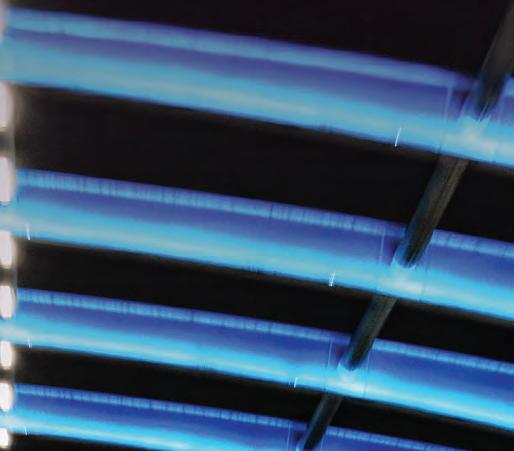
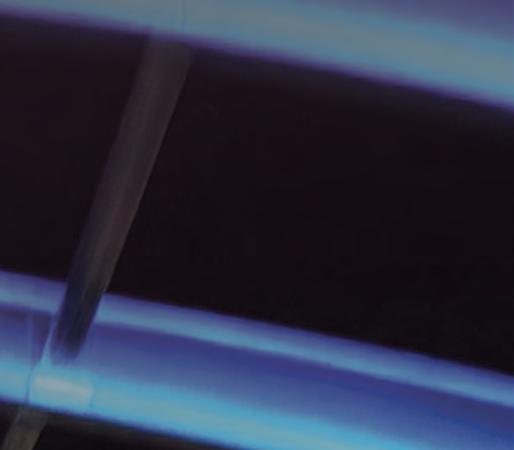
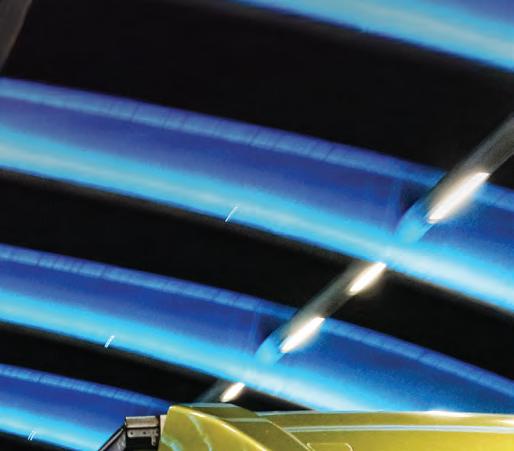





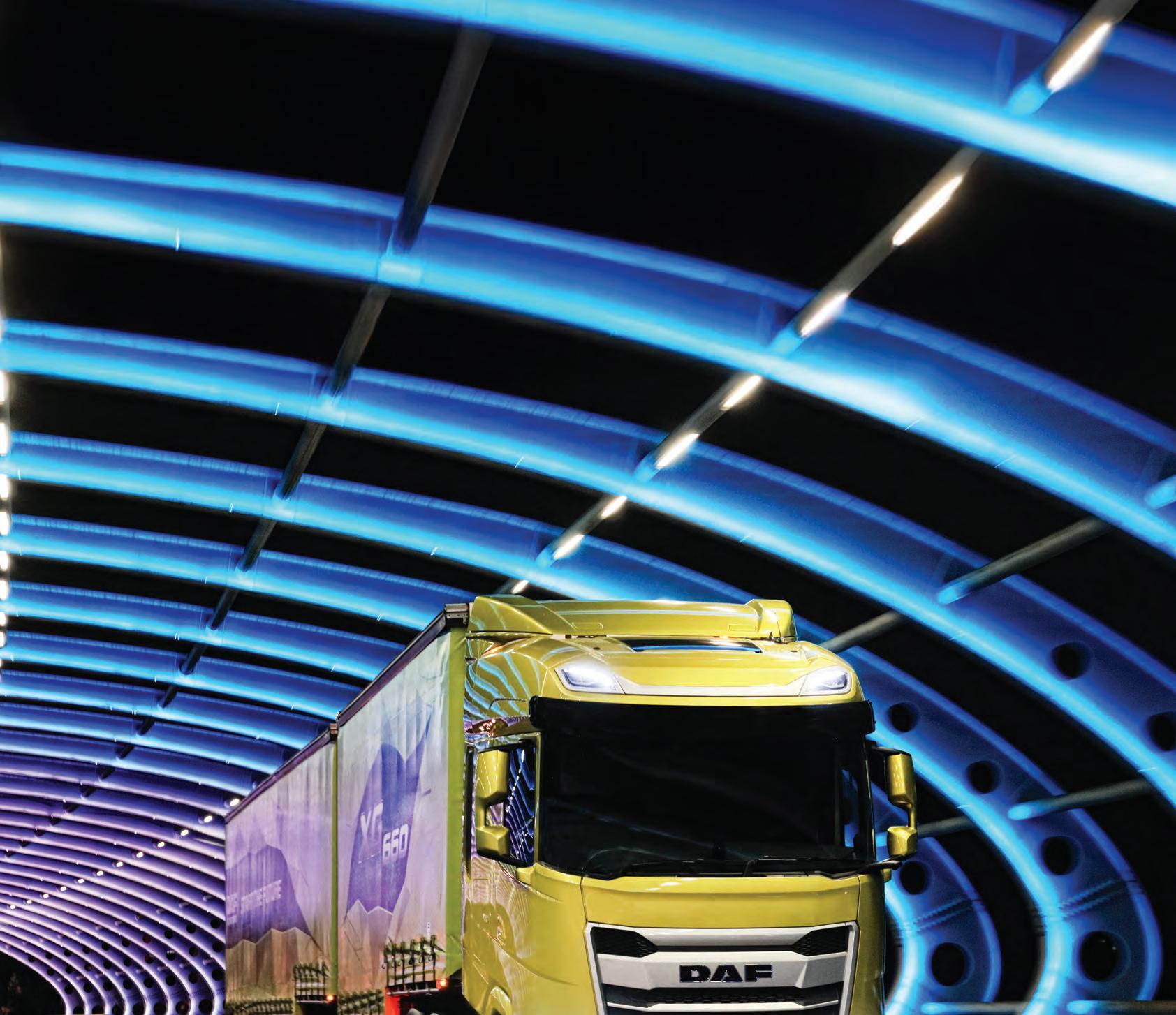



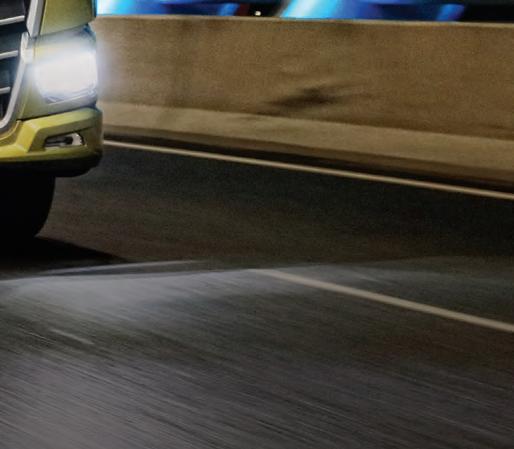




The regulator says a “concerning” number of fatigue offences were registered as part of its latest safety operation
The National Heavy Vehicle Regulator (NHVR) has revealed the findings from its latest major safety operation conducted during Easter.
Operation Omega II was a week-long safety initiative that targeted fatigue during the Easter period, with the NHVR intercepting 2,985 heavy vehicles during the blitz.
NHVR chief operating officer
Paul Salvati says operations like Omega II are crucial to protecting lives on Australia’s roads, especially during high-risk holiday periods.
“Fatigue continues to pose one of the most serious safety risks in the heavy vehicle industry and is a known contributor to road trauma – it only takes a momentary lapse in concentration for lives to be lost or forever changed,” he says.
“That’s why NHVR Safety and Compliance Officers (SCOs) conducted 426 intercepts each day during Operation Omega II, ensuring drivers both understood how to manage their fatigue and were compliant with the law.
“Of the 2,985 intercepts conducted throughout the week-long safety operation, 131 were found to be non-compliant with fatigue requirements in some way.
“To put it simply, that’s 131 instances where we could have seen potential tragedy occur

on our roads, had our SCOs not intervened.”
Salvati says the NHVR issues 172 fatigue-related offences during the operation, with 46 classified as either critical fatigue breaches or breaches due to drivers making false and misleading entries in their work diary to hide a fatigue offence.
“This is a concerning figure and shows an increase in the number of breaches of this severity
in comparison to the previous Operation Omega, which ran in the lead up to Christmas,” he says.
“This year, there have been 60 fatal crashes involving a heavy vehicle across Australia, which is not only tragic, but preventable.
“The results of Operation Omega II should serve as a wake-up call for those doing the wrong thing by intentionally driving while fatigued.”
While he says the fatigue
The Brisbane-based company with more than 35 years of experience in the local industry has called in administrators
On June 27, FTI Consulting was appointed as the voluntary administrators of the XL Express Group to begin an “urgent assessment” of the viability of the company that has more than 35 years of experience in the industry.
The Queensland-based business first started operating in 1990 and forged a national road transport logistics network. It was announced as the co-major partner for the Brisbane Lions AFL side for the 2020 and 2021 seasons.
The administration notice says XL Express Operations is impacted alongside 15 other associated entities under the XL Express banner.
There is currently no reasoning
provided to what has led to the administration move for XL Express, with FTI Consulting confirming that contingency plans are now being put in place.
“The administrators will investigate the financial position of the companies and provide a report to creditors in due course,” FTI Consulting says in a statement.
“Where services are unable to be fulfilled, arrangements are being made for customers to collect their goods held in XL Express Group distribution centres.”
The first meeting of creditors was scheduled to be held before July 9, where further information was to be confirmed.
figures are “alarming”, Salvati says the positive outcome from the operation was seeing many operators implement appropriate measures to prioritise rest and alertness for drivers.
He says SCOs also delivered 407 education sessions centred on fatigue and work diaries, totalling almost 97 hours.
“The fantastic takeaway is how many professional drivers and companies understand that no freight task is worth more than a human life and we commend them for putting safety first,” he says.
“When drivers are impacted by fatigue, they’re at risk of impaired judgment, slowed reaction times and an increased chance of being involved in a catastrophic collision.
“Throughout Operation Omega II, SCOs took the time to engage with drivers, providing education and raising awareness about the serious risks of driving tired, with the aim of encouraging voluntary compliance with the law.
“An additional 253 education sessions were provided to drivers on other Heavy Vehicle National Law requirements, such as vehicle standards, loading and mass.”
During the operation, a number of additional compliance issues were also identified, with mechanical non-compliance proving to be the primary area of concern.

A
lot can change in 90 years.
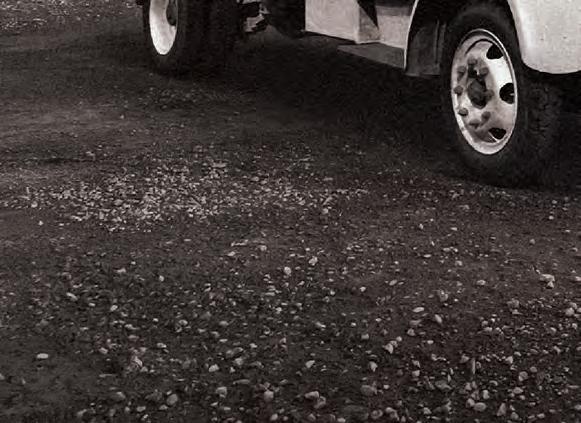





However, some things never change, like UD Trucks’ commitment to challenging the status quo.

It’s a commitment to tradition while continuously seeking to innovate. It’s a commitment to going that extra mile when no one else will, but most of all it’s a commitment to customer success.
Here’s to ninety more years.



From the moment the first UD truck was conceived in 1935 to now, UD Trucks has been driven by a passionate curiosity to make the world a better place.
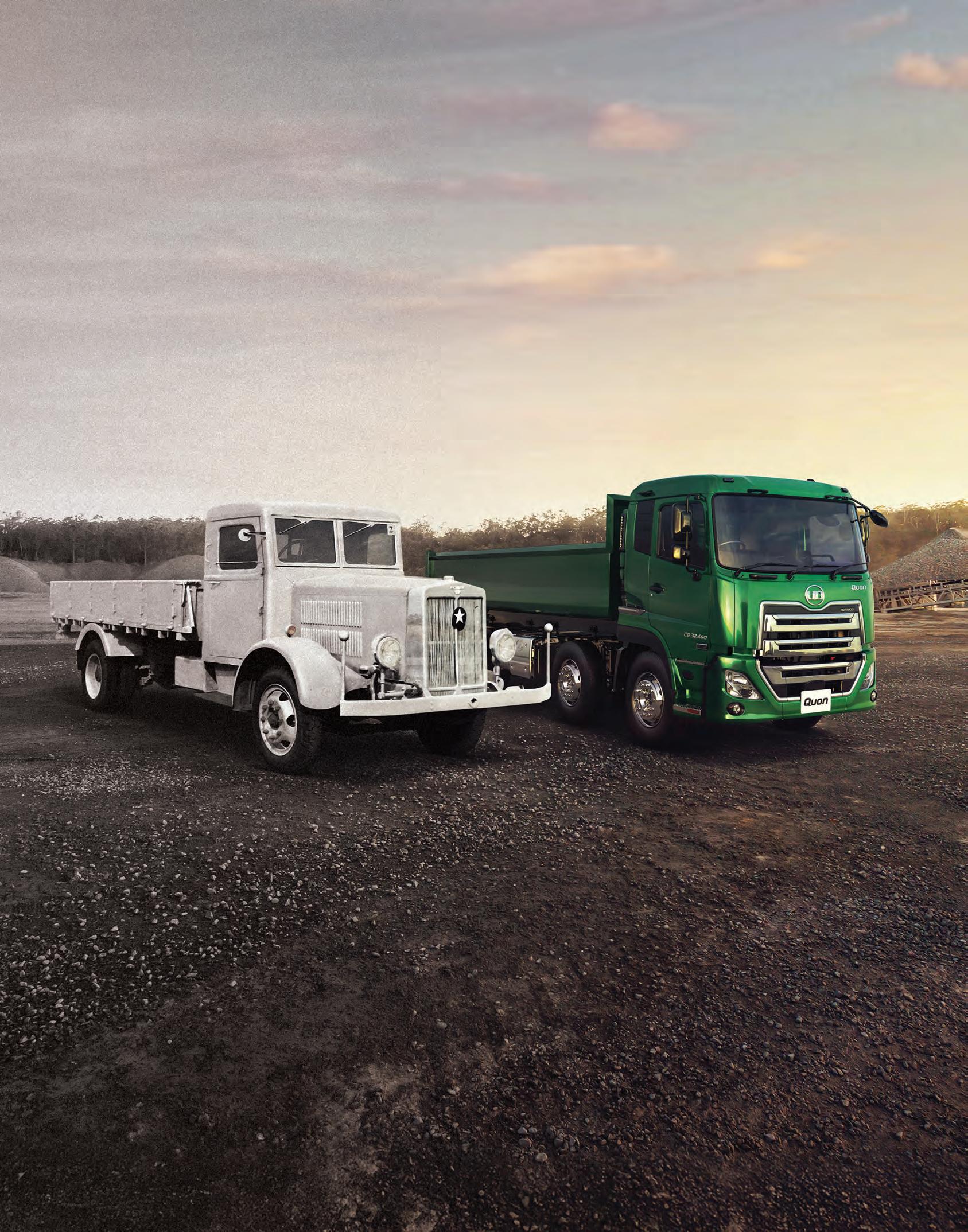
Going the Extra Mile

PACCAR Parts has announced a “significant step” towards improving heavy vehicle road safety in Australia through a new Kenworth retrofit project to meet a recent Australian Design Rule (ADR).
PACCAR Parts will provide a solution for Autonomous Emergency Braking (AEB) that brings earlier model Kenworth trucks into line with the standards.
The new ADRs are aimed at improving heavy vehicle safety for heavy goods vehicles that came into effect in February. This includes ADR 97/00 that mandates the fitment of AEB for most heavy goods vehicles over 3.5 tonnes GVM.
Knorr-Bremse technical and account manager Brett Medlin says this crucial technology seeks to minimise the severity of in-lane frontal collisions, particularly in monotonous highway driving conditions.
While most new locally built trucks, including Kenworths, will come with the new safety systems installed as a default, Medlin says it’s important for drivers to know how the technology works.
“Bendix Fusion is an Advanced Driver Assistance System, designed to enhance vehicle control and safety across diverse driving conditions. The technology is already fitted as standard on most new Kenworth models, ensuring compliance with ADR 97/00,” Medlin says.
PACCAR has been an early adopter of AEB technology, including adding Bendix Fusion technology since the locally manufactured T610 model was launched in 2016. This system combines radar, camera technology and the Bendix Electronic Stability Program to provide comprehensive collision mitigation and enhanced braking capabilities.
“The collision mitigation system PACCAR uses on its locally manufactured Kenworth trucks is the fully featured version of Bendix Fusion that includes Enhanced Autonomous Emergency Braking, Enhanced Stationary Vehicle Braking, Multi-lane Autonomous Emergency Braking, and Highway Departure Warning and Braking,” Medlin says.
“Nose-to-tail collisions is the second-most common accident involving trucks after rollovers. In scenarios like a car cutting off a truck, or moving out from a lane of stationary traffic in front of the
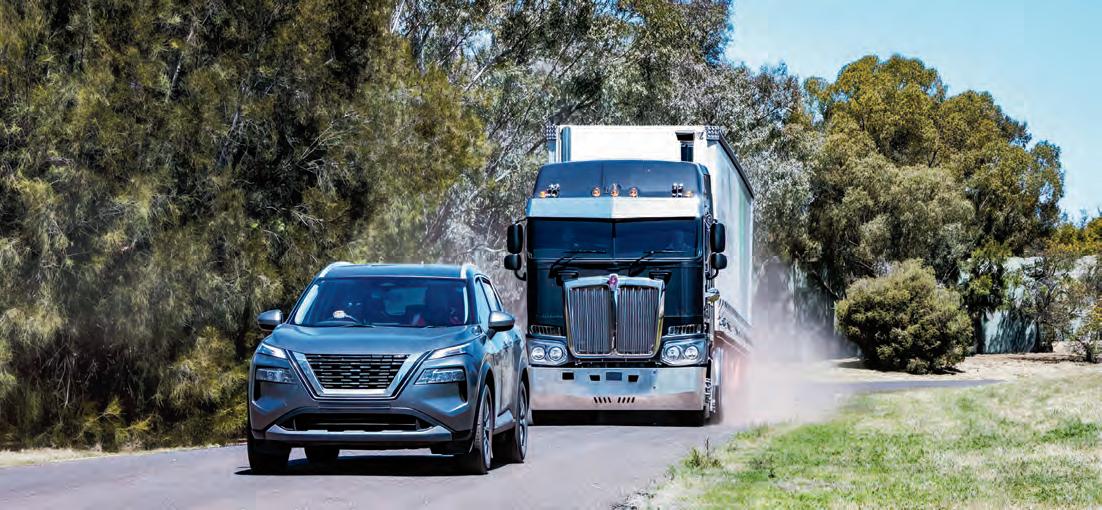
“Bendix Fusion is an Advanced Driver Assistance System, designed to enhance vehicle control and safety across diverse driving conditions.”
truck, the Bendix Fusion braking system applies the brakes in a much faster way than a driver can react.”
Medlin says AEB is also relevant for compatible older vehicles, with PACCAR Parts now allowing its customers the chance to upgrade certain older Kenworth trucks that are compatible with the latest Bendix Fusion system.
“Most Kenworth trucks that have an electronic stability program on it could have the electronic brake controller upgraded with the Bendix Fusion system. So long as you’ve got the right level of electronics and valves on the truck, you can retrofit it,” Medlin says.
“AEBS not only improves the safety of these vehicles, but a lot of tenders including government, construction and grocery projects specify the level of technology that must be on the truck, including the fitment of AEBS.
“PACCAR customers who are considering retrofitting the Bendix Fusion system to their vehicles should speak to their PACCAR Parts dealer. The dealer will coordinate with PACCAR’s technical team and Knorr-Bremse’s technical support team to ensure the chassis number is compatible and guide the implementation of the retrofit safety system.”
The growing Melbourne transport company has now received eight Kenworth models in the past nine months
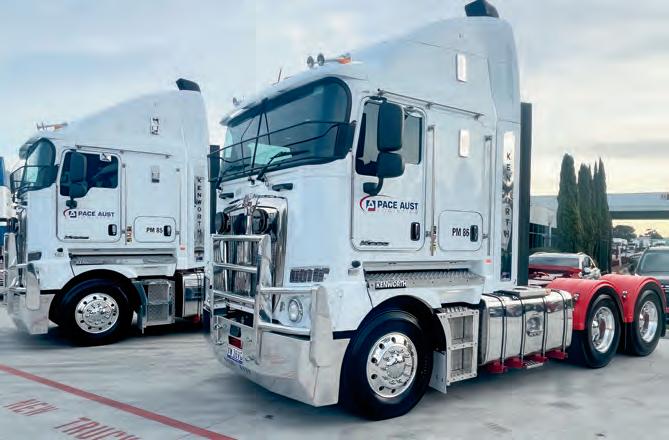
Australian transport company Pace Australia Logistics has added to its fleet recently, taking delivery of two new Kenworth trucks.
The Melbourne-based operator has received two K220 2.3 metre cabs into its fleet to complete fridge van work. This latest delivery means Pace has
added eight Kenworth models to its business in the past nine months.
“The owner, Akash Bharti, has been working closely with our salesman Nick Gesovski to continue to put quality trucks into their fleet,” Kenworth DAF Melbourne says in a social media post.



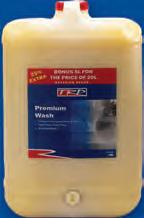




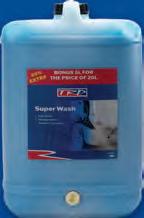








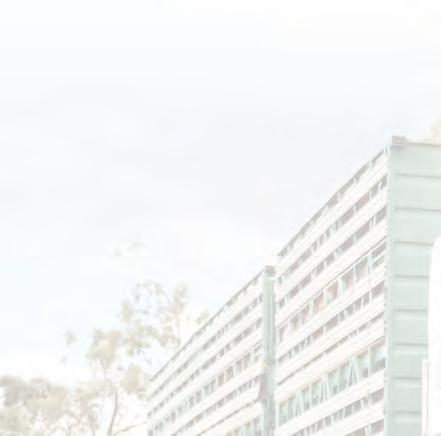

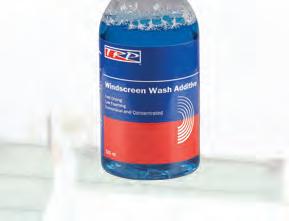

























































































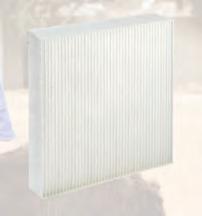



Manheim Industrial Australia has been selected as auction partner by national freight company Don Watson Transport, taking responsibility for selling the company’s large fleet of trucks and trailers
Don Watson Transport, one of the country’s leading refrigerated logistics operations and a 77-year-old family-owned business, made the difficult decision to close its operations earlier in June this year.
The fleet to be sold via Manheim Industrial auctions comprises 130 well-maintained heavy trucks and 170 trailers, plus a further 10 rigids. The assets will have their decals removed and repainted white.
These trucks and trailers are located across several sites including Derrimut in Victoria, Weatherill Park in New South Wales and Hemmant in Queensland.
“When we took the incredibly tough decision to close the business due to market conditions, our top priority was ensuring all staff received their entitlements,” Don Watson Group CEO Lyndon Watson says.
“An orderly and effective process to divest our fleet was an important piece. Manheim’s tailored approach, deep understanding of transport assets, process for asset preparation and commitment to understanding our
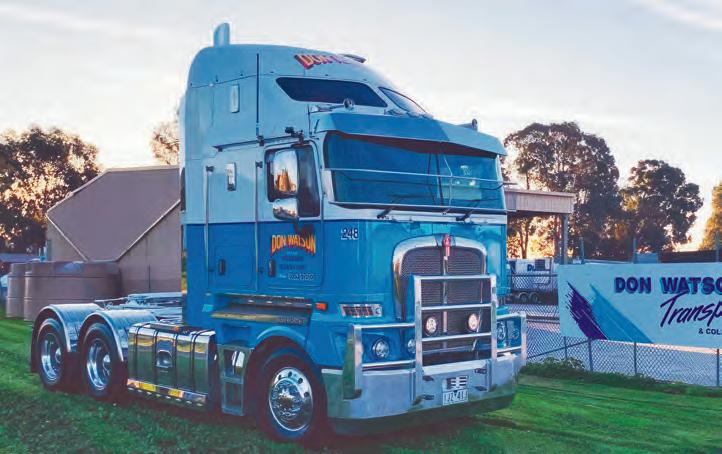
requirements were key in them being selected as the preferred partner.”
As a leading industrial equipment auctioneer with physical locations across Australia, Manheim is well-placed to handle this large, high-profile and multi-location truck and trailer sale.
Among Don Watson Transport’s priorities are ensuring orderly sales
of its assets. Manheim understands the company’s commitment to taking care of its people and determination to preserve the goodwill accumulated over decades.
Having won the contract, Manheim will begin to prepare the trucks and trailers for sale – including the rectifications – and prepare for a steady sale-off backed by extensive

The National Heavy Vehicle Regulator (NHVR) has released its 2024 Heavy Vehicle Industry Safety Survey, with there being a massive change in how drivers are operating within the local transport landscape.
The main change is seen in whether drivers own and run their own vehicles or choose to be employed by a business. In the 2022 survey, 70 per cent of drivers ran their own vehicles while 20 per cent were employees by a business and nine per cent sub-contract.
NHVR industry survey reveals major shift
The latest survey has revealed a major shift in the size of transport companies and the set-up of how drivers are running trucks
In the 2024 edition, which surveyed 8,883 members of the transport industry, now only 29 per cent own and drive their own vehicle while 65 per cent are employed by a business –a shift of 45 per cent. The 2024 survey says only six per cent of drivers now sub-contract for a business.
When it comes to where these drivers are based, there’s been a shift away from Victoria, with the number of drivers being based in Victoria dropping from 50 per cent in 2022 to 32 per cent in 2024. In its place, there’s
been rises in NSW (up from 20 per cent to 27), Queensland (up from 15 to 19 per cent), South Australia (up from seven to nine per cent), WA (one per cent to four) and the Northern Territory (from 0.1 per cent to 0.4).
There are also less and less operations running just the sole truck while the number of major operators has grown. One-truck operations has decreased in popularity from 15 per cent in 2022 to seven per cent in 2024.
In its place, the number of businesses with 200 or more vehicles
marketing and awareness campaigns.
Manheim is confident that these trucks and trailers will find new homes during the process, noting the sterling reputation Don Watson Transport has earned across the sector when it comes to maintaining its vehicles.
“We are honoured to have been appointed as the exclusive remarketing partner for Don Watson Transport,” Manheim Australia head of advisory Aiden Hsu says.
“This mandate reflects the strength of our advisory capability, national footprint and proven expertise in managing high value, multi jurisdiction, complex fleet divestments.”
Manheim head of transport sales
Chris Williams says: “After decades of Don Watson Transport delivering excellence in the industry, Manheim is privileged to be given the responsibility of selling down the fleet.
“The fleet itself, as would be known widely in the industry, consists of a huge range of prime movers including Kenworth K200s, K200 King Cabs, T409s, T609s, T610s, T909s, Mack Superliners, Scanias and more.
“With extensive service history, engine rebuilds and new crate motors in many of the trucks, they are ready to go to work. Additionally, the refrigerated trailers are made up primarily of FTE, Lucar and Vawdrey that will be a great addition to any company’s fleet.”
in the fleet have risen from six per cent in 2022 to 14 per cent in 2024.
This is reflected in the business size trends by people – now, 12 per cent of respondents in the industry have only the one person, while the number of operators with two to 10 people having fallen from 61 per cent in 2022 to 30 per cent in 2024.
On the other end, the number of businesses with 500 people or more have risen from three per cent to nine per cent in the latest iteration of the survey.
When it comes to what primary industry sectors these companies work in, there’s been a swing in buses, construction and landscape, general freight and primary production/ farming.
The number of bus companies participating in the industry survey has risen by 14 per cent to 16 per cent in 2024, while construction and landscape product businesses have fallen from 18 per cent in 2022 to 12 per cent in 2024.
General freight companies have risen by two per cent to 22 per cent in 2024, while primary production and farming groups have fallen to 13 per cent in 2024, down seven per cent from the last survey.
With over 150,000 parts across 30 product groups, SAMPA delivers one of the most comprehensive selections of commercial vehicle components in the industry. Our extensive range includes suspension systems, drivetrain components, fifth wheel assemblies, air springs, landing gears, and much more – all engineered to meet the highest industry standards for durability and reliability.



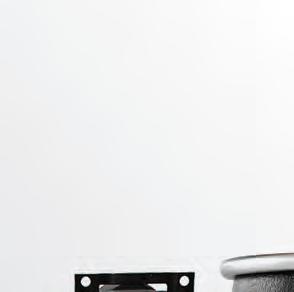
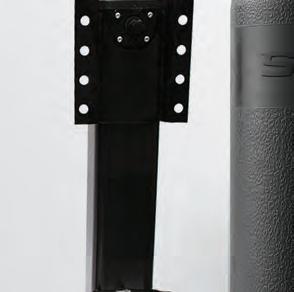
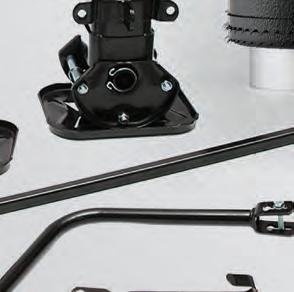




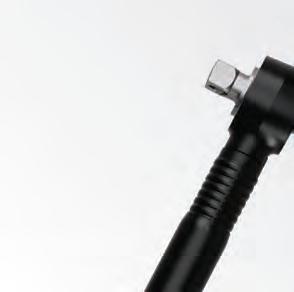
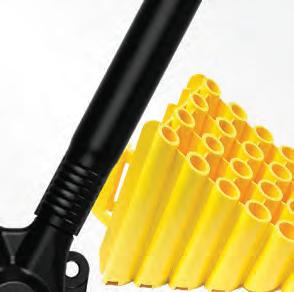


Want to know more or find the right part for your fleet? Simply contact your local SAMPA sales manager, we are here to help.
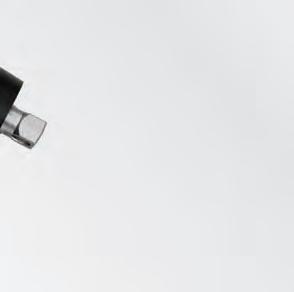

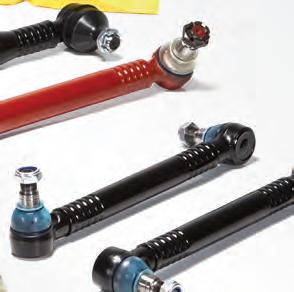



Just 14 months after breaking ground on the site, the milestone Scania branch in WA is now officially open to local operators
Scania Australia has announced a milestone moment in its local presence, doubling its Western Australian footprint with the opening of a brand new, purpose-built branch in Hope Valley.
Situated within the City of Kwinana, south of Perth, the 19,000sqm sales and service site is located at 6 Armstrong Road.
It includes a stand-alone 3,500sqm regional warehouse that will supply WA Scania on-road customers and off-road mining and resources clients while also assisting the existing Kewdale site with the implementation of Scania’s industry leading autonomous and EV mining truck solutions.
The site is the 10th that Scania uniquely owns and operates for its sales and service locations around Australian capital cities, with customers also being supported via a network of more than 60 authorised independent dealers across truck, bus, marine and industrial engine applications.
Hope Valley has been designed to accommodate future BEV vehicle needs, with sufficient capacity in the electrical supply for fast-charging and underground preparation for the installation of charging infrastructure. The site will also include a climate controlled clean room for repairs to battery cells when required.
“Hope Valley is our second company-owned sales and service location in the Perth region, and it is well situated close to the developing Kwinana outer harbour port facility, and supported by upgraded road infrastructure,” Scania WA, SA and the NT dealer director Michael Berti says.
“Demand for Scania products has been increasing significantly in the west over the past decade, and we were very much in need of additional service and parts facilities to maintain our customers’ uptime, and that of our projected conquests over the medium term.
“We opened a new dedicated parts distribution warehouse in Welshpool only around four years ago, but such has been the growth of the Scania business in Western Australia, this facility has already surpassed all expectations, and this in part prompted us to further expand our parts capacity at Hope Valley. We have effectively doubled our available warehousing floorspace, and the storage height available, to handle current demand and support future developments in both ICE and BEV product ranges.”
Scania Australia managing director Manfred Streit broke ground on the project site alongside Berti in March last year, with the new warehouse and sales and service branch being handed over to the company by developers in May 2025, just 14 months later.
“This new addition to the Scania network of company-owned workshops and parts warehouses is a logical step for us to maintain high levels of customer uptime and to further encourage the uptake

of repair and maintenance contracts, assisted by Scania’s ever-growing array of vehicle productivity and efficiency programmes,” Streit says.
“Scania is a global industry leader in connected services, which allows us to monitor very accurately how vehicles are performing and provide timely scheduled servicing which prevents unplanned downtime, underpinning customer profitability potential.
“By increasing the capacity for regular maintenance in our own workshops, our customers will have access to the most advanced in-service vehicle management available.
“We know mining customers demand and depend on predictable uptime. This is underscored by the huge cost of unplanned downtime. We have configured our service scheduling and parts supplies to take account of this.
“For on-road customers, the uptime issue is no less important, and given WA’s geographic position establishing a larger parts warehouse and additional service capacity south of Perth is a necessary development for Scania, underpins business growth and continued customer success using our products.”
The new Scania workshop comprises three work-bays and a maintenance pit, as well as a full complement of vehicle testing equipment including shakers and rollers for assessing suspension, braking and steering components.
The site is located close to major routes for easy accessibility, especially by larger WA-style combinations, with the maintenance pit designed to accept extra-long multi-trailer vehicles without decoupling. Large crossovers and hardstands will provide ease of access for vehicles up to 36.5m in length, such as B-triples.
Additionally, trailers and trailer equipment can be serviced on site along with vocational rigids (such as construction and jetvac trucks, as well as fire appliances), making life easier for customers by offering a one-stop-shop service destination.
“The new location is well positioned to support many of our customers in the busy City of Kwinana port area, providing a more convenient location for servicing and parts supply,” the newly appointed Hope Valley branch manager Michael Phipps says.
“We have assembled a team of enthusiastic technicians and parts specialists from within Scania WA as well as from the broader industry, and we are confident that this team will deliver maximum uptime for our customers, one of Scania’s core values.
“Scania Hope Valley will have plenty to offer truck drivers, with a comfortable lounge area and a number of resting locations ideal for catching some sleep while having their vehicle serviced or repaired.
The workshop will operate from Monday to Friday from 7.30am to 5pm.”
The new warehouse replaces the Welshpool site and in addition to the additional floorspace now boasts an improved and optimised operational flow.
“It’s a more open site, so we can process and handle higher volumes into the future,” Scania national parts manager Matthew Pol says.
“We can now do more and do it better, with a staff of four and a supervisor. Previously, we could only process one container at a time, but now the footprint allows two or three containers to be processed, so we can get more volume through the building. We will be holding more product lines, to cope with the depth and expansion of our growing truck, bus and engines product, and for our time-critical mining customers.
“In the new building we have probably five to 10 years of growth capability, not only because of the expanded floorspace but we’ve also volumetrically doubled our height. The bulk racking has gone from four metres to eight metres tall.”
Scania Australia now operates 10 company-owned sales and service branches, with three in Victoria, two each in New South Wales, Queensland and Western Australia, and one in South Australia, with additional dedicated sales representation in Tasmania.
Transport and logistics giant Lindsay Australia has announced one of its directors has retired, naming his replacement
Director Matthew Stubbs has retired from Lindsay Australia on June 27, with CEO Clay McDonald thanking him for his time spent at the transport company.
“The board of Lindsay Australia Limited wishes to thank Mr Stubbs for his leadership, guidance and contribution which has supported the business since his appointment in 2021,” McDonald says in an ASX update.
“In particular, his expertise and experience in supporting the company in the formulation of its growth strategy over the period of his service.”
The board has announced that Rodney Boys will assume the role of chair of the audit and risk committee, replacing Stubbs.

The proudly South Australian logistics company says the win is more than “just contracts” as it prepares a custom-built depot for urgent freight response
South Australian logistics operator Energy LogistiX (ELX) has announced a “defining milestone” as it celebrates being awarded a logistics contract to support BHP’s Copper South Australia operations.
In the wake of Aurizon being awarded part of the contract to deliver rail freight services to and from BHP’s copper mines in the state, ELX has now received the logistics contracts to complete road
freight operations.
The contracts will see ELX provide same-day, critical freight movements via PBS road train combinations using its Fleet Smart system as well as a custom-built OSR depot in Adelaide that is fully SAP-integrated.
The contracts will also see ELX provide 24/7 urgent freight response

to BHP Copper SA sites nationwide.
As a proudly run SA business, EXL managing director Shaun Williamson says this moment reflects what its people, suppliers and supporters have built over the years.
“We’re not here to be the biggest; we’re here to redefine what’s possible by empowering vital industries and our regions, and shaping a stronger future for South Australia,” Williamson says.
“It’s more than freight. It’s a partnership that moves critical materials and moves our state forward – through jobs, capability and trust.”
Williamson says the contract is about creating more local jobs, using Australian-made equipment and reinvesting into the state economy through a 95 per cent local spend commitment.
“These aren’t just contracts; they’re a shared step forward in a journey we’ve built with purpose and pride,” Williamson says.
“We’ve always believed that doing things the right way, with care, pride and purpose, would take us far. Now we get to prove that alongside one of the most respected companies in the world.”
As global copper demands surge, Williamson says SA is in a “prime position” to meet it, with ELX playing a supporting role.
The verdict is in and the ACCC has given DP World Australia the green light to complete a major acquisition within Australia’s container transport market
The ACCC has announced that it won’t oppose DP World Australia’s proposed acquisition of transport operator Silk Logistics.
Following an extensive investigation, including considering detailed responses to its statement of issues, the ACCC has concluded that the acquisition would “not likely result in a substantial lessening of competition”.
It means DP World Australia, who operates container stevedores at the ports of Botany, Melbourne, Brisbane and Fremantle, is free to acquire the transport company.
Silk is a national container logistics provider around the country, hauling import and export containers using trucks to and from ports where DP World Australia operates.
During the process, the ACCC says it considered the integration of DP World Australia’s container terminals with Silk’s national container transport and warehousing business, as well as the potential impact it would have on container transport service providers in the supply chain.
The review focused on whether DP World would have the ability and incentive to engage in “discriminatory conduct” against Silk’s container transport rivals by raising their costs of lowering the quality of access to DP World’s Australian terminals.
The analysis indicated that DP World Australia is “unlikely” to engage in forms of discriminatory conduct that would lead to material operational delays and disruptions at DP World’s terminals.
The ACCC says a reduction in DP World Australia’s ability to efficiently process containers at

its terminals would risk DP World Australia losing shipping lines in other terminals, damaging its own business.
“Although DP World Australia may be able to engage in subtle
forms of discrimination without adversely affecting its primary function as a container terminal, such conduct is unlikely to reach a level so as to substantially lessen competition,” ACCC commissioner
Australian freight giant Toll Group has announced its new leader, with the operator revealing its latest executive chairman who started at the new financial year
Thomas Knudsen has assumed the role, effective from July 1, taking on the role in an interim capacity.
He replaces Alan Beacham, who departed the role of group managing director earlier this year.
Knudsen brings more than three decades of experience in global logistics and leadership across Asia, Europe, the Middle East and the Americas to the role.
He joined Toll in 2018 as president of Global Forwarding before serving as managing director from 2020 to 2022. He most recently was a non-executive chairman from 2022 to 2025.
He has played a significant role in strengthening Toll’s global operations over the years, including navigating the business through the challenges of the COVID-19 pandemic and driving key innovation and efficiency initiatives.
As executive chairman, Knudsen will provide executive oversight while continuing to work closely with the Toll
Dr Philip Williams says. “DP World Australia would continue to face competition from a range of established and prospective container transport providers.”
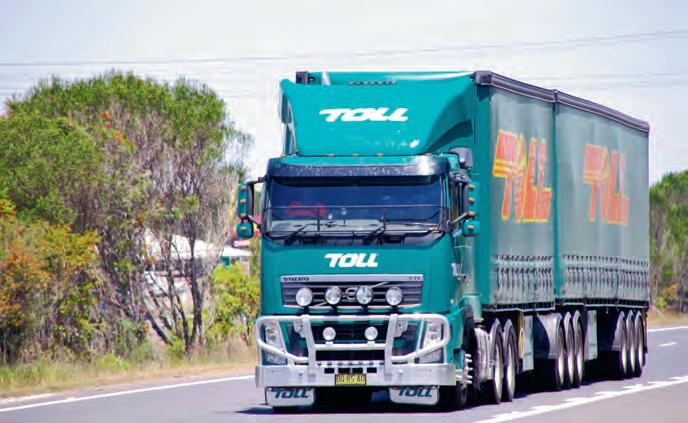
Board and executive leadership team to ensure continuity of operations and a sharp focus on business performance.
“Toll has a proud history and a strong future. I’m honoured to step into this role at a pivotal time and continue working alongside a talented leadership team committed to delivering for our customers, people and partners,” he says.
“My focus will be on stability, execution and momentum as we transition into our next chapter.”
In addition to his extensive experience
with Toll, Knudsen currently advises several private equity and investment firms, bringing strong commercial insight and a global perspective on capital strategy and business transformation. While originally from Denmark, Knudsen has been based in Singapore since 2010. He holds an Executive Master of Management in Supply Chain from IE Business School in Madrid, and has completed executive programs at Harvard Business School, INSEAD, and Cranfield School of Management.
International telematics provider
Geotab has revealed the leading factors that are causing a rising number of distracted driving fatal crashes around the world.
Geotab’s latest report has revealed distracted driving caused more than 3,000 fatal crashes in 2023, with the problem only getting worse.
Using insights from more than four million connected vehicles using Geotab, the company has identified the leading causes for these incidents.
The first factor is unclear phone rules, while cab clutter and eating and driver fatigue also among the top causes.
No real-time alerts and inconsistent coaching are the other main factors.
Geotab says distracted driving can be broken down into three types – manual (taking your hands off the wheel), visual (eyes off the road) and cognitive (thinking about something else while driving).
Distracted driving can include drowsy driving, driving under the influence of alcohol, drugs or medication, eating or drinking or using your phone in the vehicle.
“For fleet operators, distracted driving isn’t just a safety concern — it’s a serious business risk. It can lead to injuries, vehicle damage, rising insurance costs and costly delays. Preventing it helps protect your team and keep operations running smoothly,” Geotab says.
“To address distracted driving in your fleet, you’ll need to understand how widespread the

issue is and what the latest data shows.”
Recent road crash statistics around the world shows that distraction-related collisions caused 3,275 deaths and another 324,819 injuries in 2023, with five per cent of all drivers involved in fatal traffic conditions in 2023 being
reported as distracted at the time of the collision.
Geotab also says distracted driving violations grew by 48 per cent in the first six months from 2023 to 2024, with Gen Z and Millennials aged 16 to 45 accounting for 72 per cent of all distracted driving violations.

















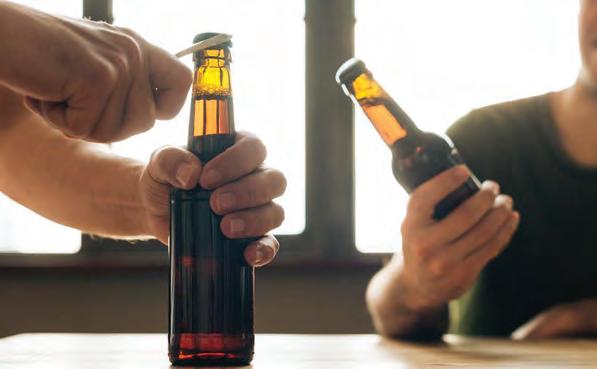


















































































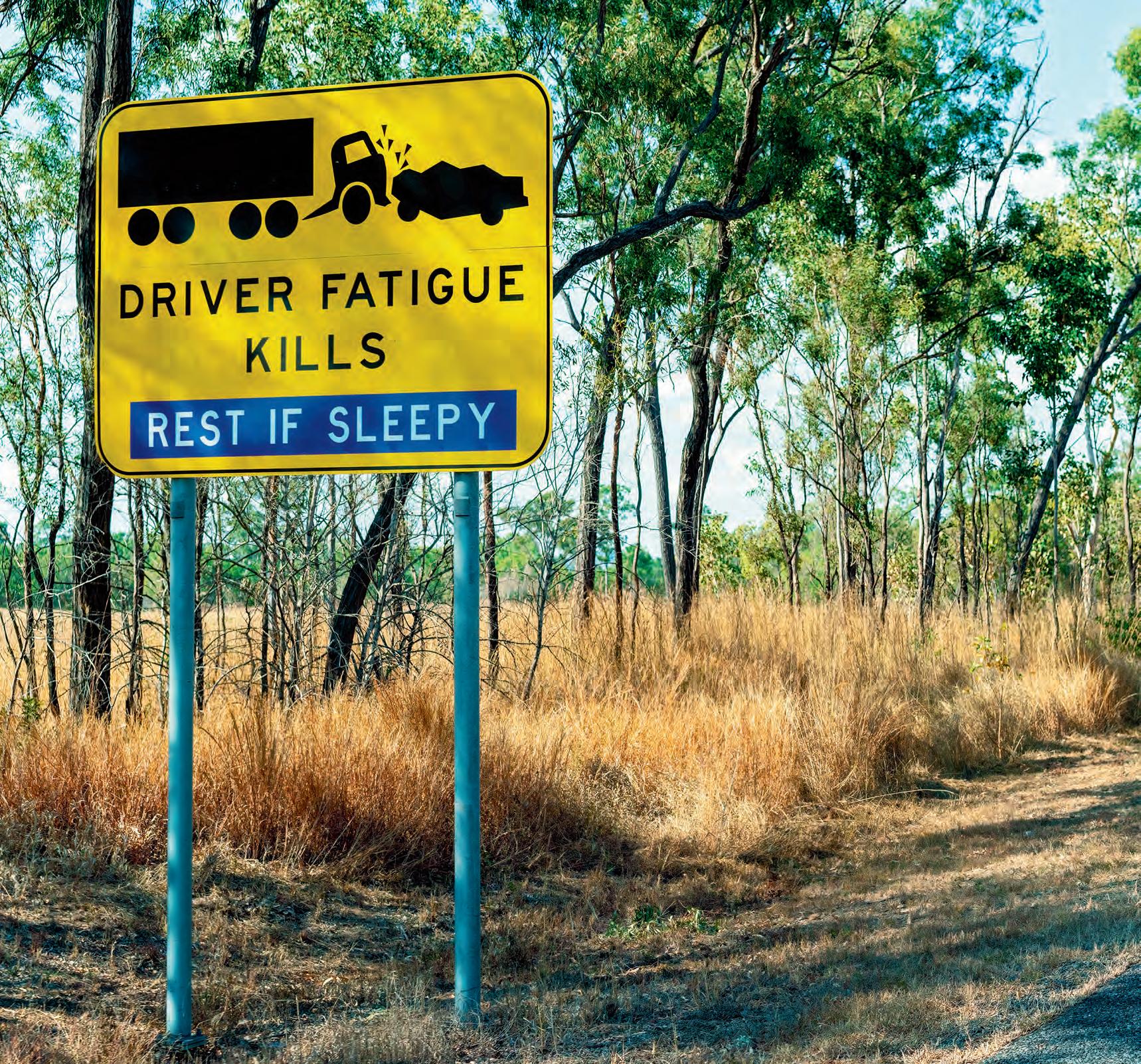
Australia’s road toll is the defining issue currently causing debate and calls for change in the nation’s heavy vehicle industry. Sean Mortell looks at the many factors causing a spike in road fatalities and what can be done to make freight routes safer for all
It’s the call no operator, family member or friend wants to hear. Being woken up in the early hours of the morning. The phone buzzing and the sense of dread taking away all breath from the body and placing it in a chokehold tighter than a wrestler’s headlock. The loss of a person on the roads is a cruel twist of fate that no one deserves to experience. Unfortunately, this moment is happening too much in Australia as the road toll continues to increase. The confirmation that 1,301 lives were lost on Australian roads in 2024 set a 12-year high and has been enough to raise the alarm for many in the heavy vehicle industry.
According to ANCAP crash data, light trucks

are involved in approximately 15 per cent of all fatal collisions recorded on Australian roads in 2024. Light trucks only constitute less than three per cent of all Australian registered vehicles.
Considering the workplace of heavy vehicles are on Australian roads, the call to improve road safety and lower the road toll is particularly vital and emotion charged.
The sweeping issue of lowering Australia’s road toll is one that is keeping many in the transport industry awake at night.
“Fatalities are on the increase across all road users – we’re now losing more than 1,300 lives in Australia each year,” National Road Transport Association (NatRoad) CEO Warren Clark told OwnerDriver.
“This represents a huge and completely unacceptable failure in public policy.”
While heavy vehicle crashes on our roads already have a seismic impact on employers, colleagues and fellow members within the transport industry, ANCAP’s data suggests the effect is also rippling across other motorists on the road. Its latest statistics say more than 75 per cent of serious crashes on Australian roads in 2024 involving light trucks have resulted in fatalities or serious injuries to other road users outside of the truck.
So what is the cause of these worrying trends in the nation’s road toll data? And, most importantly, what can be done by both the industry and governments to curb this rise before more lives are lost?
The complex nature of this serious issue is that there is no single reason or solution. Instead, a variety of causes and ideas are being thrown around to keep drivers more focused and vehicles and roads safer to use each and every day. ANCAP’s data suggests this isn’t working.
“Unfortunately, the trend in the heavy vehicle industry matches that of all other road users,” Clark says.
“Human factors, like inattention and distraction, are still a major factor in road crashes. In addition, too many smaller vehicle drivers are not aware of how to drive around heavy vehicles. More needs to be done to ensure the public is better educated on safe driving around trucks.”
The latter point is shared by others in the transport industry, including Glyn Castanelli, who is the president of the National Road Freighter’s Association (NRFA). While the overall national road toll has risen by 4.8 per cent, the latest March 2025 Heavy Vehicle Road Deaths Report paints a slightly different picture – there’s been a slight reduction in fatalities involving heavy vehicles.
However, Castanelli says this must be contextualised due to the damage heavy vehicle crashes can cause. His take is that the training of other motorists is key to safer trips in and around heavy vehicles that are trying to complete their daily work.
“The biggest factor contributing to these tragic outcomes is the lack of real-world training and awareness among light vehicle drivers,” he told OwnerDriver
“Most Australians simply don’t understand how to drive around trucks. They cut in front, hover in blind spots and misjudge stopping distances. The NRFA supports industry-led campaigns to bridge this knowledge gap through initiatives like the Steering the Future Trailer and the National Heavy Vehicle Regulator’s (NHVR) We All Need Space campaign.”
However, both Clark and Castanelli admit the industry first needs to look inwards before solely blaming light vehicle drivers for the soaring road toll. A pivotal way of ensuring more and more Australian truck drivers operate safely behind the wheel is training.
Castanelli says training is “absolutely foundational”, leading to him supporting the
“Too many smaller vehicle drivers are not aware of how to drive around heavy vehicles. More needs to be done to ensure the public are better educated on safe driving around trucks.”

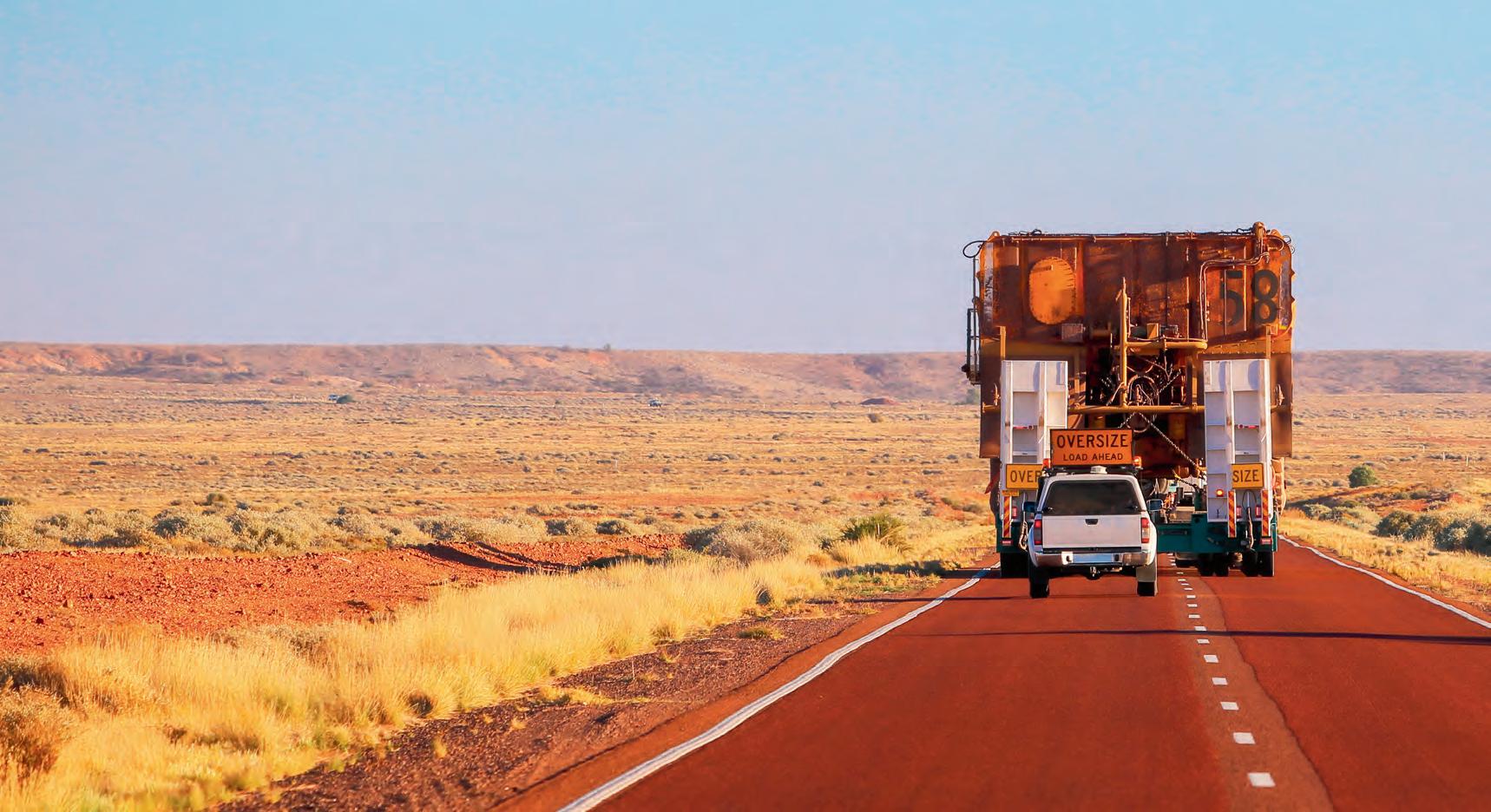
“We have crumbling shoulders, narrow lanes, potholes, outdated bridges, lack of overtaking lanes, poorly designed infrastructure and a shortage of appropriate rest facilities, especially in capital cities.”
Chartered Institute of Logistics and Transport Australia’s (CILT-A) Driver Supervisor Assessment Program that recently received Heavy Vehicle Safety Initiative funding.
“This is a potential game-changer for our industry, especially for small fleets who can’t afford expensive training programs but still want to do the right thing,” he says.
“A licence test alone doesn’t prepare someone for night driving, wet conditions, tight loading docks, fatigue management or the pressure of tight delivery windows. Real-world driver training and supervised experience could save more lives than any compliance form ever will.”
Castanelli says the current mindset of allowing too many drivers to be employed without being job-ready is incredibly dangerous and is playing a pivotal role in the nation’s current road toll issue.
From Clark’s perspective, training is essential. While NatRoad has consistently called for legislative improvements to tighten safety in the industry, Clark says simple and effective driver training is just as important to make the sector’s culture a safer one.
“Safer drivers mean safer roads – we urgently need reform to our licensing and training systems to increase the number of appropriately trained drivers and ensure all heavy vehicle drivers are equipped for the realities of Australian roads and vehicles,” he says.
“The review of the national heavy vehicle driver competency framework is an important step but it’s moving far too slowly. It’s vital that implementation becomes a priority.”
Road quality conundrums
It’s part of Clark’s comments above that raise the next issue in Australia’s rising road toll – the decaying quality of the nation’s key arterials and freight routes is providing another safety factor
that truck drivers must tackle each and every day.
Clark says governments around Australia need to invest more in improving the quality of roads and heavy vehicle rest areas to keep roads safer for all. While landmark funding is becoming more common in recent months, especially relating to the Queensland and federal government’s milestone $9 billion upgrade to the Bruce Highway that is now underway, Clark says this needs to become the norm if Australia’s road toll is to drop.
“Building safer roads is fundamental to reducing fatal and serious crashes,” he says.
“The fact is, every time you improve a road’s safety rating by one star, you roughly halve the risk of death or serious injury. Despite this, governments are not transparent about the safety ratings of our national road network and do not use the star rating scale to determine funding.
“The recent federal government commitment to upgrade the Bruce Highway to a minimum 3-star standard is a welcome exception and should be the model for funding in the future.
“The provision of truck rest areas is also vital to improving road safety and helping drivers to manage their fatigue. Research shows more regularly spaced rest areas lead to better road safety outcomes.
“While we’ve seen encouraging progress over the past three years, thanks to additional federal funding and strong input from industry stakeholders, we’re still facing significant gaps in the quality and quantity of rest areas across the network. There’s much more work to be done.”
Castanelli says Australia’s road network, particularly in regional and freight-heavy corridors, is in “a poor state” and requires fixing. His plan urges the federal government to prioritise freight route upgrades, particularly in rural and regional areas, fix known black spots and dangerous intersections and build modern rest areas to allow for safer fatigue management.
“We have crumbling shoulders, narrow lanes, potholes, outdated bridges, lack of overtaking lanes, poorly designed infrastructure and a shortage of appropriate rest facilities, especially in capital cities,” he says.
“These aren’t just frustrating — they’re deadly, especially for heavy vehicles that rely on predictable road conditions to operate safely.”
Enforcement mantra
A common response from truck drivers in recent times has been the approach to heavy vehicle law enforcement in Australia. Whether it be state police or the likes of the NHVR, the approach taken to ensuring drivers abide by safety laws has led to a wider discussion on enforcement principles.
On Castanelli’s side, he wants regulators to prioritise data-led enforcement, encourage the use of technology and proactive safety systems and listen to grassroot operators who know where the real problems are.
“Regulators need to shift their focus from roadside enforcement to investigating the influence from within the contract chain,” he says.
“Economic customers need to be held accountable for their decisions to engage a risktaking operator. We need an enforcement culture that rewards good behaviour, not just punishes non-compliance.”
Clark also supports this notion of better complementing non-compliance enforcement with a renewed focus on rewarding operators around Australia who are driving safely.
“Enforcement should be risk-based and targeted at genuine safety, not paperwork errors or technicalities that have no bearing on crash outcomes,” Clark says.
“We need to stop penalising drivers over minor, non-safety issues and focus on what

actually causes harm on the roads.”
Outside of this, Castanelli says the current state of the industry is also providing reasons that lead to truckies driving without a rigid focus on safety. Whether it be the economic pressures of falling rates, a lack of a minimum standard of entry to operate or an inconsistent adherence to the law, particularly around Chain of Responsibility requirements, he says this all combines with the previous factors to concoct a “volatile operating environment”.
The modern age of technology is just another factor that Clark can name that has led to an industry playing a central role to the rising national road toll.
“The NTARC’s Major Incident Investigation Report 2024 showed a 27 per cent increase in overall incidents from 2022 to 2023, with humanfactor-related crashes rising by 42 per cent in just one year,” he says.
“Drivers need to be effectively trained to drive to the conditions and avoid distractions.”
The problems have been made clear, the numerous issues have been aired. But this is only part of the road toll conundrum. From here, what can members of Australia’s transport industry do to make their workplaces safer?
In the short-term, Castanelli wants the National Heavy Vehicle Driver Competency Framework implemented in a coordinated way to limit crossborder differences between licensing systems. He also says practical training, apprenticeships and mentoring programs should be funded, particularly for small businesses, while an accelerated investment in critical freight infrastructure is key.
In the long term, he wants truck driver apprenticeships to receive wider industry support, while fair payment and contract terms should be embedded in the supply chain to reduce deadly pressures being placed on operators. Throw in the implementation of compulsory accreditation and safety management
systems alongside industry-led safety innovations and Castanelli believes real change can be made.
“Technology also has a key role to play, but it’s only as good as the people and systems behind it,” he says.
“Tools that help include fatigue monitoring systems, electronic work diaries, vehicle telematics and dashcams and AI-based collision alerts. However, without training and support, technology alone won’t fix the human factor.”
As it currently stands, Clark can’t see the industry meeting the National Road Safety Strategy of reducing fatalities and serious injuries by 2030 unless it “dramatically shifts course”. With fatalities increasing, he wants governments to do more to revise current road safety policies.
“More must be done to fund safe, high-quality roads and to deliver adequate rest areas,” he says.
“It is past time for governments to deliver on independent safety road crash investigations and ensure safety lessons are learnt. Without learning from these tragedies, we’ll never make meaningful progress.”
On the technology side, Clark points out that Safer Freight Vehicles reforms mandate several safety technologies, but these only apply to 2.55m heavy vehicles. Instead of restricting these rules, he wants helpful technology to be made the norm across the entire industry.
“Safety technology, such as devices for indirect vision, lane departure warnings, blind spot monitors and emergency braking systems, should be mandatory on all new heavy vehicles, not just those 2.55 metres wide,” he says.
The final word goes to Castanelli, who provides a timely reminder for the industry. He says that now is the time to push for change before more lives are lost on Australian roads and the heavy vehicle industry is faced with more harrowing calls that permanently alter lives for the worse.
“The transport industry is filled with hardworking, capable people doing their best under extreme pressure, but expecting professionalism without providing professional training is a recipe for disaster,” he says.
“We are seeing good businesses close with dignity and others fall into insolvency from trying to stay compliant while getting paid peanuts.
“We can’t paper over the cracks anymore. If the government wants a safer industry, it’s time to listen to the operators on the ground and back practical, achievable reform. The NRFA is ready to work with anyone committed to that cause.”
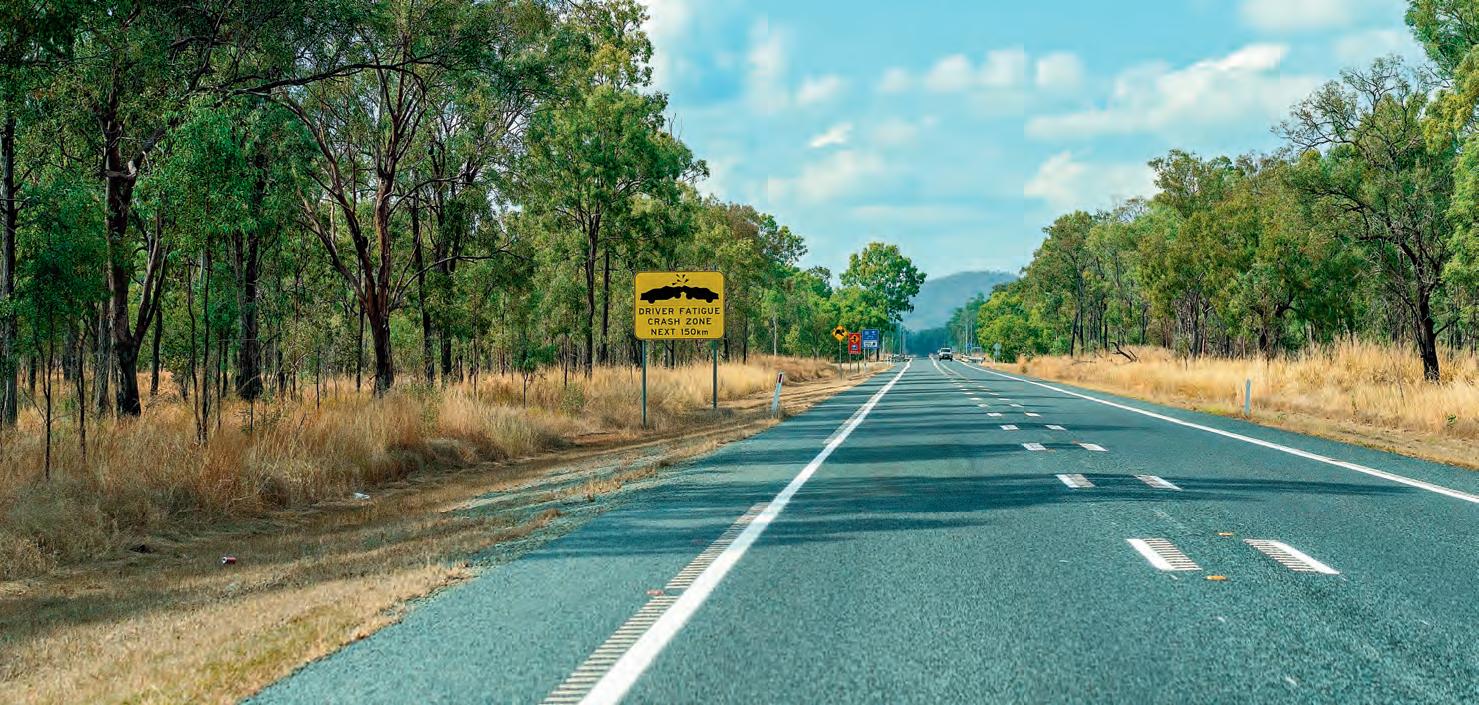









Trucking has always been a dream for James Bankes. Now, after taking a leap of faith two years ago, he’s succeeding under the banner of Bankes Haulage



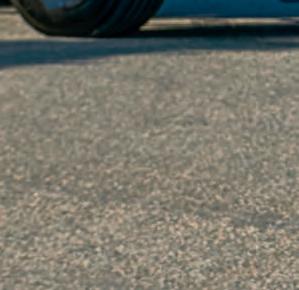
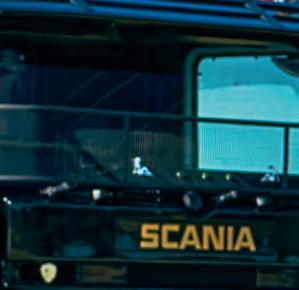




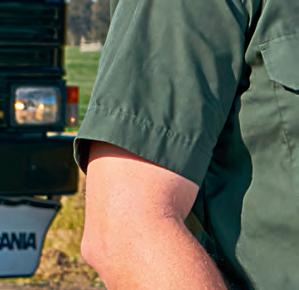


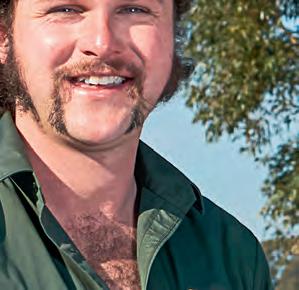


It was two years ago and James Bankes faced a crossroads moment in his life. Up until then, the passionate truckie had always dreamed of owning and operating his own truck, working for himself around the nation. To date, his career had involved a wide range of driving jobs for a variety of employees.
Based in Victoria’s Gippsland region, a lack of work meant he was sat at home, angry. Instead of stewing over a boss who was stuffing him around, James made a decision that he would never regret.
“I was working as a casual driver when I first moved down to Gippsland, but they had a truck break down and they stopped giving me work,” he told OwnerDriver.
“I decided he could have his job and I would do something I always wanted to do – start my own business.”
It was this call that led to the foundations of Bankes Haulage. Two years on, James is now excelling behind the wheel of a unique truck and living the owner-driver
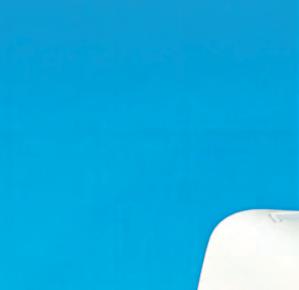
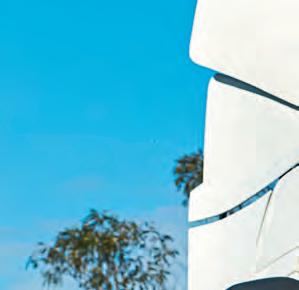



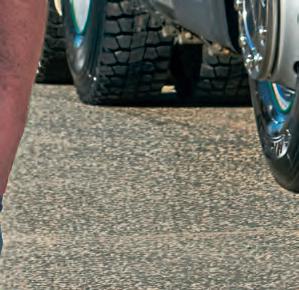


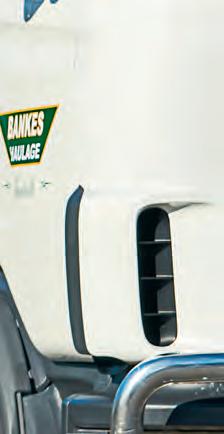
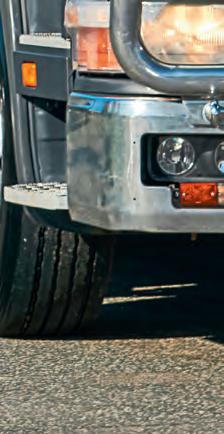
dream. That doesn’t mean his journey to this point has been smooth sailing.
James has wanted to work behind the wheel of a truck for as long as he can remember. His first memory of trucks was heading to the supermarket as a kid with his Mum and running off. Where did he end up, you ask? The loading dock out back, talking to a truck driver about his vehicle and the engine.
“I’ve been fascinated in trucks since I was a little kid,” he says. “Which is funny, because neither of my parents have been in the industry. I just really loved trucks and always wanted to get into the industry.”
His passion turned into a career at age 15 when he started washing trucks at Hilders Transport in Rowville, Victoria. From there, he began a school-based apprenticeship for a couple of years at Altona before progressing to forklift driving in Dandenong.
From there, his experience continued to amass and he began gaining his qualifications, starting with his
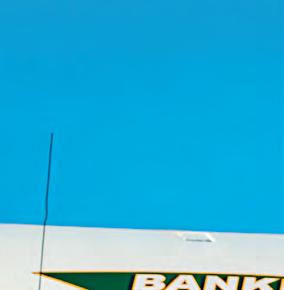

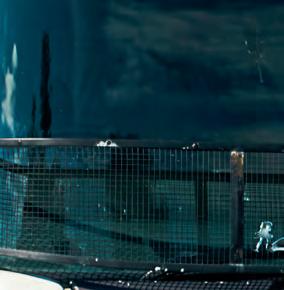
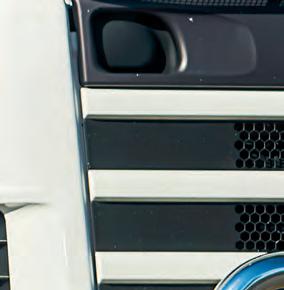

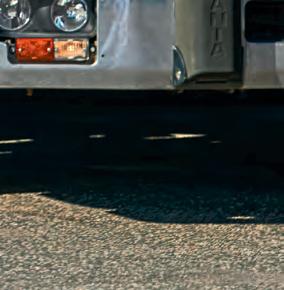

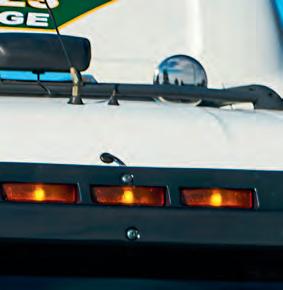


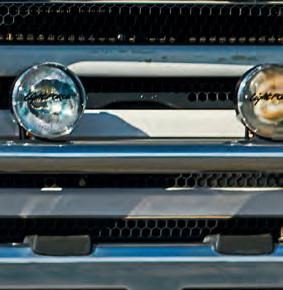

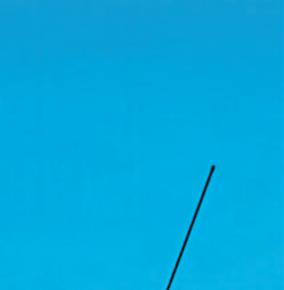
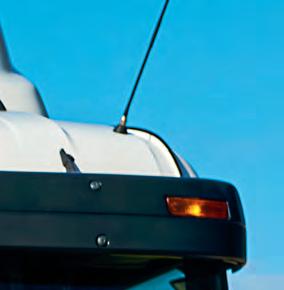
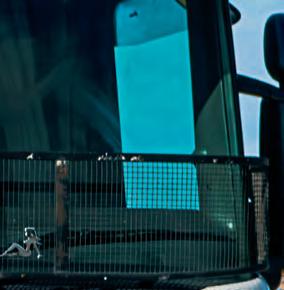
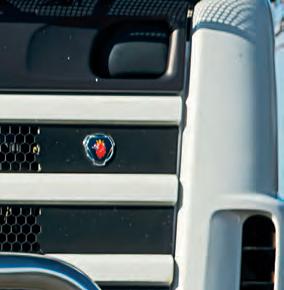
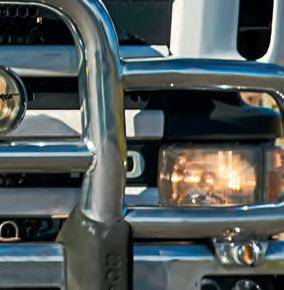


Images: Scania Australia



medium rigid licence. This gave him the opportunity to drive trucks for the first time in Hallam, hopping behind the wheel of a Fuso.
“I loved it and looked after it very well, I added some bling and kept it tidy,” he says.
“After about 12 months of working there, I got my heavy rigid and heavy combination licences, as well as my dangerous goods tickets.”
A 1993 International single-axle ACCO was next on the list for James as he began doing fuel tanker work.
A variety of trucks were to follow as James went from Koo Wee Rup to working for transport giant Linfox, running semi-trailers for the best part of five years for Woolworths.
However, the beauty of the Australian transport industry is the many mentors that guide younger drivers through the challenges of trucking each and every day. James’ mentor is Kevin Nesci at Nesci Transport. After starting work with him at the age of 23, James gained an important industry friend for life before returning to his array of jobs at major transport companies.
It all culminated in 2023 when James found himself in Gippsland and without work. His longstanding dream of wanting to buy and run his own truck and control his own work came to mind. Like many great operators, James took a leap of faith.
“That was when I started Bankes Haulage – I always wanted to do it and I thought that if I didn’t do it at that time, then I would never do it,” he says.
“At the time I also had my eye on a black Scania tray truck for the best part of six months and the price was slowly dropping, so I thought it was the perfect way to start. It wasn’t the riskiest investment, but I had some embroidered shirts, business cards and flyers made and off I went.”
The origins of Bankes Haulage are modest – James began his solo journey by knocking on doors for a couple of months in Gippsland’s industrial areas, looking for work. It was a slow approach, but it paid off when he landed a couple of gigs through the old-school method of shaking hands and putting himself out there.
After a solid start, a change in his personal life gave Bankes Haulage the opportunity to grow in a different area of Victoria.
“It was becoming more and more evident that the solo gig wouldn’t be a long-term proposition while I was in Gippsland,” James says.
“At the time I also had my eye on a black Scania tray truck for the best part of six months and the price was slowly dropping, so I thought it was the perfect way to start. It wasn’t the riskiest investment, but I had some embroidered shirts, business cards and flyers made and off I went.”

“I have always been passionate about Scania. I had a collection of Saab cars as well, because of the Saab-Scania affiliation. I’ve just got a real passion for the brand and the design.”
“At the same time, my relationship broke down and I moved back to my home in Grantville.”
James took the same approach of door knocking and hand shaking to the Bass Coast Shire, near Phillip Island. It paid off in spades.
“Being closer to Melbourne, I thought I had a better shot at succeeding in Grantville,” he says.
“I could’ve sold my trucks at that point and headed back to the good jobs I’d done before, but I wanted to at least find out if I could try and succeed.
“I went around Dandenong and Pakenham, dropping off business cards and flyers and speaking to people. I was lucky to bump into Brad Gourley, who runs Gourley Enterprises in Pakenham, when he needed a tow operator.”
The timing was exceptional, and James had his big break in the owner-driver game. He now currently successfully works for himself, paying his own way and staying very busy behind the wheel. He only operates as a tow operator, but now his success has allowed him to add another vehicle to his fleet.
The origin of Bankes Haulage saw James use a 1985 Scania P112M rigid with a tray in a distinctive black wrap. However, when clients told him they wanted him to use a prime mover to pull trailers, he bought a 2001 R124L 4-Series to cart precast concrete panels and steel.
Now, as he plans to downsize and condense his fleet, this current model is leading the way in his recent success.
“Moving forward, I’ll swap a rigid to a trailer to tow behind the prime mover so I can do a bit of anything,” he says.
This takes us to the other part of James’ love for trucks in his collection of older Scanias that he has been building for some time. As a kid, he remembers having Scania posters on the wall and collecting the brochures. While he started working in a variety of trucks when he entered the industry, at age 21 he bought his first Scania in a 1977 LKT111 as part of a restoration project.
From there, a 1978 LKT141 was acquired and quickly changed from a parts truck to a restoration project yet again. With Scania also dominating Bankes Haulage’s small fleet, the European brand is a key focus for the passionate truckie.
“I’m currently in negotiations to swap out some of the older trucks, to condense the fleet of old historic trucks, and I’m on the lookout for a T143 V8,” James says, confessing to being very keen on Scania V8s.
“I remember when the 730 V8 came out. I went down to Scania Dandenong to have a look at it. I have always been passionate about Scania. I had a collection of Saab cars as well, because of the Saab-Scania affiliation. I’ve just got a real passion for the brand and the design.”

James’ current 4-Series Scania has done around 1.8 million kms and is still running at 24 years of age. He says it drives like a modern truck, remaining quiet and comfortable as well as fuel efficient.
“I do most of the maintenance myself, and anything larger, I give to Kev in Leongatha,” he says.
“I’ve been doing a little bit of work for Kev for a few years, and his mechanics, Tim and his son Hayden, will do anything that I can’t tackle. They’re really gifted mechanics.
“In fact, I started working for Kevin after I saw an article about him in the Scania magazine, about 10 years ago. I remember reading that and seeing the photos of the beautiful silver trucks. I just thought ‘I’ve got to go and have a drive of them’. I did in fact end up driving their R620 V8s and their 730s.”
To this day, James still has his Scania 4-Series posters. With Kev as a constant mentor at his back, the truck nut is continuing to enjoy his owner-driver lifestyle. For those wanting to follow in his footsteps, he says research, education and financial pillars are critical to not falling at the first hurdles.
“Mum and Dad have been a great help and very supportive,” he says.
“I’d tell people who want to go out on their own to do research, do some more and then do some more again.
“I went out pretty half-cocked and made an emotional decision. I was lucky I had savings to start and didn’t have to borrow money. I’d advise people to do the maths beforehand and ensure it’s worthwhile and what you want to do.”
While the owner-driver life isn’t for

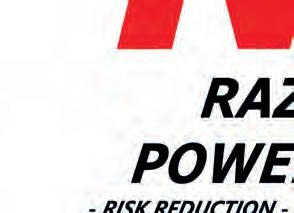

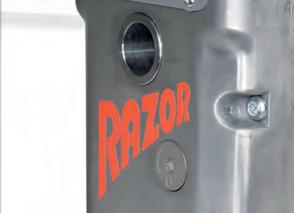

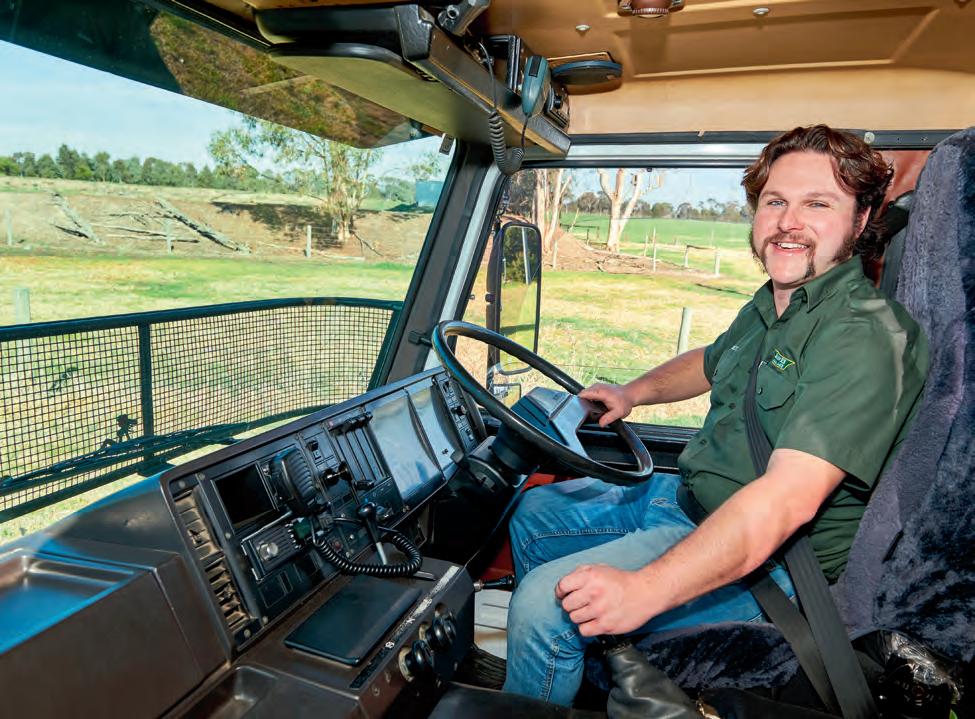
everyone, James has made it his own in the past couple of years. Backed by a love for trucks (particularly Scanias), a strong industry network and a belief in himself, he’s a shining example in tough times for operators that success can still be found in trucking solo.
“My best advice is if you want to do this, don’t listen to anyone who tells you that it’s impossible,” he says.
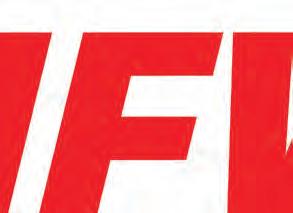
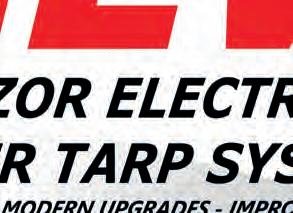
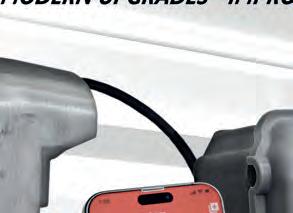



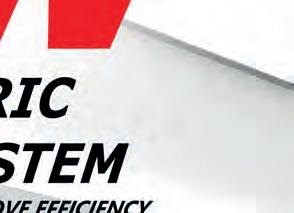


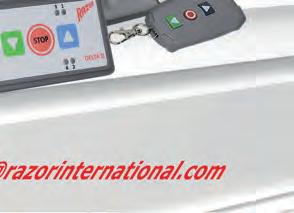
“I remember a lot of older drivers who got out of the game telling me not to, but I knew I was always going to do it, and I’m so glad that I did.
“If you can learn how to run a business, have good support from friends and family and have good mentors like I’ve had with Kev and Brad, you can succeed in the industry for many years.”

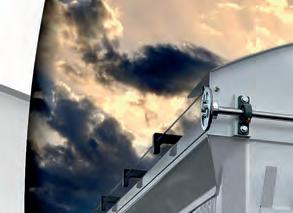
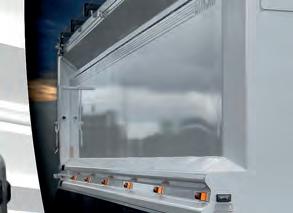






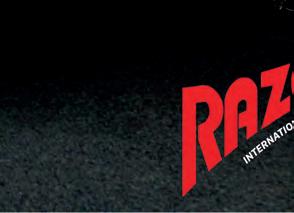


We’ve known for a long time that road transport is in dire need of reform.
It’s why the whole industry has come together to campaign for and win laws that will let us start making road transport better.
Road transport is more united than it’s ever been – but that doesn’t mean there are no opponents. Wealthy clients like Amazon and Aldi, and the employer groups representing them, always put up the same tired arguments. The one that comes up again and again is that increasing standards for drivers and transport operators will harm productivity.
But new research has shown that the opposite is the case. A report by transport not-for-profit TEACHO has revealed transport operators suffer as one of the lowest profit segments in the economy. What’s more, though road transport languishes with profits two-thirds less than the national average, the clients it provides services to have much higher profits.
This is despite road transport providing billions to the economy. Of course, this will not be surprising to anyone who’s working in road transport. As decades of research have shown, these low profits have huge flow-on effects for the drivers and operators carrying out the work in this industry. The new study demonstrates that large client profits are built by increasingly shifting work to cheaper, more dangerous operations.
The number of single contractors doing work is increasing, and increasing exponentially – and there’s nothing wrong with that in principle – but the problem is, it’s increasing in the wrong areas – like Amazon Flex, where there are absolutely no standards.
When the gig economy first came to our shores, the alarm bells were already ringing. We recognised as an industry that, with standards already going sharply downhill, we’d be left with nothing if something wasn’t done.
The combination of transport clients putting a deadly squeeze on contracts, and the lack of standards in the gig economy, has had devastating human and economic consequences – for not just the industry, but the whole Australian community.
As it turns out, the squeeze on transport operators and drivers, meaning drivers have to work increasingly longer hours, severely reduces productivity in the industry. The more hours a driver
works, the more productivity declines.
And the lower the wages, the less incentive there is for people to stay in the industry – again increasing the workload for those who are left, and further reducing productivity.
Unpaid queueing is the same story –not only does it disadvantage drivers and operators, there are efficiencies lost because of a lack of incentive to improve waiting times. As well as productivity loss, razor-thin profit margins have dire safety implications.
Transport operators and drivers forced to cut corners to make ends meet. We know how desperate the situation is. We are nearing 100 people killed in truck crashes in Australia just this year, 30 of them truck drivers. Over 600 transportrelated businesses have become insolvent in the last financial year.
With deadly pressures on our roads and businesses going broke left, right and centre, it’s clear how drastically we need decent standards in this sector to save lives and improve productivity. The Aldis and Amazons of the world will argue the opposite – that we should have fewer standards. But we’ve seen what the research shows. And the people in this industry have lived experience of that.
Of the long hours, the pressures to meet deadlines, the choice between vital truck maintenance or putting food on the table.
By the time you are reading this, a transport roundtable focused on productivity will have taken place.
The federal government, since it has been in power, has sat down and listened to several delegations of the road
is the
of the Transport Workers Union of Australia. Contact Michael at: NSW Transport Workers Union, Transport House, 188-390 Sussex Street, Sydney, NSW 2000. twu@twu.com.au
transport industry. That includes drivers, transport operators, large and small employers, industry associations and academics.
We now have applications in progress to put in place standards like maximum 30-day payment terms, rights for food delivery workers and a decent floor in the last mile sector to stop the race to the bottom.
What we will continue to make clear –as an entire industry – to the government is that these applications under the new system are well on their way to making significant change in road transport. Lifting standards in road transport will increase productivity. We have new research to prove it. But much more importantly, it will improve safety in the deadliest industry in this country.
We cannot continue to keep seeing this low profit squeeze from the top of road transport supply chains, with drivers and operators bearing the deadly pressure to work long hours, as well as low wages causing skills drain and critical shortages in the industry. This transport industry roundtable is another chance for us to keep making the case that we need decent standards. This is much more powerful as a united front and backed by research that shows low profits and long hours are a barrier to productivity.
It’s research that’s back by all corners of road transport – from clients like Coles to transport businesses like Toll and Linfox and by ARTIO, NatRoad and the NRFA. It was undertaken by internationally renowned academics Dr David Peetz from Griffith University and Professor Michael Belzer from Wayne State University after being commissioned by TEACHO.
With automatic rights now in place against unfair contract deactivations, and consultation on standards applications close to complete, we’re well on our way to seeing change in road transport. We’re not stopping there.
Next year the TWU has aligned over 200 Enterprise Agreements to expire right across transport, in road and in aviation. We need to see transport clients funding decent standards to see real gains in productivity, driver retention, safety and health outcomes. And whether they’re on board or not, we’ll do it in every possible way we can.
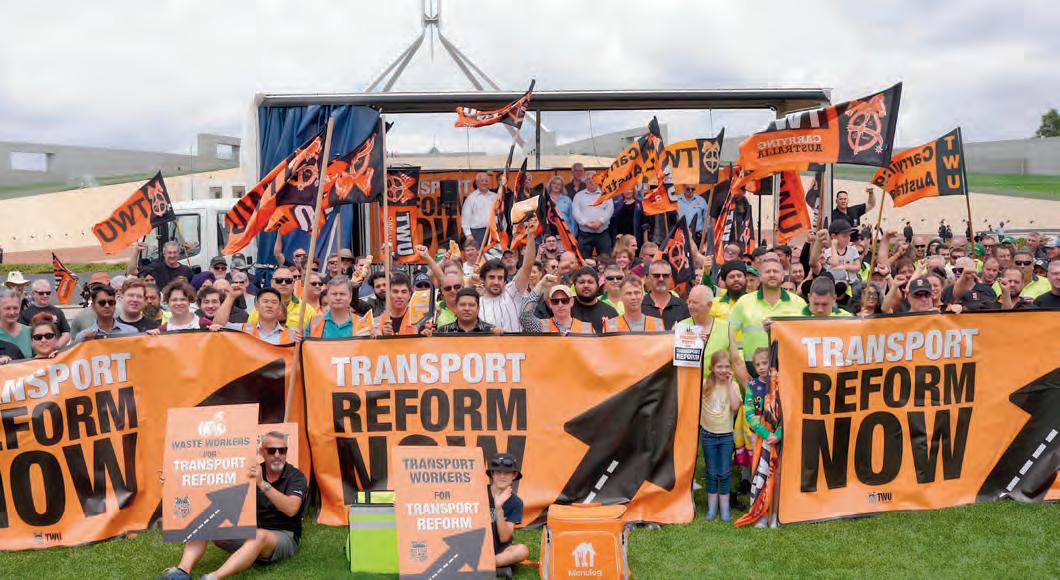

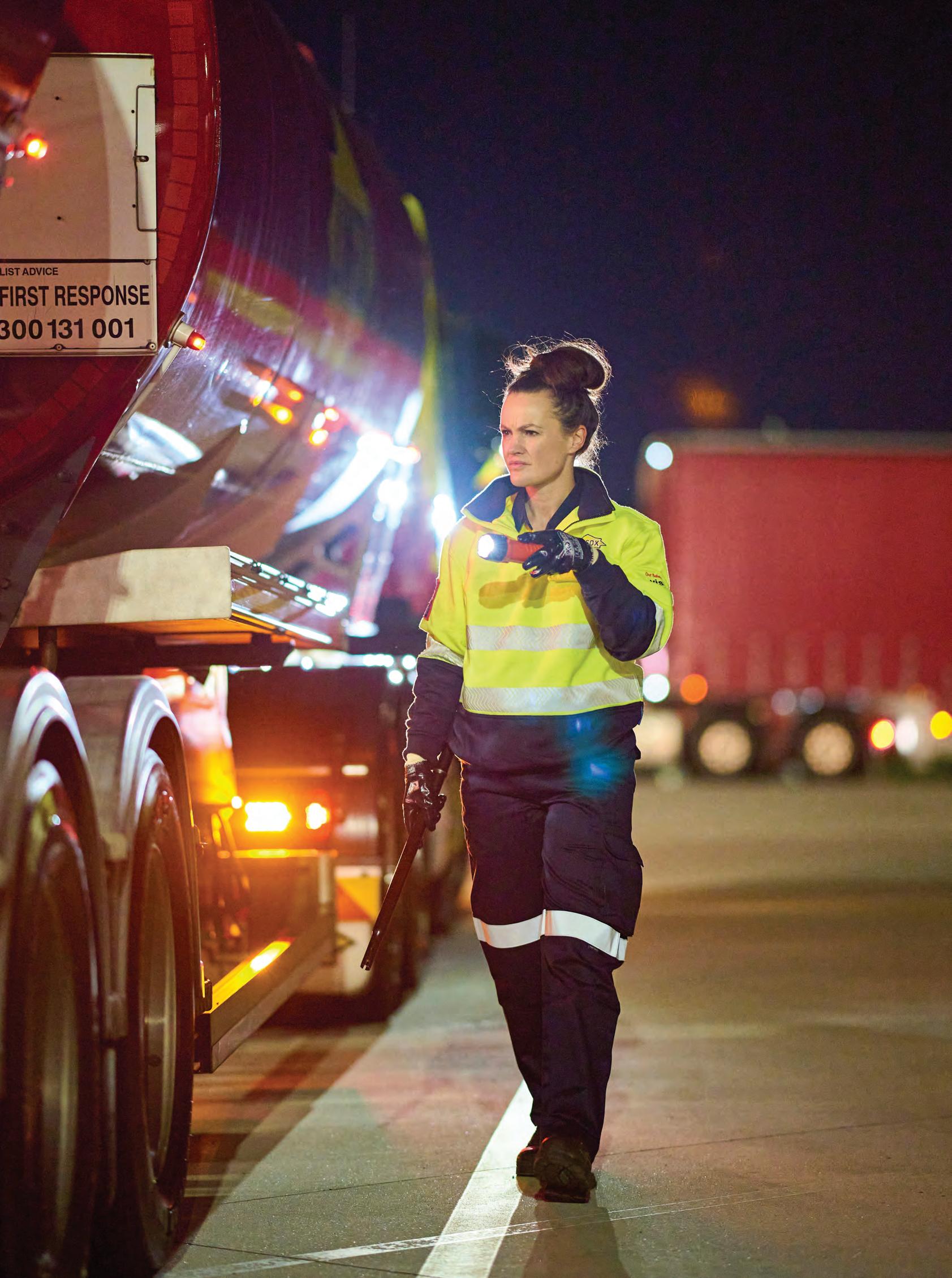













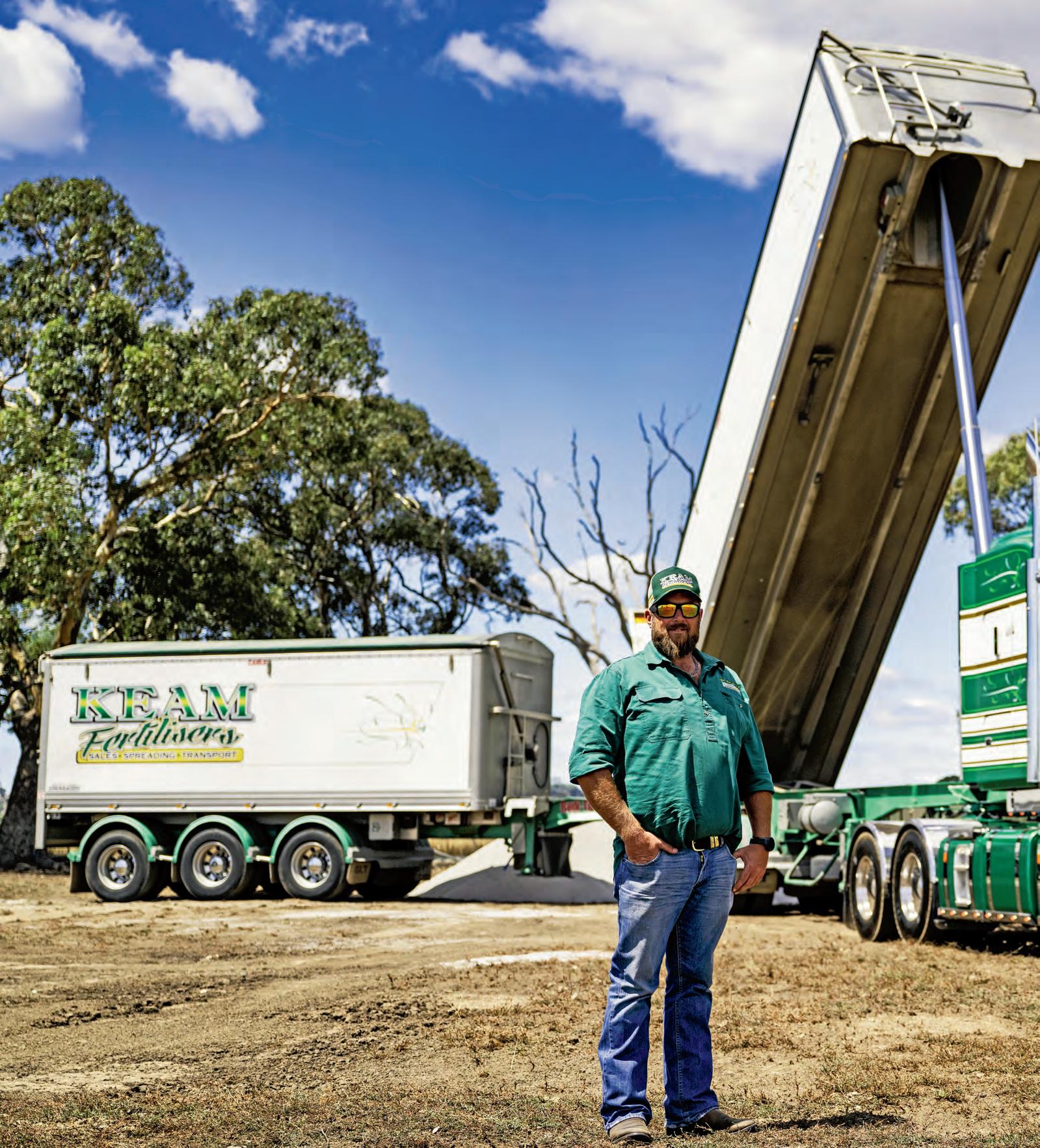
After a recent pivot into harvest work, Luke Keams decided to concoct the perfect Mack to suit his growing list of wishes, Warren Aitken writes

The old saying goes, ‘never shop hungry’. For obvious reasons, there are major downsides and consequences. Shopping hungry leads directly to poor choices and a trolly full of diabetes.
Another old adage is ‘never shop angry’ for fear of similar poor choices, or trolleys full of regret and no return clauses. However, there are always exceptions – Cinnabon is the exception to the ‘never shop hungry’ claim because there’s always room for Cinnabon and, when it comes to exceptions for ‘never shop angry’, I have tracked down a 120-tonne rated exception.
Down in the tiny Victorian town of Wangaratta is where I found Luke Keams and the striking green, gold and white Mack Super-Liner that is the end product of an angry shopping spree. While the origins of this mighty Mack may have manifested from frustration and discontent, the angry shopping spree has delivered an epically cool truck and an extremely happy shopper.
Keep in mind I am using a fair bit of artistic license when I credit this creation solely to an impulse angry reaction. There was obviously a lot more going on behind the scenes – however, to quote another old saying, ‘never let the truth
get in the way of a good story’.
Luke Keams had been actively looking for a new truck and this whole adventure began because he had been approached by a salesman who offered a build spot for the kind of truck he wanted. It was down the line a bit and would ideally be rocking up after the next harvest season, so Luke jumped at the offer and got back to doing what he does best – working his butt off.
“We got busy, fertiliser season went through, and I figured that the truck would be almost due,” Luke says.
“When I rung up, I found it didn’t even have a build date. I was very disgruntled at the time.”
He used words with less letters, but my artistic license won’t let me print those.
“So, I walked down the road into John Templeton’s office at CMV Wodonga and said, ‘I want this, this and this, can you build it?’ I was shopping very angry,” he says.
John’s reply was like any good salesman – ‘Yes, yes, yes, and let’s build it’. It was the reaction Luke was after and, as his anger dissipated, his excitement and enjoyment levels skyrocketed.
“I had an awesome time with this build, I knew we weren’t going to make it for harvest, so we just took our time,” he says.
“I wanted a big truck and, dealing with John, and then Ryan at BlingHQ, it was really good.”
We should jump back to the angry shopping bit and delve into exactly what Luke was shopping for and also why. The why is fairly simple – Luke needed a new truck to add to the ever-increasing workload of the family company he started back in 2015 in Keams Fertilisers.
“I’ve grown up around trucking, it has always been a part of my life,” he says.
“As a kid, I was 100 per cent a truck nut. I remember when I was real young, Dad was doing stock, so when I was good, I’d get to go with him. I remember an old T650, and I also remember a K100E too.”
Luke’s Dad Allan ran his own trucks as well, beginning with a Volvo body truck carting local produce, then getting his own Kenworth K100E and semi to move greater volumes of produce. Allan ensured his son’s formative trucking years were stacked with learning experiences from stock to produce, linehaul to float work, and let’s not forget the mixture of working as
Below: It is always inspiring to see the Australian Made sticker on another impressive ride
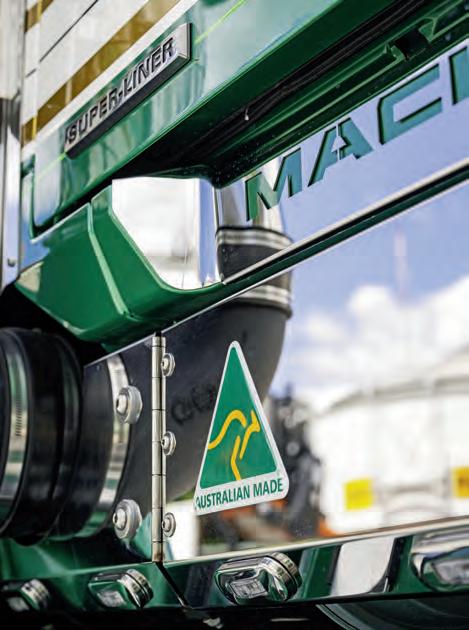




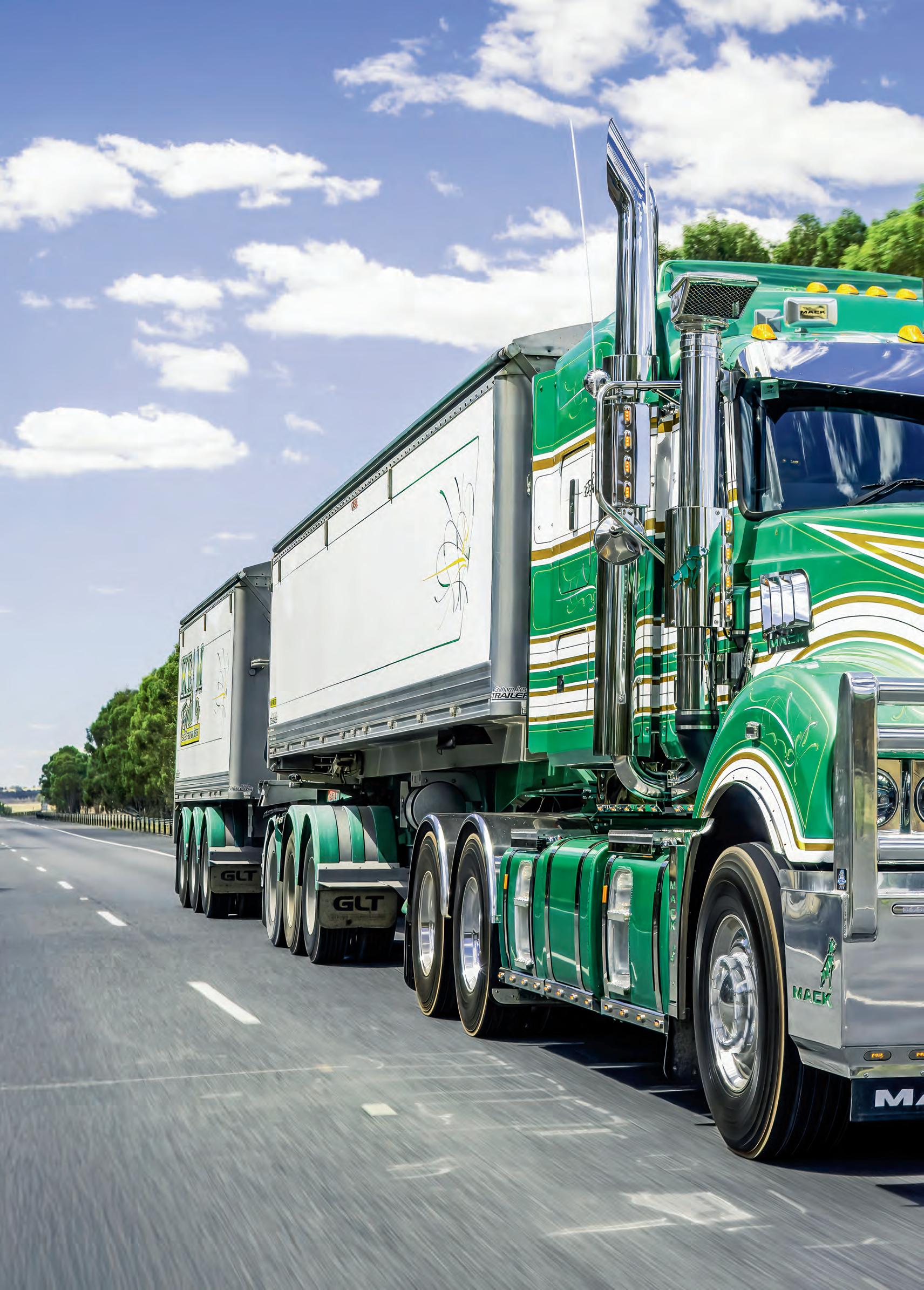




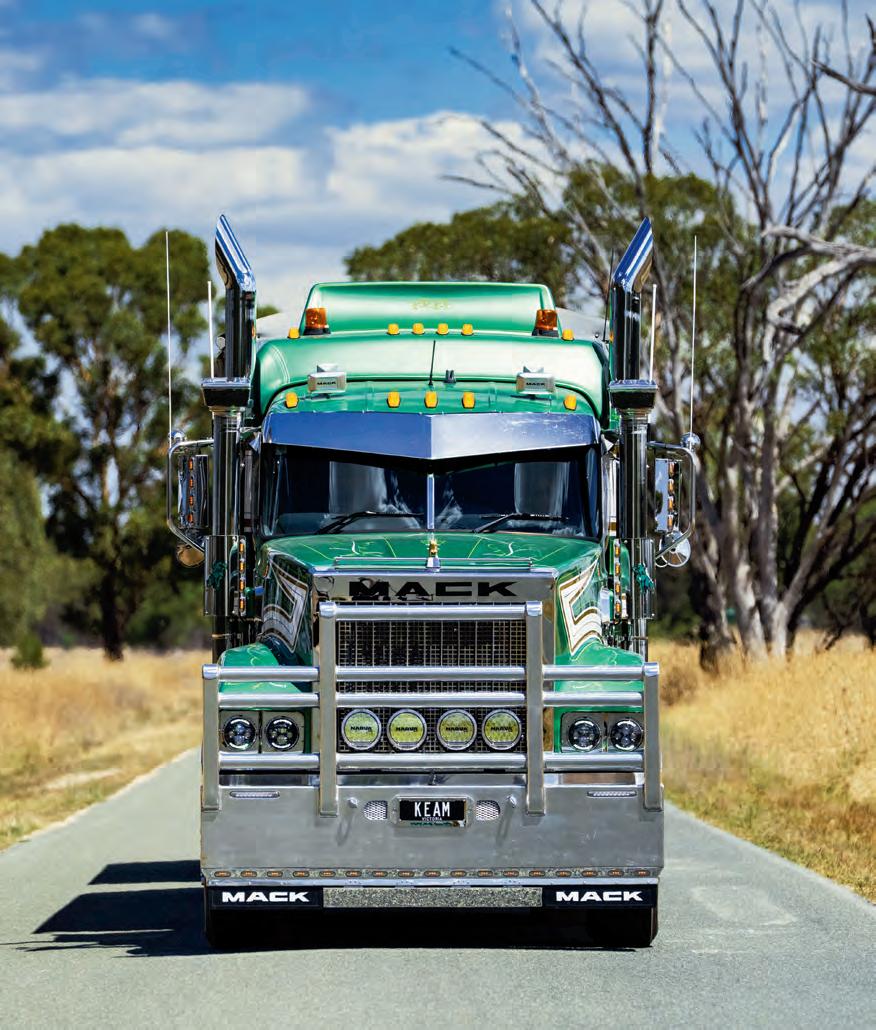
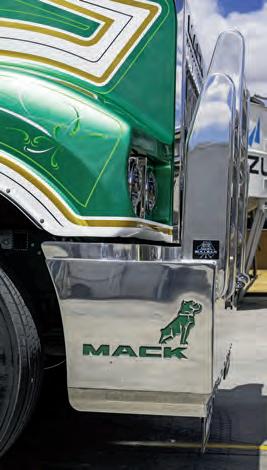
a company driver as well as his owner driver years. Luke got to experience the learning curve of trucking from a very young age. Eventually that road would lead to Luke partnering up with his Dad carting logs around the Wangaratta area.
However, it wasn’t a direct route to a logging truck career for Luke. Like a lot of us, schooling was more a 10-week interruption between school holiday truck trips than it was a vessel of education. Hence Luke took the opportunity to ditch the school bells as soon as he could and undertook an automotive apprenticeship.
“I was doing light vehicles then, but the dealership closed up and it was really tough for a fourth year apprentice to get work in garages then,” Luke admits.
“So I ended up doing a bit of farm contracting. I was getting to drive all the tractors and trucks around on the farm. I did that for a few years.”
Although he loved the farming life, and the agricultural lessons he absorbed would eventually play a major role in

“The SAR Legend was the first truck we got to fully design the colours and lines on. I spent hours with paper and pencils designing it. When I got to do it with the Mack, I decided to reverse the colours and just add some gold in as well.”
his life, at 21 he packed away his wellies and headed back to work for his old man, who was now running his own log trucks.
“I was in an old International S-Line, doing pine and then eventually moving onto hardwood,” he says.
“As that grew, we bought other trucks. Dad bought a Mack Trident brand new and we also had a 650 day cab.”
Now, bridging the gap between Keams Transport Services carting logs and Keams Fertiliser specialising in carting supplying and spreading bulk products may seem like quite a leap, but the chasm narrows when you factor in the family’s ability to pivot with their work. From the logging side, Luke was starting to get a bit of grain work for the trucks on the side. The Mack Trident ended up getting stretched and retrofitted with a bunk and Luke soon became a permanent grain carter.
Soon enough, Allan was folding down the bolsters and hooking up to a tipper set and joining Luke in the harvest season.
“It was great, we’d both travel around together a lot, doing the season,” he says.
“Over time, Dad bought a couple other new trucks, including a Mack Super-Liner as well.”
All of this was in the early part of the 2010s, around the time Luke and his then-partner Amy were welcoming their son Harrison into the world. Luke was feeling the effects of extended periods away and wanted more quality family time at home.
“I wanted to be home a bit more with the family and was talking to a local bloke here in Wangaratta with a fertiliser business,” he says with the typical Aussie can-do spirit.
“He was looking to get out and I realised there really wasn’t anyone doing the whole deal – selling the fert, carting the fert and spreading it. So, it all rolled into one and we decided to give it a go.
“This was me going out on my own, but Dad helped me out again. I bought my first spreader and Dad leased me the old Mack and I got into it.”
The work involved carting recycled glass out of Wangaratta down to Melbourne, then taking fertiliser back up. It would be a 3am start and back to the depot by lunch, where he’d swap hats and load up the spreader with the fertiliser he’d brought up and go fulfil the orders that had been coming in while he was on the road.
The successful concept grew quicker than the crops Luke was cultivating, and soon enough the business was accumulating more trucks, more spreaders and more drivers.
“After the first year, the work just exploded,” he says.
“Originally the truck side of it was meant to be a fallback to keep us doing something if the fertiliser and spreading was quiet, but it just got busier. It is a small community and people like that they can get it all taken care of with one call.

“They liked not having to call someone to buy the fertiliser, then another person to pick it up and another one to bring it out and spread it.”
2015 was the birth of Keams Fertiliser and, within two years, a second truck was added.
“We started with second-hand trucks, every cent we were getting we put back into the company,” he says.
“The second truck was an old K104. Then we bought a second-hand K200 and also a second-hand Western Star. We were buying new trailers but towing it around with older gear.
“By 2020 we could see it was costing a fair bit to keep the trucks up to spec, so when they released the Kenworth SAR Legends, I decided to order my first brand new truck. I was a big fan of the old-school set-up of the Legends, so it was an easy decision.”
The steady solidification of Keams Fertiliser and the steady increase of clients led to the need for more trucks and eventually led to Luke’s angry shopping at CMV in Wodonga. Obviously the bulldog brand had been part of Luke’s DNA before – he leased the old Super-Liner off his Dad to get the business up and running, as well as having quite an affiliation for the old Trident he had began his grain carting career with.
“I’ve had Macks before and loved them. The Super-Liner out there (referring to the original Super-Liner parked outside that still waves the Keams flag on the road) was one of the last with a Cummins motor in it,” he says.
“So when I marched into John’s office, I knew what I wanted, I laid it all out and John was awesome in helping me get everything I wanted.”
The list of requirements revolved mainly around the decent wheelbase and the heavy duty, big truck.
“I didn’t get everything I wanted as it just wouldn’t work. I wanted the 62’ bunk but I also wanted the big pipes up the side, but with that being an American sleeper, they couldn’t alter it,” he says.
“They could make it work with the 58’ bunk though. I was really impressed by the broad range of options
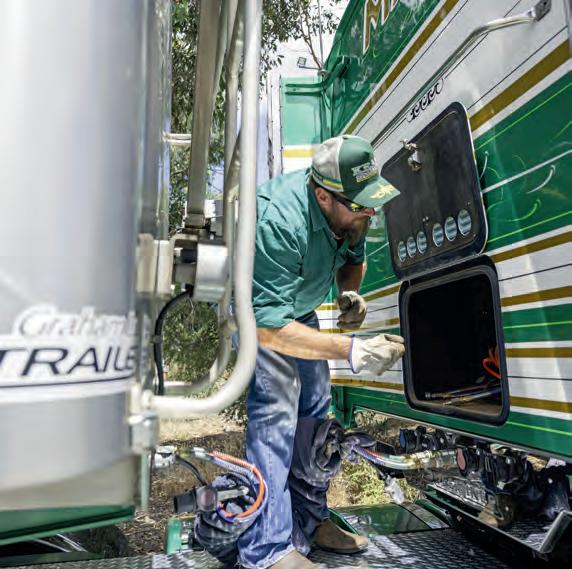
when it came to setting up the Macks, especially with the sleepers. You can do so much with the interior and sizes.”
Another spec that was on Luke’s shopping list was the mid-rise roof with the dovetail. Purely for cosmetic uniformity, knowing the truck would have a set of tippers behind it, Luke wanted the flow-through look that would come with the mid-rise roof.
There were also a few options that John helped steer Luke towards as well, such as the Champion Bonnet that can now be factory spec’d on the Super-Liners.
“I knew nothing about them to be honest, I got shown some photos of the big square bonnet with square guards and square bonnet with the round guards,” Luke laughs.
“It looked cool, John had another one he was building and he rung me one day when it was in and said to come
Opposite from top: The custom Mack bonnet that can now be optioned on the Super-Liners adds some old school staunchness to the new school Macks; Colour coding the Mr Bullbar bar is just another example of the detail in the big Mack; The BlingHQ designed exhaust cover certainly changes the look of the new generation Macks for the better

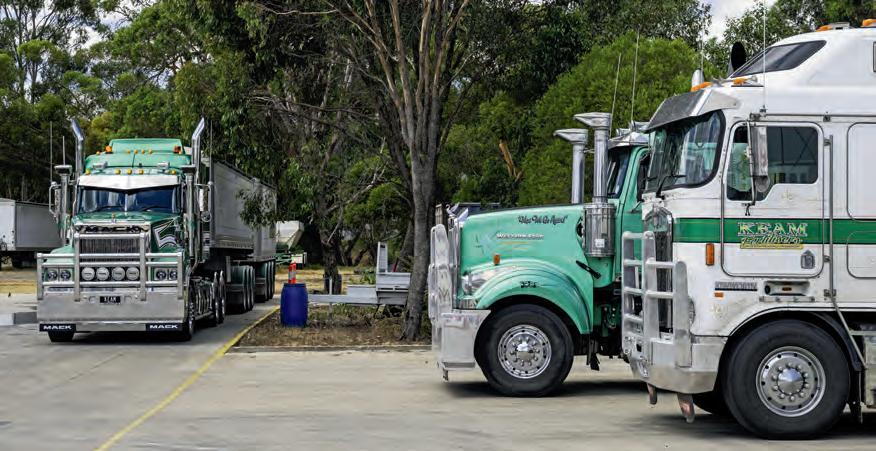
Top: The Super-Liner may be the biggest in the fleet but the Mack is amazingly manoeuvrable in the paddocks and farms where it plies its trade
Above: There are a few brands wearing the Keams Fertiliser moniker, but the green stays prevalent through them all. The big Mack was painted up in an opposite reflection of the other fleet trucks
Below: You can see the work that has gone into the exhaust cover. While there were concerns about the heat, so far there have been absolutely no issues at all
down and have a look at it, and as soon as I saw it I said yes, order me one of those.”
When it came to dressing the new ride and fitting the fancy parts, Luke had pretty strong ideas about that too.
“Colour-wise, I’ve always like green. All the second-hand trucks we’ve bought have just happened to be green,” he says.
“The SAR Legend was the first truck we got to fully design the colours and lines on. I spent hours with paper and pencils designing it. When I got to do it with the Mack, I decided to reverse the colours and just add some gold in as well. So, it’s the same set-up as the Legend, but with more green.”
With the Big Mack getting built up in Mack’s Wacol factory, the truck went off to Bel-Air for the paint job.
“The guys there were great, they’d sent me photos when
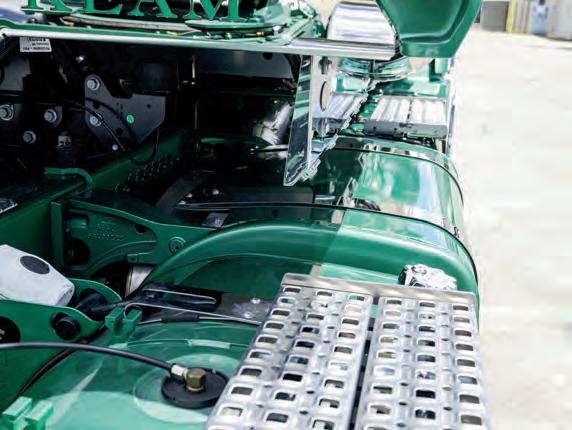
they were lining it and let me make adjustments, so it suited the truck better. They were really good,” he says.
When it came to the exterior additions, Luke had a few concepts that he knew were different but was pushing for anyway. It was the team at IcePack Services and BlingHQ that ensured Luke got what he wanted.
“My first priority was seeing if we could do something about the exhaust cover on the driver’s side of the Mack, so John introduced me to Ryan at BlingHQ,” he says.
“Ryan is great at what he does, loves what he does and basically said to me, ‘mate we can do anything you want, I just need the time’, I told him I wanted this to be cool and left him with it.”
Now, armed with that information, look at the photos again. On the driver’s side, the exhaust has a full cover over it, giving a three tank look to the big rig.
“We still have the cover, as there is a lot of heat around there and we weren’t entirely sure how a cover would go. But the way Ryan built it, we haven’t had any issues,” he says.
On the passenger side you will notice the Icepack Services team have designed a similar cover for the side mounted Icepack system, giving the truck a very universal look.
Obviously, fixing the exhaust cover was just one item on the BlingHQ to-do list.
“Ryan has very good taste, after I met with him the list had gotten bigger, and I just left it with him. He knocked it out of the park though. I wanted a cool truck and that’s what I got,” he says.
By the time it rolled out of Icepack Services Toowoomba, BlingHQ, Bel-Air and Mr Bullbars, the truck had fulfilled every aspect of Luke’s wish list. It looked like perfection personified and the only thing left was to hook it up and see how the solid stick man would go with an idle left leg.
“I can’t fault the truck, especially the driveline when you are stuck in the Melbourne traffic. When I first drove it, I thought it was lugging too low and waiting too long to change. So, on an Adelaide run, I left it in manual and did it myself. I reckon I made it worse,” he says.
“I was slower and, in the end, I just switched back and let it do the work. I’m most impressed with how it handles the big weights. It doesn’t lose momentum; it just handles it with ease. It definitely makes my job easier.”
As much as Luke now appreciates the decisiveness and intuitiveness of the mDrive box, his enthusiasm also extends to the power and torque of the big MP10 motor.
“We’ve always up there with our weights and this truck just doesn’t feel any of it,” he says.
I think it would be fair to say, as Luke surmises the end result of his reactionary angry shopping spree, that this outstanding truck preforms and presents perfectly. Shopping angry may not always be a bad thing.




Take your fleet operations to the next level with Geotab, the industry leader in telematics. Our advanced solution combines real-time vehicle data, powerful analytics and intuitive dashboards, empowering you to make smarter, faster decisions that keep your fleet on the road.
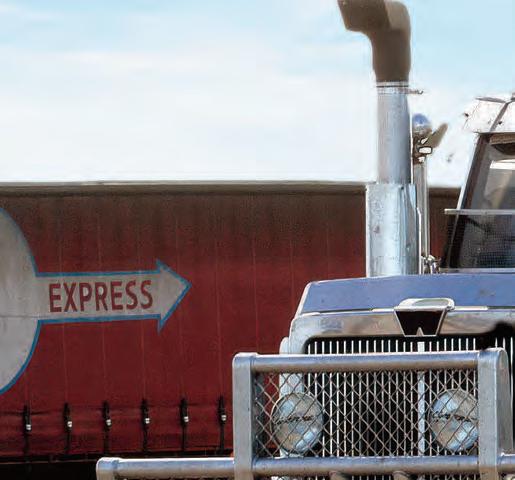





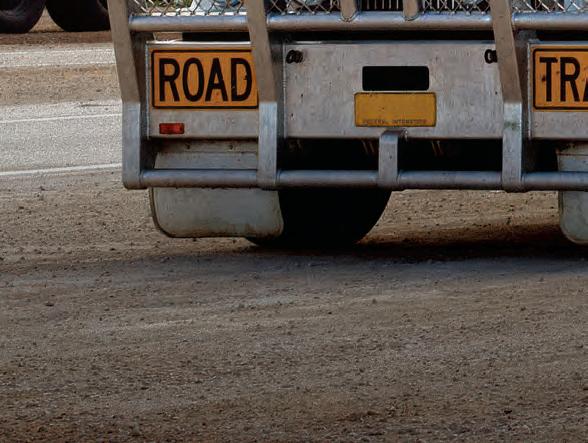


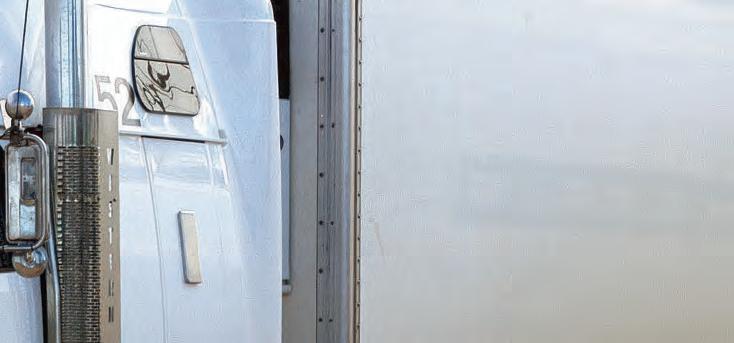

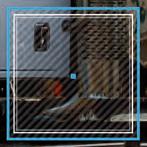




DEPARTURE DURATION

9:10 AM


For nearly 30 years, Razor’s trailer technology has been the perfect partner for Gorski’s products. Now, technological evolution and a safety focus is allowing the Razor name to succeed on a global scale
When casting the mind back to the year 1998, the prominent business that was founded was Google. Nowadays, the online search engine is a household name and has become one of the world’s leading companies. However, just months after American computer scientists Larry Page and Sergey Brin launched Google nearly 30 years ago, a lesser known business was founded in Australia that has since become a critical cog of the local transport scene.
It was in November 1998 when Geoffrey Watson and Darryl Baird developed the idea of an electronic intelligence system for winding semi-trailer landing legs. While it may have been a bit more niche than Google, this design inevitably led to the creation of Razor International and the introduction of tarp systems for Australian trucks and trailers.
Now a global company, Razor International quickly became a leading provider of electric tarp system products for small-to-large transport fleets around the world. It maintains a local partnership with a trailer giant that ensures it remains at the forefront of Australia’s truck and trailer industry.
“Razor is a component of the trailer build for Gorski Engineering, who has been using our products for more than a decade,” Razor International general manager Salvatore Calcagno told OwnerDriver
The two companies have forged an ongoing production partnership that has allowed Gorski to enhance its trailer offerings. Over the years, this relationship has always been linked through tarp supplier Camilleri Tarps.
While Razor International has evolved into a global brand that presents a state-of-the-art suite of electronic products present every day for both transport fleets and private operators, its local bond with Gorski means Australian operators are always at the forefront of Razor’s planning.
“Naturally, as the locations of Razor and Gorski remain very close in Australia, it has helped with supporting the customer base and servicing our products,” Calcagno says.
“The growth of both companies and our products have always been supported, no matter where in the country they may end up.”
It’s this focus on support that ensures Razor customers have always been able to benefit from excellence customer service since its foundations in the late 20th century. While reliable products have always been able to improve safe everyday work practices around trucks and trailers, it’s this aftersales focus and local partnerships that have proven critical to Razor’s ongoing growth.
In turn, it has also leveraged Gorski’s reputation in the local trailer market as a go-to option for Australian vehicles.
“Razor has nested itself in the transport industry by offering a range of products that offer safety, convenience and cost savings to the industry, and by adding value to the construction, ag and mining industries, it has given Gorski customers an option to be safe in the environments they work in,” Calcagno says.
“Giving operators an option to open and close the tarp of the Gorski trailer without getting out of the
truck is a huge safety feature, especially in high-risk areas.”
Since the early 2000s, Razor’s front-to-back Electric Power Tarp System has been a key piece of safety technology for transport operators around the country. After its initial success, the product was then nationally pushed in the early 2010s, leading to the Razor system being supplied and installed in every state around the country.
“The system retrofits onto the trailers existing tarp set-up,” Calcagno says.
“By mounting the motor onto the drive shaft between the pulleys, mounting the Razor Battery Pack and running a lead into the auxiliary wire, the driver can use their tarp wirelessly from nearly 100m away with the power of Bluetooth.”
The Razor Drive Unit is then electronically controlled and activated at the press of a button. It simply spins the drive shaft it’s connected to, spinning the pulleys and driving the tarp back and forth.
This means that an operator that may have 10 loads to complete in one day doesn’t have to go through the constant process of hopping out of the cab and manually opening and closing the tarp.
This isn’t just a welcome pleasure for truckies – it’s also a time saver and a key piece of safety technology for modern trucks and trailers.
“This stops the driver from having to arrive and go through the constant rhythm of opening the tarp, filling up and closing it before driving to the next spot, opening the tarp, emptying and closing it again,” Calcagno says.
“This process has been made quicker and safer by
“RAZOR
HAS NESTED ITSELF IN THE TRANSPORT INDUSTRY BY OFFERING A RANGE OF PRODUCTS THAT OFFER SAFETY, CONVENIENCE AND COST SAVINGS TO THE INDUSTRY, AND BY ADDING VALUE TO THE CONSTRUCTION, AG AND MINING INDUSTRIES, IT HAS
GIVEN GORSKI CUSTOMERS AN OPTION TO BE SAFE IN THE ENVIRONMENTS
having a Razor. The safety factor of this product means there’s no muscle strains suffered by drivers and it also allows them to complete more loads in a day. The convenience of maintaining a tight tarp means the load is also always safe.”
Like all great pieces of technology, modern innovation has proven critical to Razor updating and improving its popular systems. Since early 2021, Razor’s focus has been on how Bluetooth can innovate its existing tarp products to provide more benefits to truck operators around the world.
“Razor has invested a tremendous amount in redesigning our electronics and bringing in Bluetooth technology to the company,” Calcagno says.
“We then released a free app for smart phones in Razor Connect. Each Razor system has the ability to connect to the app, allowing the customer to use the tarp via the phone and check for faults or patterns to maintain the tarp and Razor system.”
The evolving technology means the user can have a wide range of different systems paired to their phone. It’s a handy update for fleet mechanics who may be working on dozens of Gorski trailers fitted with Razor electronics as a routine inspection for the Razor product.
“If Razor publishes a new feature, the patch will be delivered to everyone’s phone app and all users will be asked to update their Razor,” Calcagno says.
“In the case of a breakdown, the app can indicate the issue, give users an option to send the information to Razor headquarters and in turn remove a lot of time involved with diagnosing the issue.”
These updates to Razor’s technology have coincided with the growth of both Razor and Gorski around Australia. With the latter recently unveiling a new Queensland workshop and Alex Powell flying the Gorski flag, more and more customers in the northern state have been able to enjoy the latest benefits involved with Razor’s trailer systems.
“Gorski is in good hands with Alex, a great advocate for the

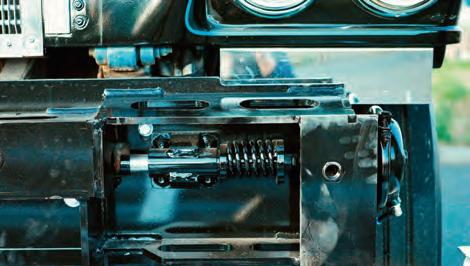
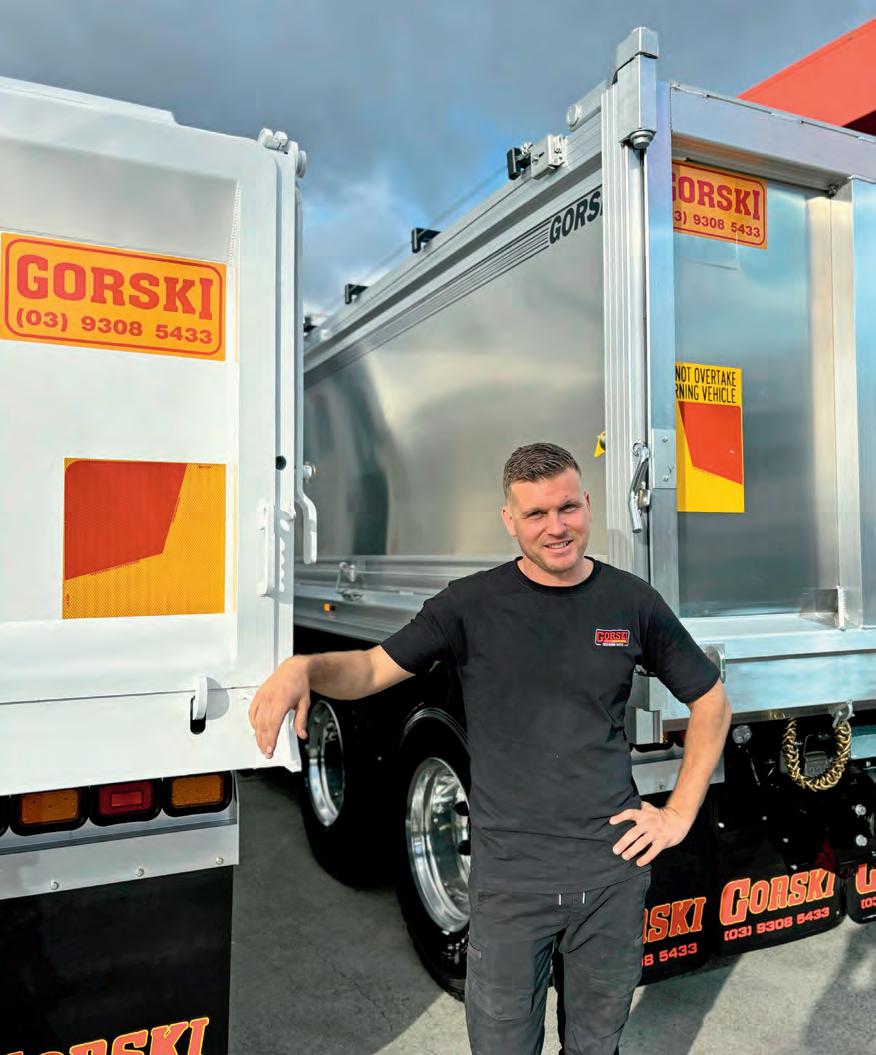
Razor product and a key member of Gorski to support and push their brand up north,” Calcagno says.
“You’d want someone like Alex backing your product like the way he does for Gorski.
“Having Gorski Engineering in the Gold Coast area will offer Razor products and support to a growing customer base in Queensland. It’ll also offer customers the option for premium service and supply.”
With safety requirements remaining a perennial focus for the industry, Razor is preparing to enhance its Gorski partnership to ensure its latest products are worthy of its success to date.
“The industry is constantly pushing for OH&S options for operators, and Razor will and always has offered and supported safety options for operators across the globe,” Calcagno says.
“As Gorski continues to excel and offer a wide range of trailers for different jobs, Razor will have a solution that does the hard work for drivers.”

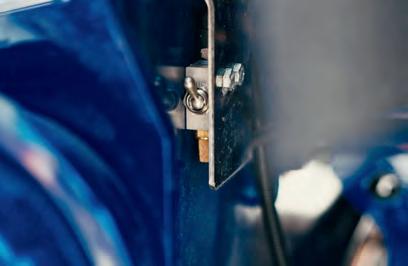
Discover AJ’s Total Truck Gear Wedgelock Bullbar System – The Bullbar that saves you time and Money. Drop your Bullbar in seconds with a flick of a switch — no Eyebolts, no tools, no sweat. Engineered with hardened steel, air-operated wedge pins that run off your truck’s existing air system to lock or release your Bullbar, this patented design is tried and tested for Enduring Australian conditions. Built for those who want to stand out and stand strong.
AJ’s Total Truck Gear Masters of the Outback
The Wedge-Lock Bullbar Strength – Safety - Performance +61 403 091 832 sales@ajtruck.com.au www.ajstotaltruckgear.com.au
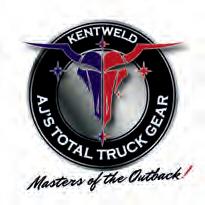
If you’ve been working in transport or logistics for a while, there’s a good chance you’ve seen the Healthy Heads in Trucks & Sheds (Healthy Heads) Road Show roll through your depot, distribution centre or local bp truck stop. And if you haven’t yet, it might be heading your way soon.
The Road Show has been on the move for a few years now, and its mission is simple: to support the mental and physical health of the people working on the frontline of our industry –truckies, warehouse staff and logistics team members; the people who keep Australia ticking.
The Healthy Heads Road Show is about showing up, having honest conversations and offering real, practical support, right where you work. Whether it’s grabbing a free coffee while having a yarn about what’s going on for you, picking up some resources on nutrition, mental health, or free industry-specific counselling services, or getting a health check, the Road Show is built for people like you.
A really valuable part of the program is the free health checks, run by the team at WFR (www.wfr.com.au). These folks are pros when it comes to workplace health and wellbeing, and they understand the unique pressures of working in transportation and logistics. Long hours, tight schedules,
time away from home, physical strain; they know how it can all add up.
WFR’s health checks are quick, confidential and free. You don’t need an appointment or to fill out piles of paperwork. You just show up, get checked out and walk away with a better idea of where your health is. They will check your blood pressure, blood glucose and body composition (waist and hip girth), and a few other key things that are easy to ignore, but important to stay on top of.
Why does this matter so much?
Because right now, in Australia, there’s no standard national system for health checks for drivers with a Medium Rigid (MR) licence and
above. That means a lot of drivers might go for years without having their health properly looked at, unless something goes wrong. And by then, it could be too late.
Health conditions like sleep apnoea, high blood pressure, heart disease or diabetes can creep up slowly, and they’re way more common in our industry than most people realise. The earlier you catch them, the easier they are to manage. That’s where the Road Show and WFR come in, giving you a chance to check in before anything serious develops.
There is a steadily growing push for change in the industry, with calls to have a proper national health screening system rolled out across the board for Aussie truck drivers. But until that happens, programs like the Healthy Heads Road Show are doing the heavy lifting, literally bringing health support to where it’s needed most.
And the best part? There’s no judgement. The team gets it. They’re not there to preach or lecture. They’re there to help. Whether you want to chat about stress, relationships, sleep issues, or just grab a pamphlet and keep rolling, it’s all good. No pressure. No signups. Just real support for real people.
The Road Show has already visited countless sites across the country and continues to grow each year.
“And the best part? There’s no judgement. The team gets it. They’re not there to preach or lecture. They’re there to help. Whether you want to chat about stress, relationships, sleep issues, or just grab a pamphlet and keep rolling, it’s all good.”
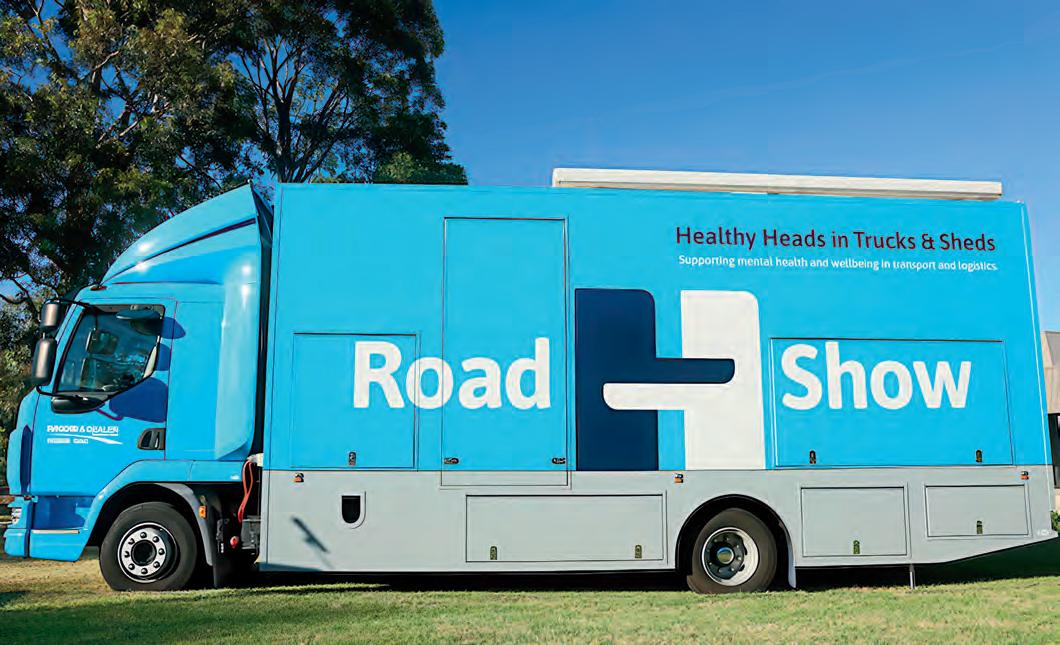
And the feedback? Overwhelmingly positive. Workers appreciate that someone is finally talking about these issues in a way that makes sense. They like that it’s face-to-face, casual and genuinely helpful.
This isn’t just about mental health, either. It’s about safety. It’s about making sure you’re fit for the job, not just today, but for the long haul. Because when you’re not feeling 100 per cent, it doesn’t just affect you. It affects your mates, your family and everyone else on the road.
So, if you see the Healthy Heads Road Show roll into your site, take five. Drop by. Ask a question. Get a check-up. Or just grab a cuppa and say g’day. You’ve got nothing to lose, and a lot to gain.
Because at the end of the day, looking after yourself isn’t a luxury, it’s part of the job. And with programs like this one, you’ve got the tools and support to do just that.
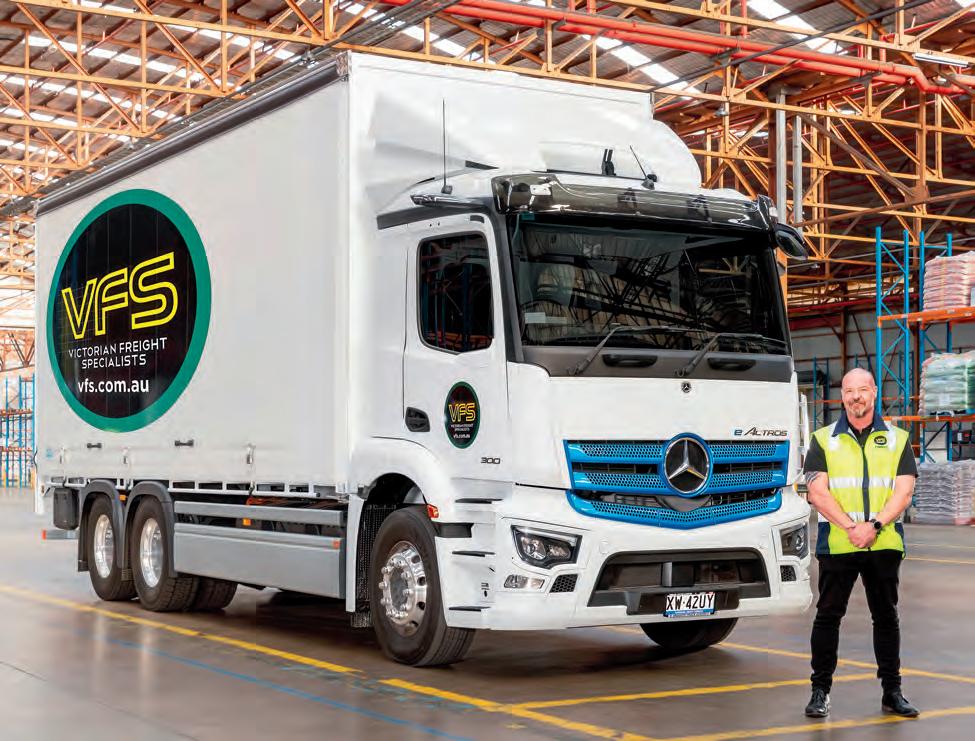
The latest electric truck trial in Australia sees a major Victorian freight group put two Daimler Truck models to the test
In the past year alone, an increasing number of truck fleets and operators have begun making the switch to alternative fuel vehicles. While some have made headlines, the latest operator to trial electric Mercedes-Benz and Fuso models marks a significant step forward.
As the largest regional freight provider in Victoria, Victorian Freight Specialists (VFS) has a long history of buying lower emission trucks. Back in 2016, it
was one of the first customers of the Mercedes-Benz Actros Euro 6.
Now, the Dandenong-based operator has recently started trialling the Mercedes-Benz eActros and is soon planning to put the Fuso eCanter to the test. The addition of these fully-electric trucks to its fleet signifies the next step in VFS’s sustainability journey.
“Sustainability is central for Victorian Freight Specialists,” VFS Director of Operations Chris Collins says.
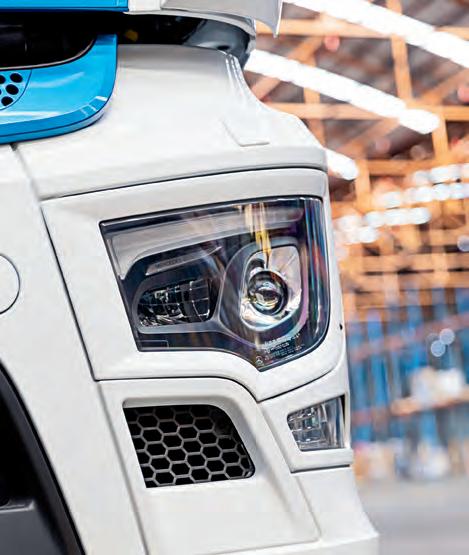
So, it is only fitting that their electric trucks are the most advanced of those available,” he says.
The electric truck trial is another sign of growth for Daimler Truck Australia Pacific, with the OEM continuing to offer the latest zero and low-emission trucks in the local market.
Daimler Truck Australia Pacific Vice President of Sales, Marketing and Operations, Andrew Assimo, has welcomed the VFS electric truck trial.
“Chris and his team were early adopters of Euro 6 with our Mercedes-Benz Actros product all those years ago because they valued sustainability, and nothing has changed,” he says.
“Progressive companies such as VFS are leading the way with electric trucks. We are excited to see what they think of our remarkable Mercedes-Benz eActros and Fuso eCanter.”
“We have always purchased lower emission options where possible, well ahead of government mandates. Of course, now we have an opportunity to take that next step and integrate fully electric trucks into our fleet. We are really excited about this amazing technology.”
With over 30 years of experience in the Bullbar and Bumper Bar industry, we design bullbars that are technically more advanced than others on the market that can result in them being 25% stronger. We design our bars not only from our many years of experien ce but from customer and operator feedback, so that we can supply the industry with ultimate Bullbars, designed for safety, strength, aesthetics, and performance
For Collins, it simply made sense for the major Victorian operator to trial Daimler Truck’s electric models.

“We know from experience running Daimler Truck products that they don’t mess about with their research and development and their product quality.
The Mercedes-Benz eActros and Fuso eCanter will head into VFS’s operations on a trial basis. Both of these advanced electric trucks come with a raft of features that set them apart from competitors, including their innovative eAxle technology, which places the electric motors located in the drive axle. In turn, this means there’s no need for a drive shaft to link the rear wheels to the power source towards the front of the truck.
The benefits of this solution are set to result in reduced energy loss and weight savings for VFS.
Available as a 4x2 or 6x2 rigid, as well as a 4x2 prime mover combination, the eActros will be joined by a key member of Fuso’s eCanter range that features 14 variants.
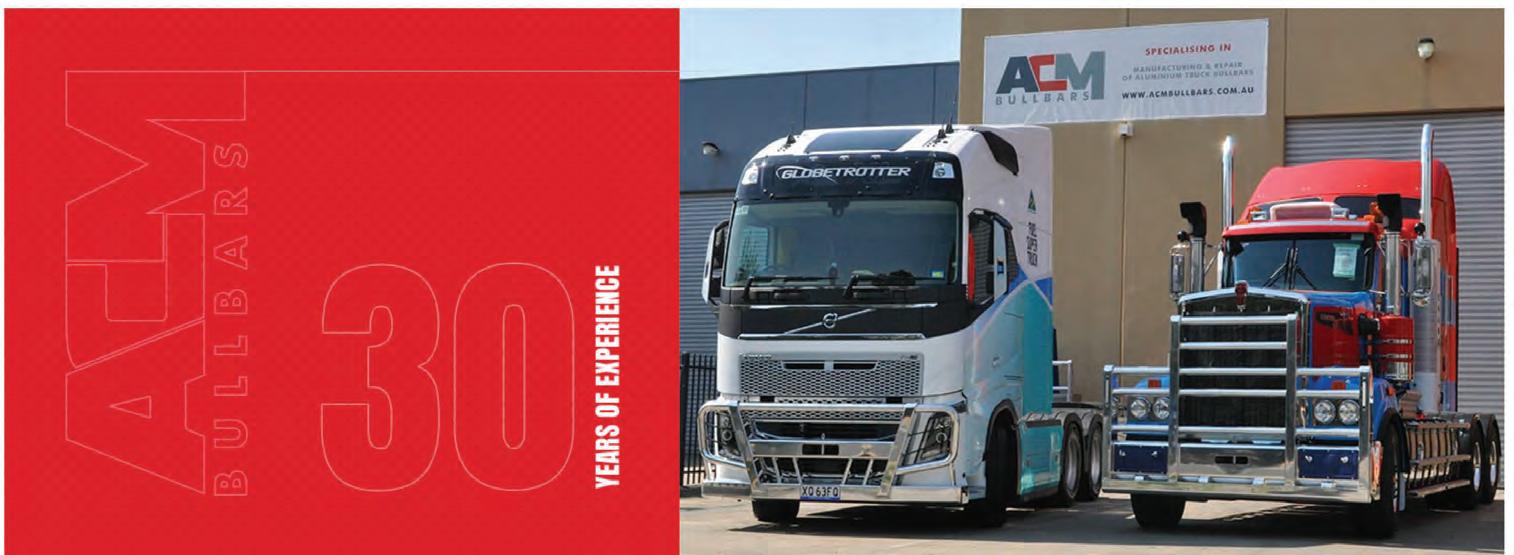

ACM BULLBARS SPECIALISE IN NEW BULLBARS, REPAIRS AND FITTING.
With over 30 years of experience in the Bullbar and Bumper Bar industry, we design bullbars that are technically more advanced than others on the market that can result in them being 25% stronger. We design our bars not only from our many years of experience but from customer and operator feedback, so that we can supply the industry with ultimate Bullbars, designed for safety, strength, aesthetics, and performance.
AJ’s Total Truck Gear has excelled in the bullbar market through innovative designs and durable craftsmanship. It’s now taking it to the next level with its wedgelock bullbar system
Every truck enthusiast loves an eye-catching bullbar. A glint of chrome barrelling down the highway, a shiny piece of custom steel proudly gleaming on the front of a majestic truck.
However, bullbars aren’t just wonderful attachments to the best looking trucks – they also form an important safety addition. In recent years, AJ Total Truck Gear’s latest bullbar technology has revolutionised the simplicity of using its finelooking products.
“We invented the wedgelock no eyebolts bullbar system and patented it roughly seven years ago to make it easier for drivers to complete their daily maintenance checks,” AJ’s Total Truck Gear director Anthony Thrush says.
“Over the years of owning a truck, the time saving of not having to undo and do up eyebolts all the time is proving to be massive for drivers.”
This innovative system veers away from traditional eyebolts, with the wedgelock alternative making it easier to release and tilt bullbars for servicing and maintenance.
The wedgelock system uses the truck’s air to lock and release the wedgelock system. At the flick of a switch, you can release the wedgelock. By then removing the tow pin, the bar can be tilted with ease – then after raising the bullbar back up
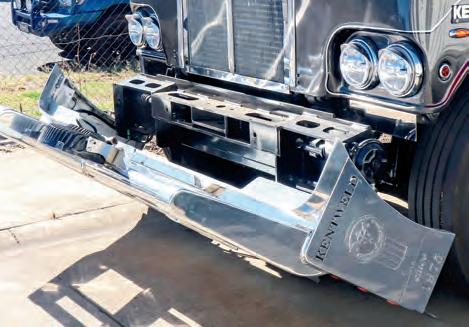
and flicking the switch back on, it locks it all into place. The device is compatible with only genuine AJ and Kentweld bullbars, suiting all American style trucks such as Kenworth, Western Star, Mack and Freightliner. A similar system is also being developed for Euro trucks such as Volvo, Mercedes, Scania, DAF, MAN, Iveco and more.
“We’ve evolved this system over the past few years and we’re continuing to slowly improve it,” Anthony says.
While the technology sounds efficient, the AJ’s team knows difficulties can sometimes happen. If a truck breaks down or loses its air, the system is designed so it can be released with no air pressure,
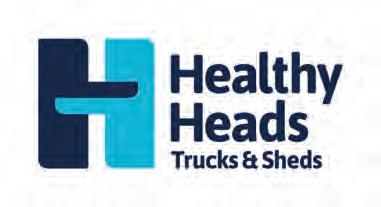
and you are not stranded with the bullbar locked up and unable to tilt. Once the air builds back up in the truck, it’ll simply lock back in place, keeping the truck and its surrounds safe.
These wedges are made of hardened steel, with the bullbar designed and engineered in Australia to suit the nation’s road conditions. The idea is that routine maintenance is made simpler, reducing strain injuries through the lack of eyebolts involved. In just 10 seconds, the tilting of the bullbar without any tools is making the best looking trucks around the country just that bit more practical to drive.
“With a multi-fit backing plate included, operators can choose to either have a bullbar with eyebolts or the premium wedgelock system,” Anthony says.
“Having a striker plate bolted on that’s made of steel and not aluminium means the wear and durability is a lot better, making it a high-quality product for drivers.”
Not only that, but by not having the need for eyebolts, this gives bullbars a clean look on the face of the channel, meaning no more holes in your road train or oversize signs.
AJ’s Total Truck Gear is continually looking for innovative ways to improve its bullbars and bumpers to be stronger, more aesthetic and add more value to every truck they go on. To learn more, head to https://www.ajstotaltruckgear.com.au/.

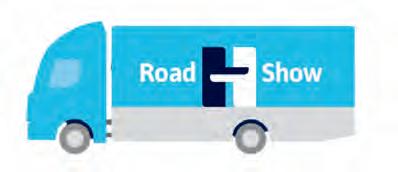


Rod Hannifey provides a comprehensive update on the road upgrade projects he has been pushing for from transport bodies
Goodaye all, well it has been a horrific time on the roads in the last couple of months and if there was only one problem, it would be hoped we could all agree to fix it and save some lives. But there are many things and, while we and those we share the road with are humans, some of those will remain. Autonomous vehicles may save some in the future, but they are still programmed by humans and are not yet anywhere near perfect either.
Drivers are the first problem –unskilled, untrained, uneducated and some just careless and/or stupid, impatient, uncaring of others and bulletproof until it all goes wrong and, while it is happening to someone else, it’s not their problem either.
Then there are the roads. 20 years ago when I was driving tankers, I had a VicRoads employee do a trip with me in the truck and we stopped just north of Kalkallo to watch trucks bounce and wobble over the savage dips before you crested the hill southbound at the exit of the parking bay. It only took over five years of further ringing, emailing and complaining to get them fixed and it was an 80 per cent fix. Of course, I have been asking them to fix it again now for some time.
The employee said if I ever repeated
this and named him, he would not have a job (and hopefully he is safe and probably moved on by now).
“We are not maintaining our road assets,” was his comment and I do believe he understood things from our perspective more than your average state road authority employee. No matter which state you want to nominate now, because few, if any, have any real understanding of living in trucks on the road, let alone caring about our lives. It’s harsh, but I feel close to the truth.
In the last month, I have called the three eastern states, including VicRoads, with a list of four items, one of which now is at the third complaint and unfixed after 12 months with NSW regarding unmanned roadworks, plus a bridge out of Wellington. They received a direct email list of four culverts and some other requests.
I spoke with a driver from another company at one of our depots, asking had he ever rang a road authority to nominate a bad bit of road? No. But when on holidays and in the car, he was a fan of ‘snap, send, solve’. As a north Queensland runner, I mentioned the undulating section north of Rocky past the little servo and asked him to consider making a complaint the next time he travelled over it if he agreed it needed work.

But there are two things you must keep in mind when you ring any of the state numbers for their individual traffic management centres. The person you speak with did not make the problem, they are only there to accept calls and pass on the information, so don’t be rude, aggressive or give them a hard time – it is not their fault and if you carry on, it will only make it worse.
You must also realise that those in authority in such organisations are responsible for large areas and thousands of kilometres of roads and can’t possibly know every bump, pothole or road failure and, while we would like to think the road crews would also report issues, I am yet to see as much of that as we would like.

ROD HANNIFEY, a transport safety advocate, has been involved in raising the profile of the industry, conducting highway truck audits, the Blue Reflector Trial for informal parking bays on the Newell, the ‘Truckies on Road Code’, the national 1800 number for road repairs proposal, and the Better Roadside Rest Areas Group. Rod is the current president of the NRFA. Contact Rod on 0428 120 560, e-mail rod.hannifey@bigpond. com or visit www.truckright.com.au
The next is that you must be specific. In discussions with other drivers, some will say, “you should just start at the border, all the road is buggered”, but that won’t help. You need a distance from the nearest road, bridge or town.
If we as the group who spend most time on the roads don’t tell them, how else will they know? Please give it some thought.
The recent announcement of the start of the work on the Bruce Highway may even include the section mentioned above – I will have to follow up, but I have emailed the Queensland minister and a member of the Bruce Highway Taskforce suggesting an audit of the current rest areas, finding the gaps and then putting forward a plan. I was quoted the 66 new and improved rest areas in the press release on the Bruce Highway, so I do hope there has been or will be more industry consultation.
Another email went to the Tiaro Bypass team after I slept there on my way north, seeing what they are up to and when will we hear about it. Trevor Warner has also been in their ear, but the last reply was not what we wanted to hear. It is not like there are 100 trucks bays within 100km of there and, if you have got through Brisbane northbound or are heading there southbound, there are few options. The last two times I have gone into Traveston, the only spots left to park in were at the bowsers! Do we have enough bays? No! I have submitted an email on the roads, shoulders and rest area/stopping bays to ALGA, IPWEA and a couple of others and am awaiting further replies as to whether they see these issues as relevant to them. I have also spoken with Transport for NSW about being qualified by them to be able to put up and nominate suitable green reflector bays, but it seems the only way I can do that, as me, is to qualify to the level of those who build their roads and that is not even remotely possible as an individual. So now I am seeking a company who is qualified to work with –is anyone who qualifies interested?
“If we as the group who spend most time on the roads don’t tell them, how else will they know? Please give it some thought.”
In the midst of a family tragedy, Warren Aitken is calling on the trucking industry to contribute to a meaningful cure for a crippling disease
One of the greatest attributes of the transport industry is the wealth of compassion and support that flows whenever an occasion arises. Truckies in particular are generally the first to get in behind a good cause, whether it’s by polishing up their pride and joy for a charity-based truck show or taking time out of their busy day to assist a child in need with a compassionate cruise, or merely a morale boosting drive-by.
I believe it is because we have such diversity within our workforce and, contrary to many beliefs, there is still a strong camaraderie among the trucking fraternity. Recently, one of the largest organisations within the transport arena, WiTA, or Woman in Trucking Australia, if you prefer the unabbreviated version, teamed up with a charity organisation very dear to many hearts in River’s Gift to launch a charity event aimed at bringing a beacon of hope to the world of SIDS and raising much needed funds for research into this heartbreaking affliction.
https://riversgift.org/product/hope-the-elephant-softtoy/
I am going to get into the explanation behind this very cool fundraising concept, but first I have to address the elephant in the room (pun intended). You will notice I am dropping a web link quite often throughout this story and the reason is because that is exactly how we all get involved in this venture. What venture, you ask? Let me explain with a little history behind the River’s Gift organisation.
River’s Gift originated from the most tragic of circumstances. On November 6, 2011, Alex Hamilton and Karl Waddell crawled into bed around 11pm at night after laying their four-month-old son River to bed. The nighttime schedule would normally allow Alex a couple of hours sleep before River would awaken Mum with a notification that he was in need of another feed.
When Alex found herself waking at 7.30am, somewhat disoriented from a full sleep, her immediate reaction was appreciation of her mum whom she assumed had woken to look after
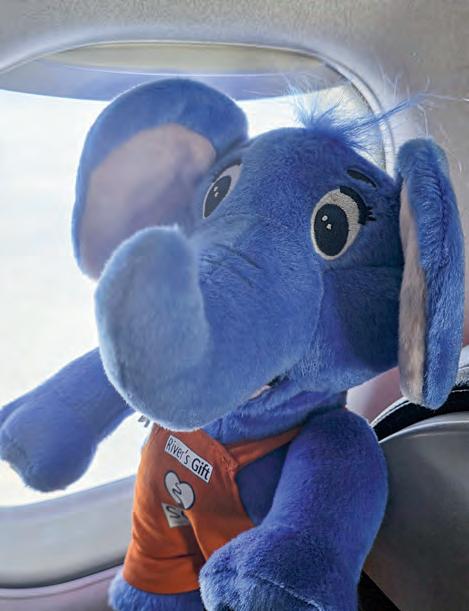
River. Life for the couple stopped the moment Alex entered River’s bedroom and found their son had passed away. It was a heart-breaking hell no parent can imagine and no bystander can ever comprehend. The couple could not understand; they had laid him in bed as per the safe sleep guidelines –there was no smoking, no outside influences, it was unexplainable. It was SIDS. Sudden Infant Death Syndrome.
Grieving for Alex and Karl included trying to understand and investigate exactly what SIDS is and what causes it. Much to the couple’s dismay, their investigations wielded very little. There was very limited continuing research into SIDS and safe sleep education was really the only way that the health system was addressing risk reduction of a sudden and unexpected death of infants in sleep. It was an area that needed funds and dedicated researchers.
It is extremely hard to get the worldwide
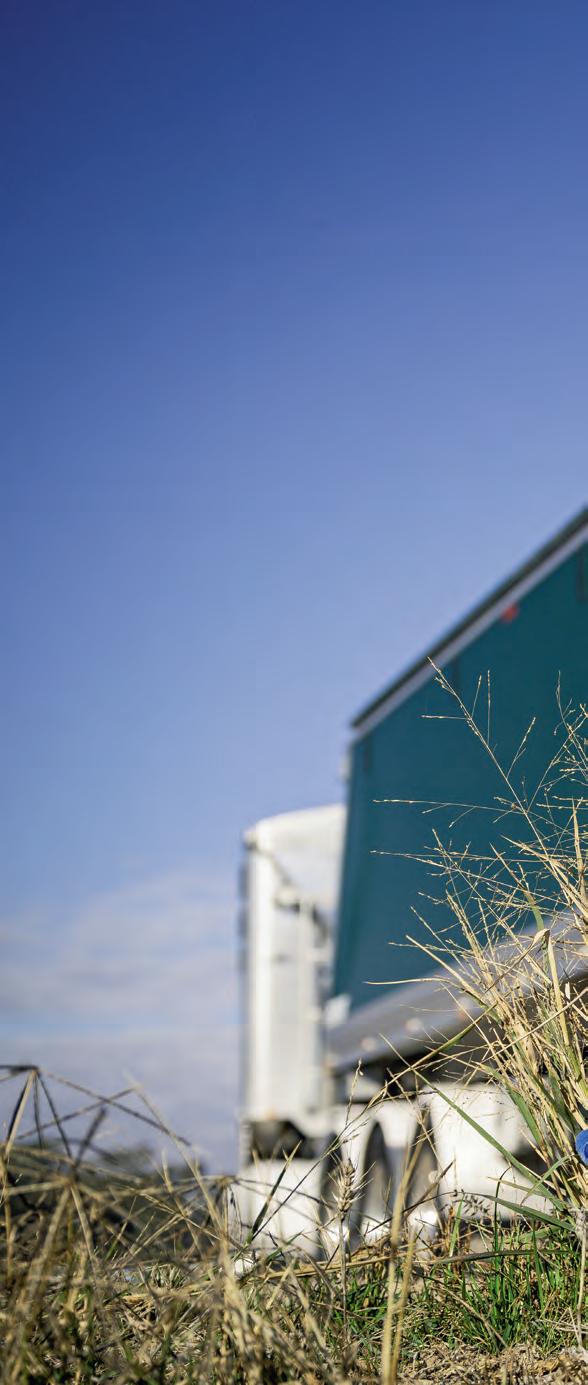
mortality rates due to so many different recording methods, but in the USA, SIDS is the leading cause of death of infants between one month and one year old at around 2,500 per year. Australia’s records show we are losing 100 children a year to SIDS. Alex and Karl took it upon themselves to start raising funds for more thorough and wider research.

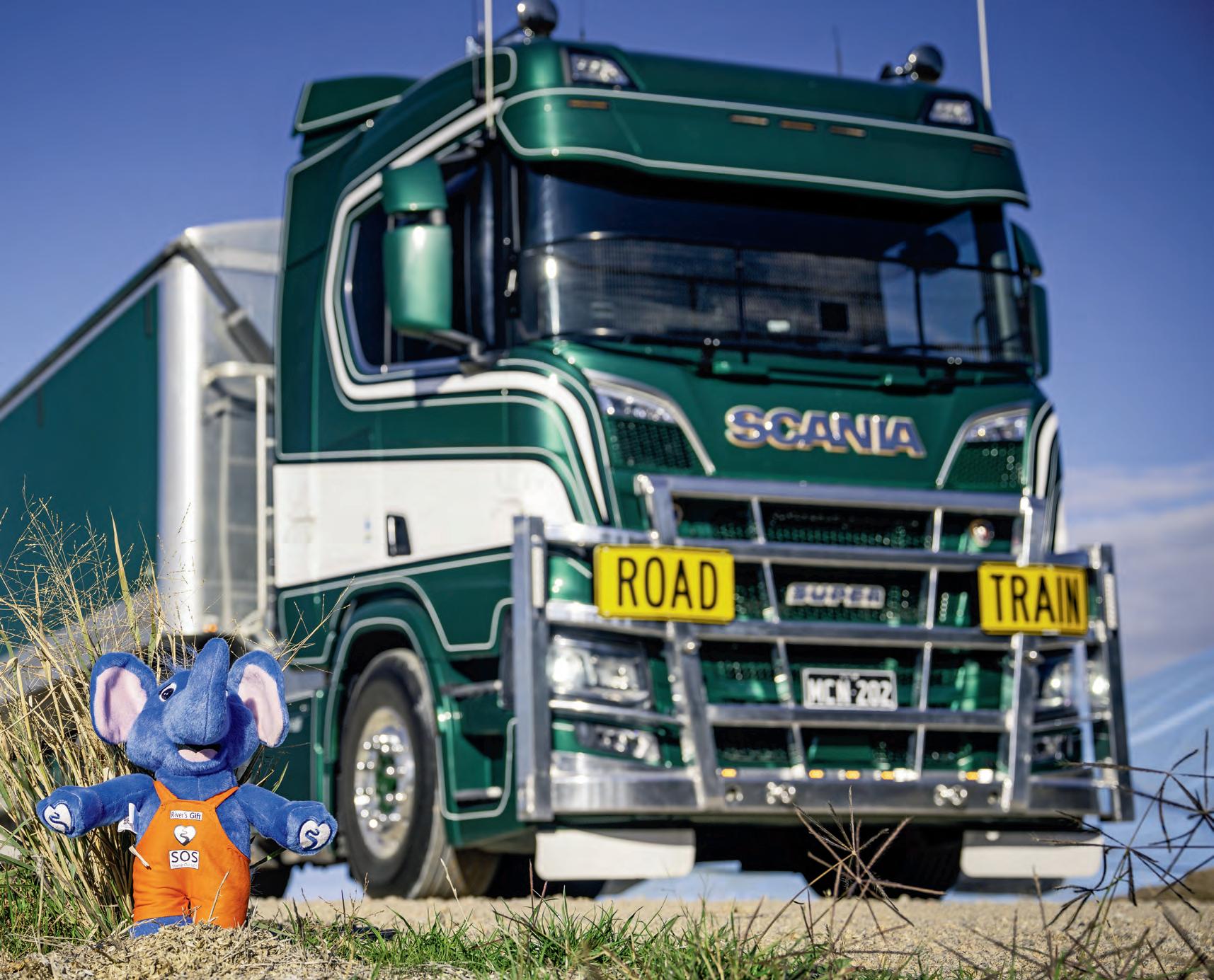
https://riversgift.org/product/hope-the-elephant-soft-toy/
You could say ‘River’s Gift’ began at River’s funeral. In lieu of flowers, Alex and Karl requested donations that would be directed towards SIDS research. The outpouring of support from family friends and others afflicted by SIDS was incredible and, in 2013, Alex and Karl officially formed the not-for-profit foundation known as River’s Gift.
Since its creation, River’s Gift has funded and collaborated with major researchers and studies such as Boston Children’s Hospital, Harvard Medical School, The University of Adelaide and the University of South Australia. They have raised countless funds that have assisted in amazing research and helped to change the way we look at SIDS, but there is always more research and more studies required as we pull together in ‘Stamping Out SIDS’. This requires more funds and that is where the tie in with WiTA has come about.
We shall just jump back a bit before we go ahead with the WiTA tie in and mention Hope. In River’s Gift’s early years, they were looking for a mascot. Seeing as one of River’s favourite toys was a small stuffed elephant, it was only fitting that a bright bubbly elephant become the face of River’s Gift. And seeing as River’s Gift is all about raising funds in order to raise knowledge and hope about SIDS, it was fitting that the bright blue elephant be named Hope.
Now we can jump ahead to the affiliation with WiTA. Every year at the annual WITA BP Australia Toots Awards Dinner, WiTA partner with a charity that they are going to support and acknowledge. Helping to raise funds and awareness, WiTA CEO Lyndal Denny had become aware of River’s Gift through its tie in with the massive truck show held every two years in Gympie, ‘Matty Hillcoat’s Truckies Day Out’. With the majority of truckies being Mums and Dads, the WiTA team believed River’s Gift was a charity with great intent and
partnering up would be purposeful and extremely relatable. https://riversgift.org/product/hope-the-elephant-soft-toy/
Now we get on to why I am repeatedly sharing the above web address – driving Hope across Australia. Hope the elephant has been one of the cuddliest tools River’s Gift uses in its fundraising arsenal. The bright blue elephant has been seen in homes, playcentres and offices all around Australia.
When River’s Gift decided to partner up with WiTA, they decided to expand Hope’s reach and push the little blue elephant outside the norm, the goal being to get Hope into as many trucks as possible and ‘Drive Hope across Australia’.
In particular, Alex and Karl wanted to create and promote the Driving Hope Season, in honour of the 128 days that River graced this world with his presence from July 2 to November 7. The Driving Hope Across Australia campaign aims to get as many photos and images of Hope as possible, in as many trucks and equipment as possible, sharing Hope’s adventures through the River’s Gift social media sites, as well as the WiTA platforms.
I began this story touching on what an amazingly charitable industry we are privileged to be a part of and I truly believe that. Our industry is made up of many Mums and Dads, Uncles and Aunties, Grandmas and Grandpas, the majority of whom may never have had to experience the loss of a child. I, for one, hope I never do.
However, SIDS is a condition that can strike out of nowhere and needs our support in research and education. Driving Hope around Australia is a fantastic and fun concept and I have already taken Hope across the paddock. Hope’s been road training down in NSW and even got into the mud carting world. Let’s see how many other places we can get Hope into. So, type out the link I have mentioned more than once and share your adventures with Driving Hope across Australia!

Top: Snapping as much Hope, with as many trucks is how this works. Let’s ‘Drive Hope across Australia’
Above: The River’s Gift Team, partnering with WiTA, are looking to raise as much funds as possible by getting as many Hope elephants into as many trucks as they can. Make sure you share your snapshots online
Opposite top: While the goal is to Drive Hope across Australia, the little blue River’s Gift representative isn’t adverse to the luxuries of air travel as well. Hope caught the big tin taxi from Melbourne up to Brisbane to begin an epic journey across the paddock with me
Opposite bottom: Hope found just the right vantage point in this stunning new R660 Brisbanebased tipper
The journey that Laura Wilkinson has been on in her life has led to the launch of an exciting new WA logistics company that is taking a unique approach to project logistics
When you think of a hard-working Aussie, what comes to mind? Is it a ripped and torn bunch of yellow overalls so bright that it makes the sun look like the night sky, coated in dust so thick it could submerge an entire city? What about the deep crease lines on someone’s forehead as they slump over the freezing, unforgiving desk, furiously rubbing at their brows as they work deep into the night, forgoing family and friends?
In the transport industry, is it the all-conquering truck driver, both hands on the wheel all day? Short, stubby nails bitten back by stress and time spent waiting on the dreaded loading and unloading process. A wary eye on traffic around them as they meander their way through the many lanes that traverse Australia. A constant dull pang in the heart as they can’t take their minds off their kids while making the long trip home.
Well tear that up, because the hard-working Aussie nowadays isn’t just the one that sacrifices it all. It’s not the blood, sweat and tears. The long hours. The tears. The fears. No, the modern day successful transport tycoon has evolved its form, and it’s no better represented than by Laura Wilkinson, the founder and general manager of X Logistics.
Laura’s success boils down to a deep reserve of knowledge that makes the Great Lakes look shallow and was first cultivated, like many in the industry, in childhood.
“I grew up surrounded by the mining and oil and gas industries,” Laura told OwnerDriver
“My father worked in oil and gas and many family members were heavily involved in mining across Western Australia.
“Naturally, it influenced my early career path, and I moved into the mining industry myself with the goal of eventually branching into oil and gas.”
Spoiler – Laura’s dreams as a young girl watching her family toil away in the arid WA sun came to fruition, but not in the direct way she’d envisioned. While she now sits as the general manager of a newlook logistics company that puts her experience in the mining, construction and energy sectors to use, like the aforementioned truck drivers, she took the windy but scenic route to get there.
“Early on, I worked on Shell’s Prelude FLNG project, which was one of the world’s largest floating offshore gas facilities,” she says.
“I worked on it during its critical transition from construction into production. Being part of a project of that scale gave me invaluable first-hand experience in large-scale mobilisations, logistics coordination, compliance and operations within highly regulated environments.”

It’s a handy first step for a person to take into the transport and mining world, but also an intimidating one. However, instead of scaring Laura away, it only toughened her resolve, forming a work ethic and knowledge base that would serve her well when she transitioned through the greatest journey of life.
From the Prelude project, she transitioned to a role with the Buurabalayji Thalanyji Aboriginal Corporation (BTAC) – the Registered Native Title Body Corporate (RNTBC) for the Thalanyji People.
BTAC advocates for traditional owners’ rights, manages native title land interest and facilitates communication between community, industry and government. While it sounds worlds away from her time out on the floating Mecca of gas ships that was Prelude, it proved a point of difference, adding a layer of perspective to the young woman’s evolution as a logistics force.
“This experience strengthened my understanding of the social, cultural and legal layers involved in resource and land development, adding another dimension to my logistics and industry knowledge,” she says.
If this resume isn’t amassing enough of an impressive snapshot into Laura’s life to date, she
then experienced what many refer to as one of the most challenging yet rewarding moments of one’s life – having a child. Her son gave Laura time to step back and re-evaluate. As life moved on around her, she settled her target on the beautiful bullseye that is Australia’s transport industry.
When she did make her return, it was into the metro freight game, organising the minefield that is frequent inner-city and suburbia truck runs.
Here she entered the world of keeping a lid on a bursting container of demands and jobs for the everexpanding customers in Western Australia.
This opportunity was at Capital Logistics, where Laura helped establish the WA brokerage arm for the transport operator. While it may have presented as a desirable end destination for Laura’s winding journey throughout the resources and transport industries, it proved to be another challenging, yet useful, checkpoint along the way.
“While I found success there, I realised over time that the business model wasn’t aligned with my passion for servicing mining, construction and oil and gas industries,” she says.
“These were sectors I had built my knowledge and career foundation around.”
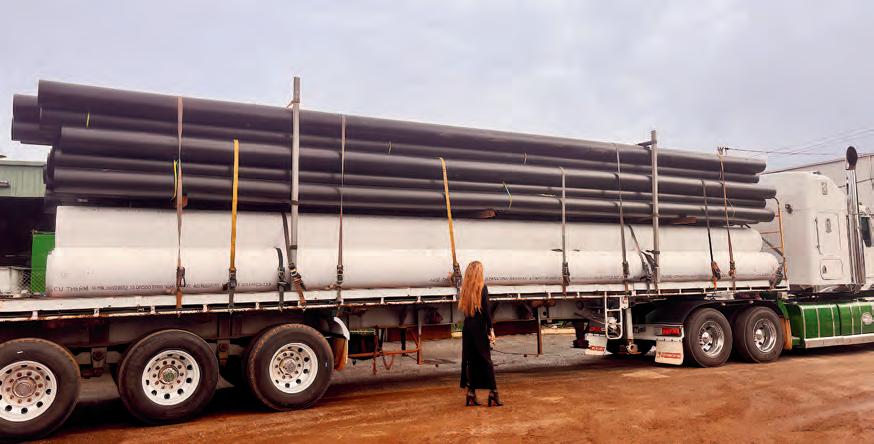
So what does one do when they hit the end of the road? Most sane people tend to complete a U-turn and head back down the way they came. Not Laura. Instead, she viewed it as another opportunity, bringing out the machete to whack through bushes and forge a new path.
In the real world, this saw the foundation of X Logistics –the ideal culmination of not just Laura’s hopes and dreams from a young age, but also the best of the mining, energy and transport sectors.
“I decided to step away and pursue my goals and dreams by founding X Logistics,” she says.
“At X Logistics, we specialise in tailored logistics solutions for mining, construction and energy sectors. Our business is built on operational expertise, deep industry relationships and a genuine client-first philosophy.”
The creation of X Logistics brings together all of Laura’s experience to date, starting from her time on the Shell offshore gas facility all the way to her time in the Capital Logistics metro hustle and bustle. It’s a unique CV, but one that means she was able to set her own rules when it came

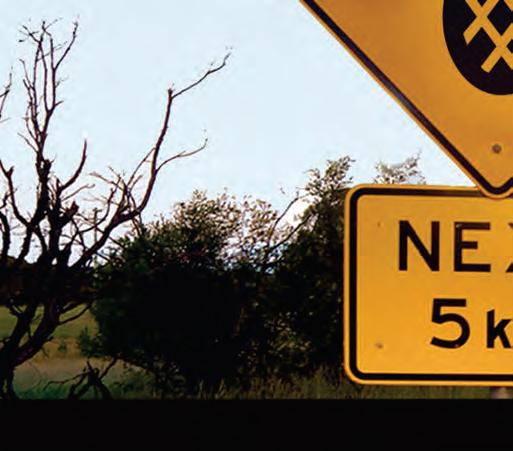
to establishing the logistics brand.
“What truly sets us apart is a combination of three core strengths that we focus on,” Laura says.
“We have a flexible platform that allows clients to add their own preferred carriers and rates alongside our trusted network, creating ease of use, transparency and cost efficiency. We also foster strong personal relationships with carriers and clients that is built through years of integrity, collaboration and shared success.
“We also have a niche knowledge base in mining, oil, gas and project logistics, developed hands-on over more than a decade across both onshore and offshore industries.”
Reading over those three strengths, it sure sounds like the embodiment of Laura’s passion and experience to date, poured into a company that is ready to roll up its collective sleeves and work away. For Laura, her vision is for X Logistics to use her knowledge and wisdom while remaining flexible to create logistics solutions for a wide range of sectors and operations.
Through this method, she’s confident that she’ll create a rare, partnership-driven logistics model that is designed to be reliable and yield long-term results. Considering the hard yards she’s put into getting to where she is now, it’s difficult to write her and X Logistics off.
So when you next think of hard-working Australians, don’t forget to remember the new legion of people who have forged their own careers in a different way. While Aussie’s tough toilers nowadays aren’t all the humble truck drivers, the new guard may now take the same enriching journeys that the trucks themselves do as they cover Australia’s wide expanses each and every day.
Laura is one shining example of a new-age logistics leader who has developed skills and experience in her own unique way. It makes for a company that stands out.
“Thanks to the loyalty and trust we’ve built, X Logistics is now quickly becoming a trusted name for project logistics in Western Australia,” she says.
“I’m excited to see where this next chapter leads and to continue contributing to industries that have been such a strong part of both my professional and personal journey.”


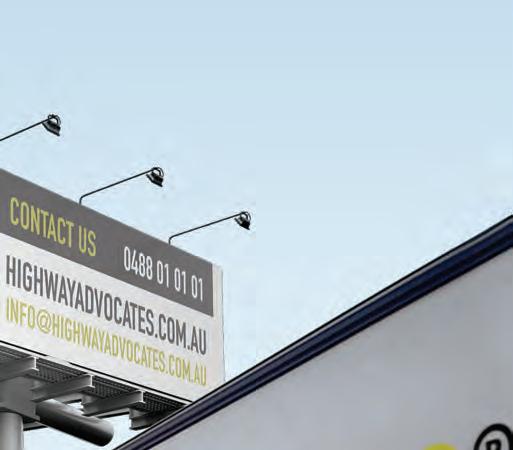

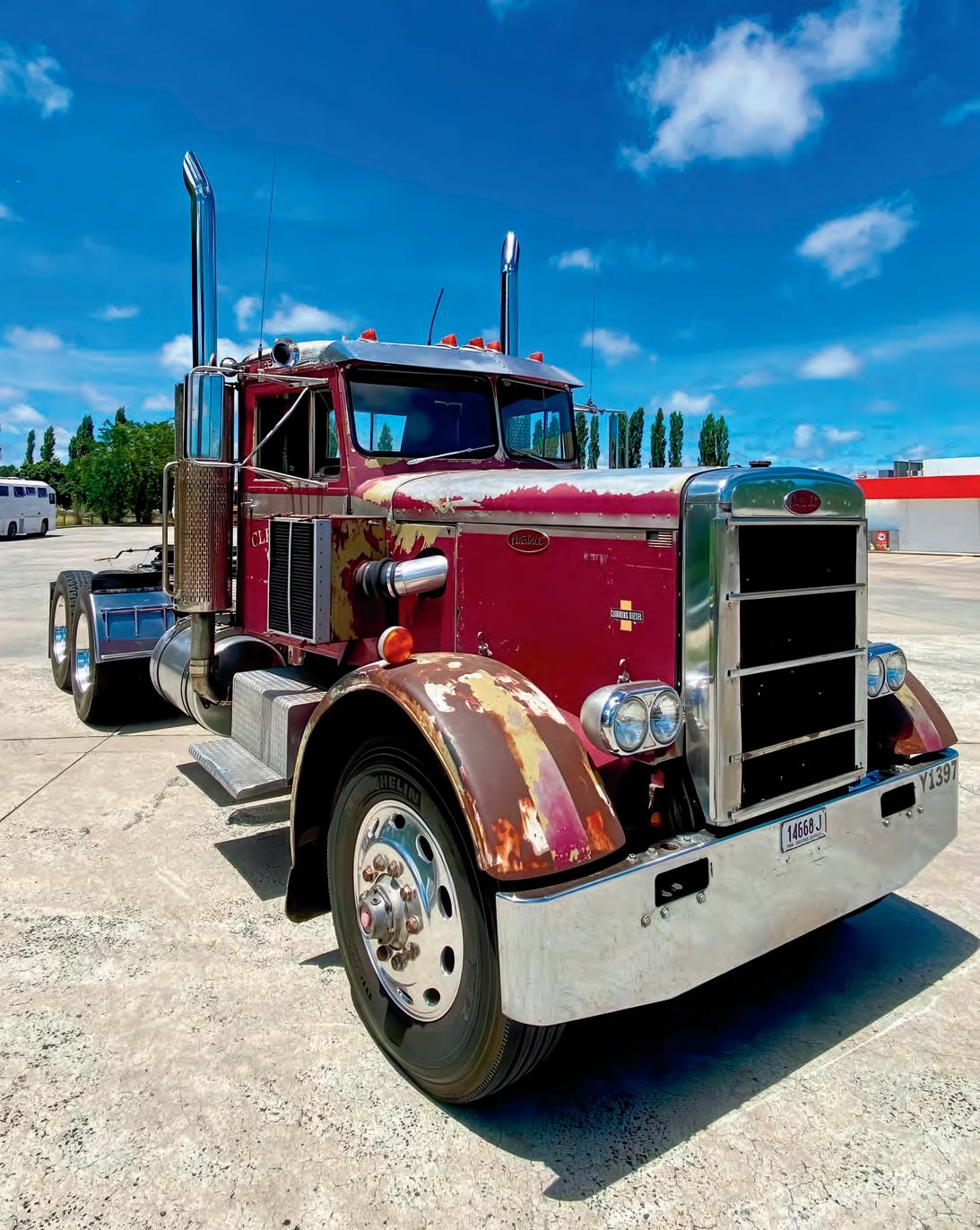
Tiarna Condren sits down with Shane Pendergast to find out how a vintage Peterbilt made its way to Camden, NSW
For some people, the dream mode of transport is a Ferrari. For others, it’s a Mustang or maybe a vintage Holden. But for one Australian truck enthusiast, the holy grail was always a very specific, very loud and very American machine: the 1965 351 Peterbilt.
Growing up in Glenn Innes in the 1970s, Shane Pendergast used to watch one specific 351 Peterbilt owned by Mars Concrete buzz around town.
“Oh, it was incredible,” Pendergast told Owner Driver, recalling the first time he saw and heard the iconic American truck rumble through.
“Everyone else had old trucks, Bedfords, Commers, Internationals. And then here’s this big, loud Peterbilt from America.
“I was about six or seven and I remember thinking ‘this is just incredible’. From that day
forward, that’s all I’ve ever wanted.”
But like all good stories, his Peterbilt pursuit wasn’t a straight line.
The ultra-rare ‘needle-nose’ model, a historic and highly sought-after version with a cult following in the US, was incredibly hard to find, with only a few ever making it to Australian shores.
Unconvinced he would find one close, Pendergast used his frequent trips to America for hunting. He spent a large chunk of time searching logging yards in Montana and back lots in California, hoping he would one day be able to get his hands on his own.
“It took over 30 years to track one down,” he says. “And you’ll never guess where I finally found it.”
Flipping through a Deals on Wheels magazine on a random 2017 afternoon, he says he couldn’t believe his own eyes when he finally spotted one up for sale.
“Victoria!” he laughs. “I couldn’t believe it. I’d spent
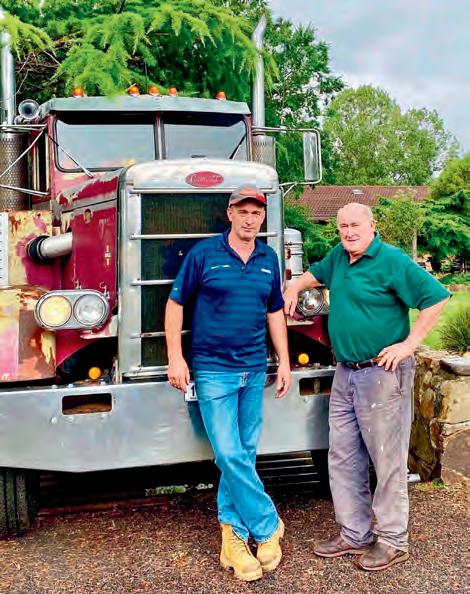
all this time searching the US and it was basically in my own backyard.”
The truck, imported from California about 15 years earlier, was sitting idle near Seymour, Victoria. The previous owner, based in Kinglake, was reluctant to sell at first.
“It took nearly two years of negotiating,” he says.
“He thought it was worth this much, and I knew it was worth a bit less. But one day, he just rang and said ‘come and get it’.”
Originally advertised for $45,000, Pendergast managed to score the infamous rig for only $9,500.
“It had brand new Michelin tyres and rims worth $10,000 alone. It was an incredible deal.”
Despite some clear exterior damage to the truck, Pendergast was feeling pretty chuffed with his purchase, taking it straight home to Camden. But when he finally unloaded, doubt started to creep in.
“We had no idea how many things were wrong with it. We only found out late that the front diff was about to explode. Honestly, it’s a miracle it made it,” he says.
Over the next 14 months, Pendergast poured himself into restoring the rig.
Under the hood, the Peterbilt packs a classic NTC 335 Cummins engine. Originally fitted with a 5x4 Spicer twin-stick transmission, it’s since been upgraded to a more practical Eaton Road ranger 13-speed overdrive, making it easier to handle on longer hauls.
The truck rides on a Hendrickson rubber block suspension, with 38,000lb Rockwell SQHD diffs running a 4.11 ratio, down from the original 5.29s. Up front, a Rockwell FE900 axle provides steering muscle, while the whole rig rolls on 24.5-inch Michelin tyres mounted to polished Peterbilt-spec oval-hole Alcoa alloys.
The trucks patina was kept untouched for historical reasons.
“In October 2019 a great of friend of mine Andrew Beeke and I travelled down and spent the entire day working on the truck, making it as reliable and safe as possible as we decided to drive it back to Camden,” he says.
“The truck never missed a beat on the 12-hour journey home. It was completely different after the work. No vibrations, no bumps. It actually drove like a good truck should.
“Elated – that’s how I felt.”
Reactions from the public were immediate and enthusiastic. On his first road trip post-restoration, from Camden to Glen Innes, Pendergast says the truck was a magnet.
“People followed me, stopped me. At a fuel stop in Moonbi, a bunch of old painters and panel beaters
pulled in. I was there for two and a half hours just talking about it,” he says.
“The feeling was just incredible, an achievement of a boyhood dream.”
For the next four years, the truck lived with Pendergast’s Dad in Glen Innes.
“I was always working up that way, so I’d spend long weekends tinkering, putting in a new interior, new fuel tanks, turntable. It was a labour of love,” he says.
Over this period, the vintage rig received new flooring, seats, steering box and components. It was also blessed with two new fuel tanks, a Jost turntable, rear genuine rubber Peterbilt mudflaps and many other minor repairs.
Whenever he could, Pendergast would take the rig to Grafton for a casual drive down and back up Gibraltar Range. He also took it to the Frasers Transport Yard in Warwick for a “Yarn in the Yard weekend” where, with the help from two great mates in Adam Gibson and Athol Carter, it famously pulled a road train.
While he enjoyed taking it around and showing it off, there is one particular memory that he says will never leave his mind.
“Coming back from an event in Warwick, I remember this car coming up behind me with flashing lights,” he says.
“A guy jumps out and tells me his son is a Peterbilt tragic, and Luke has cystic fibrosis. He was diagnosed at two weeks old and wasn’t expected to make it past his teens.”
Luke, as it turned out, was a Peterbilt fanatic and had celebrated his 12th birthday at the Peterbilt factory in Texas thanks to the Make-A-Wish Foundation.
“He always wanted to go for a drive in one. And here I was, in Glen Innes, with this old 351,” he says.
The next morning, Pendergast took Luke for a ride out on Grafton Road.
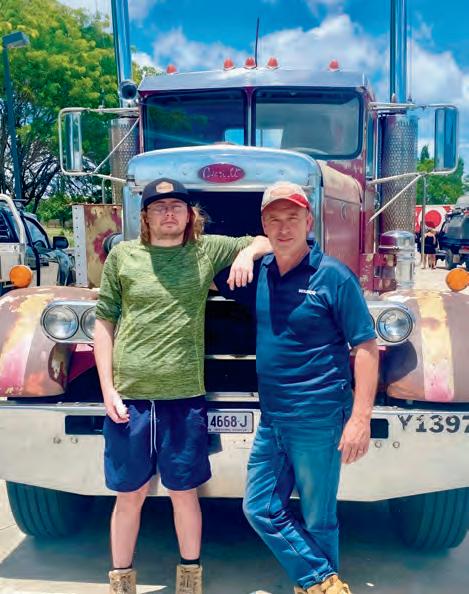
“We went for a very fast drive,” he laughs. “He absolutely loved it. I’ll never forget it.”
Today, the 1965 Peterbilt lives back with Pendergast in Camden.
After some digging, he was able to track down the original owner from America, who unfortunately passed away at 94 years of age before he could make contact. His daughter Jaime Lee had his signature copied and made into a plaque that’s attached to the LHS door.
“It’s not a working truck here, never was. But it’s a showstopper,” he says.
“We’ve taken it to the Campbelltown Steam Show, the Clarendon Classic, and hopefully this August it’ll

be on display at the Shepparton Live Museum for the Victorian Livestock Association’s event,” he says.
Wherever it goes, he says, the response is electric.
“People love it. They’re drawn to the history, the patina, the stories. It’s not polished and perfect, it’s real. It’s lived,” he says.
“Trucks like this take people back. They remind us of a different time, a louder time. A time when dreams were built out of steel and chrome.”
And for one young boy from Glen Innes, that dream is now parked proudly in his driveway.
Did you know when you join NatRoad, you can get help to make managing your
NatRoad’s HR advisor helps our members with questions big and small – from wage rates and conditions to dealing with complicated staff issues. It’s just one of the benefits of NatRoad membership.
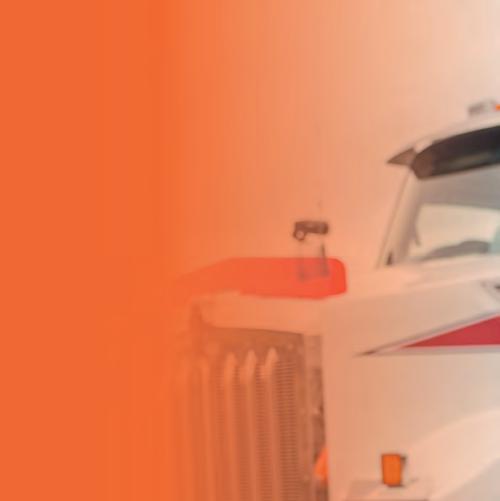

Join NatRoad today from just $26.95* per month to access expert advice, industry leading fuel, tyre, and roadside assistance discounts, plus partner offers, business resources and more.
Join online or call 1800
144 to become a member today.



Warren Aitken found himself at Victoria’s Hallam Truck Centre in front of Inndyah Chenoveth, who may not have grown up loving trucks but is now thriving in her role within the industry

I’ve beaten the ‘there’s plenty of diverse roles in transport’ drum on many occasions. I’ve been spruiking the ‘loving trucks leads to limitless opportunities’ mantra as well. Even more so when it comes to opening up the doors to women in transport. I haven’t, however, shone a light on the opportunities within transport for people that really don’t care about trucks.
That sounds very counterproductive, I know. However there really are so many different incentives for getting into this industry. You don’t have to be a card-carrying truck nut like me, and that was shown to me when I had the opportunity to sit down with a very talented young lady at Hallam Truck Centre in Victoria in Inndyah Chenoveth.
This amazing young apprentice has grown up around trucks – she now works around trucks, both brand new and with more years on the clock than herself. Yet when you put the question to the young apprentice ‘are you a truck nut?’ her honest answer is a ho-hum ‘not really, never had much interest. I knew them but I always saw them as a boy’s thing’. But here I sit, in the lunch room of the Hallam Truck Centre workshop, with Inndyah dressed in her finest coveralls and sporting a smile as bright as the lights she’s just been fixing on a customer’s DAF.
For while Inndyah may not have been drawn to her profession by the lure of the large rides, the transport industry and its offer of rewarding work has got a hold of this young lady and, as she eyes up the end of her auto-electrical apprenticeship, she is now contemplating doubling down with her heavy diesel mechanical apprenticeship as well.
As I mentioned, Inndyah is no stranger to the trucking world and the work ethic it takes to succeed within it. Her family runs East Coast Furniture Transport, a specialist company transporting furniture and homeware from warehouse to stores throughout Victoria, New South Wales, Queensland and South Australia. I am reluctant, and a little aggrieved to repeat
Inndyah’s ‘when I was younger’ quotes, as she is only 19 years old.
I still have work diaries older than she is, but Inndyah admits when she was younger, she had no interest in trucks, no inclination to become involved in transport and no aspirations to end up where she is now. All that changed, however, when COVID hit and all the rules changed.
“During COVID I would go to work with Dad when he was going in on the weekend to fix and service the trucks,” she admits.
“I was just doing little things to help out, and helping fit lights, stuff like that.”
Much to Inndyah’s surprise and her parents’ delight, Inndyah found herself becoming captivated more by the trucks.
“When I got older and started going to work with Dad on the weekends, I really started to enjoy it and learnt a bit more about it,” she says.
“At first I was just going to get out of the house during COVID, but found I enjoyed fitting stuff up in the trucks.”
That spark of interest led Inndyah to requesting and organising work experience through her school with Hallam Truck Centre.
“I never really liked school, I really struggled with it – I’d probably say I hated it,” she laughs.
“But when I got work experience here, I wasn’t just fitting stuff like I was with Dad, here I was learning to diagnose stuff and getting my brain working. I spent that week as a tag-along working with three of the other auto-elects. I didn’t do much myself, but it was exciting to see what they did, and they were all so helpful. I loved it.”
That week-long work experience was enough of a transport industry teaser for Inndyah to know that schooling wasn’t for her. Her path was chasing an apprenticeship.
“After that week, Halam Truck Centre offered me an apprenticeship, and I jumped at it,” she says.
“I loved the people I was working with and loved working here, so I filled out the paperwork and at the end of the school year I started.
“I do one day a week at TAFE and then the rest of the week I am here. The first year I was with someone every day, just learning. As I got closer to my second year, I was given jobs on my own. I was still working with someone but they were pushing me to be on my own.
“Now I’m in my fourth year doing most things on my own. I’m still asking questions because no one is ever going to know everything.”
We need to take a little interlude here to focus on a feat that young Inndyah achieved yet tried hard to avoid talking about. An accomplishment that warrants more than just the fleeting glance the humble young lady tried to impose.
I’ve mentioned that Inndyah is currently a fourth year apprentice, meaning last year was her third year. During her third year, Inndyah decided to join the hundreds of other PACCAR Technicians that enter their in-house Technician of the Year competition.
This competition is for both sides of the PACCAR camp, Kenworth and DAF. The competition is open to all the PACCAR technicians; you start by doing four online tests from your workplace. The top candidates then get invited along to PACCAR HQ in Bayswater, where they are put through several hands-on tests. Keeping in mind Inndyah is an auto-electrical apprentice, this competition tests the technicians on all areas; mechanical and electrical, four stations, 40 minutes per station.
Overseen by a PACCAR supervisor, each candidate has to assess, diagnose and repair a different issue. In the end, awards were handed out to the top three technicians and top apprentice. Not only was Inndyah the first female to make it through to the finals, in her third year as apprentice she picked up the award for fourth place in the DAF Technician category. It was a feat worthy of interrupting our story for.
Back to the Inndyah biography. For a young lady who admits her love of schooling was pretty much non-existent, she has found her groove among the faults and wiring of heavy vehicles.
“I feel good knowing I can find the problem and work out how to fix it. I am achieving what I want to achieve,” she attests.
Her placement of vocation has also played a major role in her success and enjoyment of the job.


“The whole team here at Hallam Truck Centre, especially the guys in the workshop, are great. They are so helpful and supportive,” she says.
“I was a bit worried when I first started, I was only 15 when I began, so I was definitely worried about it, but I have never had an issue. The drivers are great, if I speak to them, they are always very nice, polite, not trying to tell me how to do my job. They ask, ‘is this the issue?’ and I’ll explain what’s going on and they are very receptive. I really love it.”
Supportive is a key word when it comes to the systems in place not just for females, but for all apprentices at the Hallam Truck Centre. So much so that young Inndyah has eyes on a second specialty when she signs off on her autoelectrician apprenticeship.
“I love the auto-elect stuff, but I also enjoyed getting in and doing some mechanical work as well, so once I finish this, I am going to do my heavy diesel qualification,” she says.
For a young lady that despised school and her only interest in Mum and Dad’s trucking business came in the form of an excuse to avoid COVID restrictions, Inndyah has found her calling. She may never have a room covered in trucking posters. She most likely will never tarnish her weekends vacationing at truck shows. But the transport industry has offered her a role that is both challenging and rewarding, and I shall leave the last word to her.
“I never wanted to sit in an office, I’ve always wanted to be more hands-on and doing this stuff I have really enjoyed,” she says.
“Working out problems, the difficulty in solving those problems – I feel like sometimes females step away from this side because they think it is a man’s industry, but I’m all for woman being in it, it’s really enjoyable.”
“I feel good knowing I can find the problem and work out how to fix it. I am achieving what I want to achieve.”
Top: A tidy workstation is a good workstation and Inndyah Chenoveth ensures hers is a busy one as well
Above: While there are a lot of plugs in the more modern trucks, Inndyah admits it’s the problem solving that goes with it that has really piqued her interest
Opposite top: She may not have began with much of a trucking passion, but Inndyah has found the work in, on and under all manner of trucks has really sparked her enthusiasm
Opposite bottom: There is a lot more computer interaction for technicians these days and young Inndyah is all over it












ACM Bullbars manufactures durable, innovative and sleek looking products that adorn the front of trucks around Australia. But bullbar designs don’t just appear out of thin air
Bullbar design and manufacturing is no mean feat. It requires experience, innovation, understanding of trucks, craftsmanship, forward-thinking and some creativity.
Meet Matt Bloomfield, the leader of ACM Bullbars’ engineering and design campaign. At the core of ACM Bullbars, Matt makes use of his strong understanding of trucks as well as his engineering and manufacturing principles; along with some help and direction from a very experienced team of fabricators, fitters and salespeople.
His knowledge, cultivated over 18 years in engineering, fabricating and installing, includes 12 years exclusively spent designing truck bullbars. Matt provides ACM Bullbars with a great power to design and supply some of the best bar products for the truck and bus industry.
“Having worked with Peter and Garry years earlier with Advanced Herd Bullbars & Southport Engineering, I was wrapped when Peter got me on board at ACM,” Matt says.
“It’s a bit of a ‘putting the band back together’ situation for a lot my work mates, in fact. And if it wasn’t for those skilled and experienced guys we have on the floor, our designs and drawings wouldn’t become the bullbars and bumpers our customers rely on, so it’s definitely not just my experience that leads to our great products.
“While I’ve always loved old cars; working with the ‘big boy’s toys’ and the people and characters associated with them makes me very proud of my job, especially when my work is right at the front of trucks.
“A lot of tradies drive past homes and buildings and say to their kids, ‘I worked on that house/building’, which I also do, having worked some years in windows and doors companies. But when my bullbar designs drive by out on the road, I have to be much quicker in pointing out to the wife and kids ‘that’s one of our bars’.”
The truck and bus industry is dynamic. Manufacturers are constantly updating their offerings to the consumer, creating new innovative designs, features and versions to keep ahead of their competition. Shaped and directed by the needs and priorities of this industry, ACM Bullbars relies on Matt and his focus on addressing specific challenges and opportunities within this developing landscape.
“WE CONSTANTLY LOOK TO IMPROVE AND EVOLVE ALL OUR PRODUCTS BASED ON FEEDBACK OR SLIGHT UPDATES TO TRUCK MODELS THROUGH THE LIFE OF EVERY PRODUCT.”
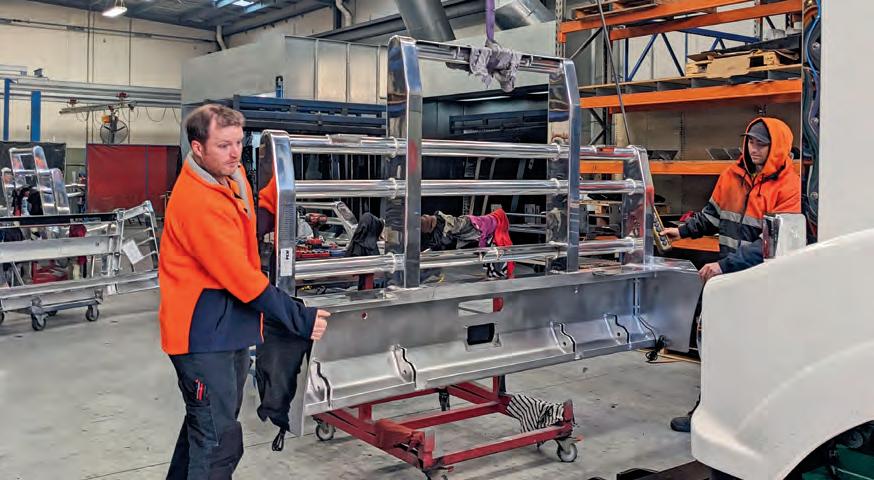
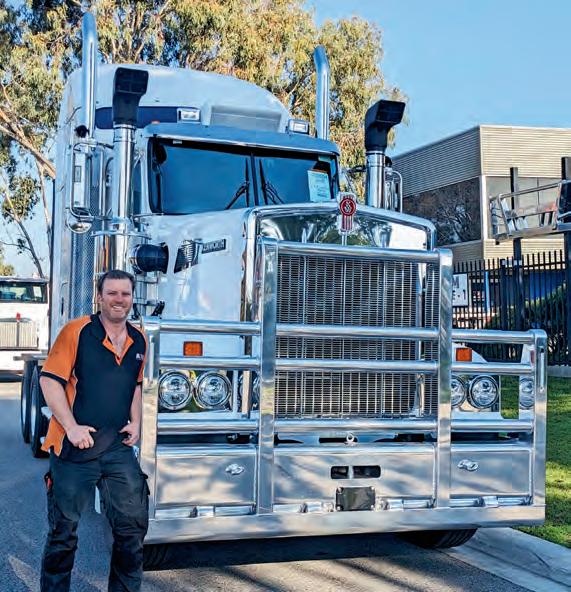
This type of research aims to generate practical and innovative solutions and leading-edge technologies that can be directly applied to the ACM Bullbar business.
While Matt’s key role in the business is design and engineering, his many years of engineering experience makes him critical in all facets of ACM’s operations.
“I enjoy the vast variety of tasks I put my hands to here, including design, 3D drafting, CNC programming, prototype fitting, purchasing, sales assistance and fitting bullbars when things are busy,” he says.
“It sounds like a lot, but I enjoy my time on the tools as much as the time behind my desk.”
ACM Bullbars’ process of developing a new bullbar begins with research – understanding, measuring and gathering information about each truck and its varying models. What are customers going to want? What should we offer? Does this truck have features that need special consideration like FUPS (Front Under-run Protection System), sensors or special lighting, cab/ bonnet tilting or service hatches and so many other features that all need consideration?
This research leads to design. ACM starts with the bar’s mounting bracket/s, ensuring it has plenty of attachment to the chassis. Adequate eyebolt brackets and hinges. A tow box or tow points suitable for the application. Engineer strength into the mountings for a long life of protection and where FUPS is required.
The main beam (bumper section) is then designed around the mounting. Extruded channel, road train or Texas style pressings are utilised as the base of the aluminium bar. Even more strength is added to their bars with strategic placement of internal gussets, reinforcing plates and pressings.
“It’s all about metal in the right places,” Matt says.
The top of the bullbar is then designed. The placement and use of different box posts, pipes, channels and flat bars is formulated to provide, most importantly, protection, looking not to impede on truck lighting, airflow or serviceability, while complementing the lines of the truck’s grille and bonnet/cab.
When the initial design is complete, the team prepares drawings, laser cutting files and CNC routing programs for their workshop to manufacture a prototype for test fitting where they check for proper and easy fitment, functionality, have any required FUPS assessments done and make sure it looks as good on the truck as it did on the computer.
It’s at this point that ACM puts its new bar design into production; launching the product with any alterations required, necessary fitting instructions, marketing material, drawings and instructions issued to their shop floor.
But that doesn’t always mean they build them the same way from this point on.
“We constantly look to improve and evolve all our products based on feedback or slight updates to truck models through the life of every product” Matt says.
“The core group of my colleagues have some serious years of experience in truck bullbars, more than 150 years combined, so we like to think that means we build some seriously durable and sleek looking bars here at ACM.”
Looking for the very best bullbar or bumper for your truck or bus?
Check out the ACM Bullbars website at www.acmbullbars.com. au or contact the ACM sales team on 1800 226 000.




An array of Australian rock music legends were born in August, creating an impressive list of music history
When casting the mind back over the years, Australia has been a hotbed of rock music history. August has witnessed numerous pivotal moments in rock music, from iconic album releases to legendary birthdays from the Australian Truck Radio Rock & Roll Diary!
AUGUST 8
1928: Australian jazz musician Don Burrows was born, with the jazz and swing specialist going on to play the clarinet, saxophone and flute in a distinguished career before his passing in 2020.
1981: Australian singer-songwriter Vanessa Amorosi was born. Her career has seen her sell at least two million units in albums or singles globally, rising to fame in 1999 through her debut single ‘Have a Look’ that has since reached gold status around the nation.

SIMON SMITH is the manager and producer of Australian Truck Radio. He has been in the radio game for 44 years and has been customising playlists for truckies for at least 20 of those. For great tunes 24 hours a day, 7 days a week, download the digital app for your phone at www.australiantruckradio. com.au
AUGUST 10
1961: A critical member of one of Australia’s most popular bands was born on this day in Jon Farriss. The founding member of INXS starred as the band’s drummer throughout its smash-hit years at the top of the charts.
AUGUST 15
1969: Another star-studded name in Australia’s rock music history was born on this day in Bernard Fanning. The singer became a household name as the frontman of Australian rock icons Powderfinger before he ventured into solo work through hits such as ‘Wish You Well’ and ‘Songbird’.
AUGUST 16
1957: It’s another member of INXS who was born on this day, and in fact, another member of the Farriss

Nominations are open for this year’s Endeavour Awards, with transport manufacturing now part of the growing award program
For the first time, transport manufacturers are included in this year’s program, with an Innovation in Transport award up for grabs.
The new award is for businesses enhancing vehicle manufacturing, public transport or sustainable mobility solutions.
Have a truck or technology that pops into your mind? Nominate them!
family. This time around, Tim was born in Perth, going on to become a founding member and lead guitarist of the popular band.
AUGUST 20
1956: Matt Moffitt of Matt Finish was born on this day. The Australian singer-songwriter and guitarist fronted the band in separate stints until 2003 while working as a solo artist before unfortunately passing in 2003.
1974: From one iconic Aussie rock band to the next – Andy Strachan of the Living End was born as Andrew Douglas Strachan in Adelaide on this day. The drummer moved to Melbourne and has been the drummer of the popular rock band since 2002.
AUGUST 23
1949: Rick Springfield was born in Merrylands, NSW as Richard Lewis Springthorpe. The Australian-American musician and actor is known for his time with band The Zoot before branching into solo work and releasing hit single ‘Jessie’s Girl’.
AUGUST 30
1952: Australian musician, songwriter, music producer and talent manager Graham Leslie ‘Buzz’ Bidstrup was born on this day. In his time he’s been a member of The Angels, the Party Boys and Gang Gaiang before managing multiple performers and becoming the founder of Uncle Jimmy Thumbs Up.
August stands out as a month rich in rock history. These events have played pivotal roles in shaping the landscape of Australian rock music from the Australian Truck Radio Rock’N’Roll Diary!
To be eligible, innovations must be either newly introduced to the market or significantly advanced within the two years leading up to the nomination closing date.
To nominate, businesses will have to demonstrate how their manufacturing innovations has improved the industry when it comes to environment and sustainability, productivity, efficiency and speed, cost-saving or safety.
The 2025 award categories include the Technology Application Award – sponsored by Weld Australia, Innovation in Aerospace, Innovation in Health Technology and Innovation in Food & Beverage Manufacturing.
The Innovation in Transport award is obviously new, and joins the ranks with the Outstanding Start-Up Award, Leader of the Year – sponsored by BDO Australia and Manufacturer of the Year.
This is an opportunity to recognise those making a real difference, whether they’re driving innovation, supplying vital products or services, or leading their organisations with vision and impact.
Nominations must be completed online by Thursday October 2 this year at 11.59pm.
To find out more about the Endeavour Awards and the innovation in transport award, head to https://endeavourawards.com.au/ nominations.
Marinovic


Earlier this year, the National Heavy Vehicle Regulator (NHVR) rolled out 10 Automatic Number Plate Recognition (ANPR) cameras for use in NSW. These cameras have been used in other states for several years. The new cameras in NSW are an expansion of the program.
You might have seen the cameras on the side of the road and wondered exactly what they’re used for. Given it’s part of NHVR’s compliance and enforcement, it’s useful for drivers to know what the cameras can (and can’t) do.
The ANPR cameras are mobile cameras. They are either mounted on a trailer (you’ll recognise them as a trailer with a solar panel and tall pole with camera on top) or on marked NHVR Safety and Compliance vehicles.
Being mobile, they are moved and used in different locations. This allows the NHVR
to achieve two things: firstly targeting high risk areas, and secondly making drivers aware they could be detected anywhere on the road network.
The NHVR says the goal of the cameras is to help them “better detect and intercept potentially high-risk behaviour and unsafe practices by heavy vehicles on the road”.
The cameras automatically detect the number plates of passing vehicles. The computer system flags vehicles and operators that might be high risk.
One thing to know is that fines are not issued directly from camera capture by the ANPR cameras, i.e. they’re not like red light, speed, mobile phone and seatbelt cameras where the camera takes the photo of the offence and the fine is automatically issued.
Instead, the ANPR data is used by the NHVR to help detect offences and decide which vehicles and operators to investigate
While 2026 may seem a while away, it won’t be long before the supply chain and logistics sector is back in Melbourne for the next instalment of MegaTrans. After a successful 2024 iteration, Australia’s largest supply chain and logistics trade show, MegaTrans, has announced it is returning in 2026.
The latest edition of the event will take place on September 16 and 17 next year at the Melbourne Convention and Exhibition Centre. MegaTrans 2026 will be back to focusing on the sustainable supply chain of the future as it attracts key players across the freight, logistics, warehouse operations, transport technology, infrastructure and other industries.
The event will be an interactive expo, reserved for companies offering advanced technologies and services as well as
contributions to the sustainable supply chain.
As the freight industry is projected to experience remarkable growth of 26 per cent over the next 30 years, there’s never been a more crucial time to explore the technologies and equipment that will allow the sector to meet this escalating demand.
MegaTrans 2026 will build on previous iterations of the show, providing a comprehensive platform for the industry to exhibit the industry’s latest innovations, hold insightful industry discussions and facilitate networking opportunities.
The last edition of MegaTrans in 2024 delivered record attendance, with 4,737 visitors attending the two-day event from September 18 to 19.
Exhibition space is available now, with early registrants receiving access to


MARINOVIC is a principal solicitor at Ainsley Law – a firm dedicated to traffic and heavy vehicle law. She has focused on this expertise for over a decade, having started her career prosecuting for the RMS, and then using that experience as a defence lawyer helping professional drivers and truck owners. For more information email Sarah at sarah@ainsleylaw. com.au or phone 0416 224 601

more closely. The NHVR has confirmed that it uses flags from the cameras to identify vehicles to intercept further up the road or undertake further investigations. So, being captured on ANPR could result in your truck being pulled over or receiving a letter requiring production of transport documentation (such as work diaries, journey and loading records etc).
While the ANPR cameras don’t automatically issue fines, the images and data captured by them could be used as evidence if the NHVR’s subsequent investigations uncover an offence.
One aspect of the cameras that has caused concern is the risk to privacy. The NHVR has sought to address this by making sure the cameras are positioned so as not to show the driver or identify them. The data about the vehicle movements is, however, stored by the NHVR and can be used by them for monitoring.
The main thing for drivers and operators to keep in mind is that they are being monitored on the roads. With the use of these mobile cameras, it’s no longer a case that vehicles are only monitored at the fixed Safe-T-Cam and Heavy Vehicle Checking Stations. They can be picked up anywhere.
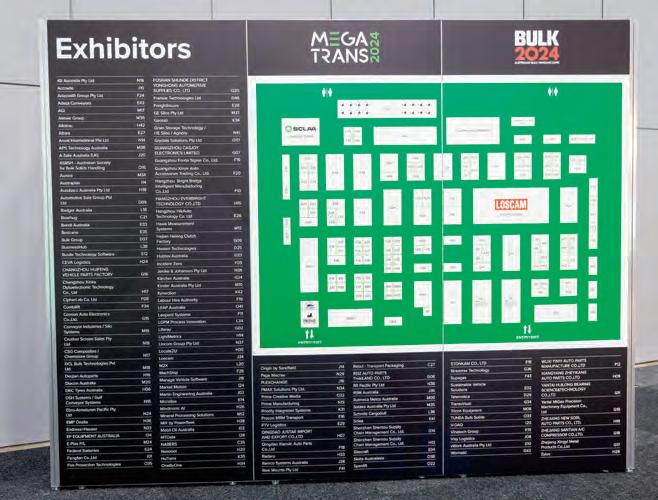
premium floor positions and exclusive promotional benefits.
For those wanting to reach a highly targeted audience, forge new partnership and display leadership in the supply chain industry, now is the time to secure an early spot.
“Megatrans is more than just an expo –it’s where the industry comes to connect, collaborate and shape what’s next,”
MegaTrans event director Siobhan Rocks says.
“We’re excited to welcome back exhibitors and partners for what promises to be our biggest and most impactful event yet.”
To find out more, head to megatrans. com.au.
“MEGATRANS IS MORE THAN JUST AN EXPO – IT’S WHERE THE INDUSTRY COMES TO CONNECT, COLLABORATE AND SHAPE WHAT’S NEXT.”
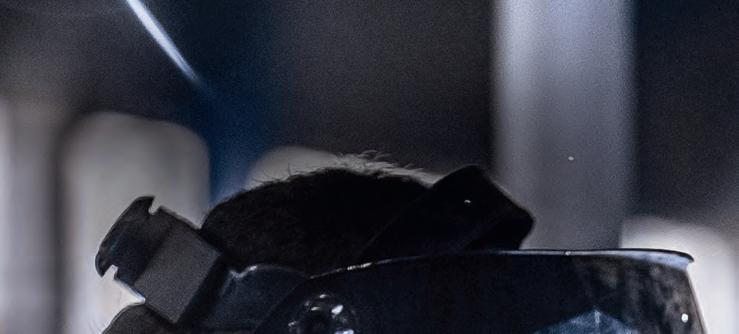






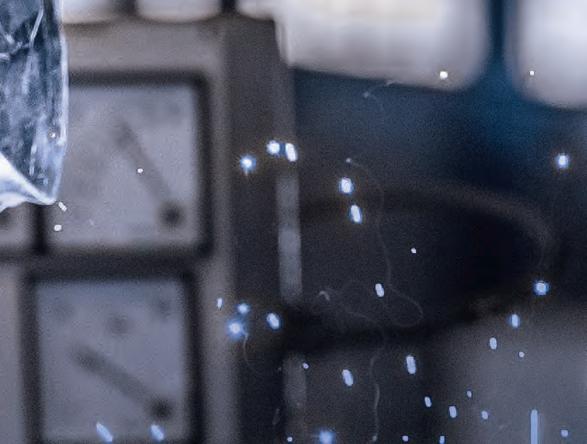










June’s Australian truck sales data is full of optimism as the heavy vehicle market closed out the financial year in style
The Australian heavy vehicle industry finished off the financial year on a high, experiencing a strong increase from May sales to finish June with just under 5,000 truck sales. The latest Truck Industry Council (TIC) T-Mark truck sales indicate there were 4,888 sales made in June, rising from 3,921 in May. While it’s an upward trend for 2025, the June numbers are still down on the 5,160 new vehicles recorded in June last year and the 6,054 sales in June 2023.
Total trucks
A total of 4,888 new trucks were sold across all segments in June, with Isuzu closing off a milestone financial year in style with 1,268 sales, increasing on its May efforts. Hino maintained its second spot in the market with 487 sales in June (up from its 358 May sales), while Fuso confirmed third spot with 365 sales. Kenworth wasn’t far behind with 338 sales, while Volvo (244) and IVECO (231) both recorded strong months. From there, Mercedes-Benz (135) and Scania (133) could barely be split, with the likes of Mack (61), UD Trucks (60) and DAF (56) remaining consistent throughout the middle of 2025.
Heavy duty
The heavy duty truck sales market continued its recovery from a recent drop, building on its 1,172 May sales to record 1,481 new vehicles sold in June. However, it’s still down on the 1,816 heavy duty sales made in June last year. On the OEM side, Kenworth couldn’t be toppled with its 338 sales, while Volvo (237) did enough to maintain its second spot ahead of Isuzu (208). Behind the top three, Scania recorded the 133 sales, Mercedes-Benz the 103 and Fuso (82) and IVECO (81) were as close as you could get. Behind this group was Hino (64), Mack (61), UD Trucks (55) and DAF (54).
Sales are also on the up in the medium duty market, with 764 June sales surpassing the 670 and 600 sales recorded in May and April respectively. While it’s still down on the 887 sales recorded in June last year, the market’s upward trend in recent months is still dominated by Isuzu (348 sales). Hino continued to go from strength to strength with 267 monthly sales, comfortably ahead of the third placed Fuso with 96 sales. There was a remarkable drop afterwards, with the next best being Hyundai with the 14 sales ahead of a final six brands that shared 39 sales.
On the light duty side, sales continued to build from 1,090 in May to 1,332 in June. While it’s still down from 1,509 sales made in the market in June last year, it’s a quick rise for the segment in recent months. Isuzu was once again at the top with an astonishing 712 sales, comfortably ahead of the following pack made up of Fuso (187), Hino (156) and IVECO (141). The group that came after the leading five included Renault (48), Fiat (26) and Mercedes-Benz (24).
Vans
The van market was once again on the up, reaching four figures with 1,311 sales made. Mercedes-Benz Vans has established a foothold at the top of the market with 376 monthly sales, ahead of the second placed LDV (339). Ford (225) and Renault (223) could barely be split, with IVECO recording a very strong month with 75 van sales. Volkswagen (39) and Fiat (29) maintained consistency, while Peugeot finished the market’s sales with five vehicles.
Glyn Castanelli



The
NRFA’s Glyn Castanelli
says it’s time for the industry to fix the race to the bottom on its own accord
There’s a race to the bottom underway, and if we don’t do something soon, there won’t be much of an industry left to save. But here’s the thing, not everyone is going under. There are still some operators out there doing well. They’re not shouting about it, but they’re working away, looking after their customers, charging the right rate and running solid, sustainable businesses. They’re not winning because they’re lucky. They’ve made choices.
They’ve chosen not to play the game that’s killing the rest of the industry. They’ve said no to cheap freight and undercut rates. They’ve built relationships with customers who respect them, customers who want good service, safe gear and reliable people behind the wheel. And they’re getting paid fairly for it.
So why the disconnect? Why is it that we’ve got two versions of the industry running side by side, one slowly growing stronger and the other falling apart?
It comes down to values. Operators who hold the line and run proper businesses are showing that success is still possible, but only if you refuse to be dragged into the undercutting war that’s burning everyone else out.
Let’s be honest: if you’re looking over the fence at your neighbour’s work and thinking ‘I’ll drop my rate by $20 and get that job’, you’re not just undercutting them, you’re undercutting yourself. Because the next bloke sees you do it and then he goes even lower. Around and around we go until there’s nothing left in the job but stress and scrap value.
If you can’t get a fair rate for your work and you’re running clean, compliant and reliable, maybe the problem isn’t you. Maybe it’s the system. Maybe it’s the customer. And maybe it’s time to walk away from the work that’s driving you broke. Keep your best customer. Keep the work
that values you. If you love trucks, keep one. Play in your own space. Because this race to the bottom only ends when enough of us stop running.
SO,
The NRFA, together with other committed industry voices, is working to build a fairer, more sustainable framework through a set of practical minimum standards. The first step in that journey is already underway, Contract Chain Order (CCO) 2024/4, currently before the Fair Work Commission. This proposal includes three key measures designed to bring fairness back into freight contracting:
• Set maximum payment terms of 30 days from job completion.
• Stop unfair contract terms that force operators to accept impossible “productivity savings” written by someone in a boardroom.
• Require all contracts to be reviewed annually in good faith, taking into account rising costs like fuel, insurance, wages and compliance.
That’s a start. But it can’t stop there. We also need a system that makes economic customers, not just the transport companies, accountable for the true cost of doing business. Now, too many customers act like their job ends when they send the booking request. They don’t see the hours their freight sits on a dock while a driver
GLYN CASTANELLI is the president of the NRFA
waits for a forklift. They don’t care about the unpaid delays at DCs, loading and receiving facilities. That must change.
Operators and drivers are being expected to give away hours of unproductive time, time that can’t be invoiced and can’t be made up and just absorb the cost. No other profession would tolerate that. Why should we?
We need to draw a line. If time is being lost and the operator is not at fault, the customer should be paying for it. Otherwise, the burden keeps falling on the people least able to carry it – the drivers and operators.
This issue has lingered in our industry for over a decade, and it’s well past time it was addressed.
There are still far too many “contractors” out there who are just employees in disguise. They don’t own a truck. They don’t run a business. They supply only their labour, drive company vehicles and are treated like staff, except without the protections of employment.
That’s not a small problem. It drags rates down. It creates a false economy. And it’s completely unfair to the legitimate operators doing it the right way.
The ATO has had the power to deal with this for years, but the inaction has been staggering. So now we’re asking the question: do we need to fix this ourselves? Do we need another contract chain order to stop sham contracting where it hurts, in the supply chain?
Because if no one else will act, maybe we have to do it ourselves.
Every operator working for reward should have a basic safety management system in place and a business plan that shows they’re fit to run a truck. Not just because it looks good on paper, but because it’s the bare minimum for safe, responsible operations.
If you’re going to put a truck on the road in the name of a business and work for reward, you should be able to demonstrate
“It’s time to take action. It’s time to rebuild an industry where operators are paid fairly, customers are accountable and the cowboys are squeezed out by a standard we can all stand behind.”
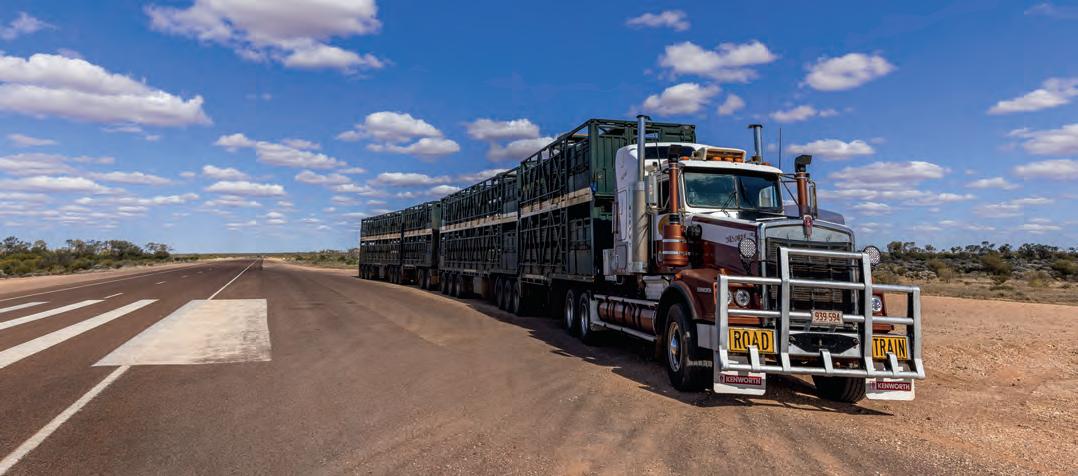
that you’re up to the task. The HVNL review has missed this crucial need of industry so again maybe we have to do it ourselves.
The industry is in crisis, but there’s still time to turn it around. We can’t keep waiting for someone else to step in and fix it. These problems have been with us for decades, and the longer we wait, the worse they get.
It’s time to take action. It’s time to rebuild an industry where operators are paid fairly, customers are accountable and the cowboys are squeezed out by a standard we can all stand behind.
Because if we don’t stop the race to the bottom, there won’t be anything left to fight for.
LRTAV STATE CONFERENCE
August 8-9
Move Museum, Shepparton, VIC
The Livestock & Rural Transporters Association of Victoria (LRTAV) will host its annual 2025 Conference in Shepparton, featuring all things livestock and rural. Registrations will open soon, with more details to come.
RODEO AND OUTBACK FESTIVAL
August 15-17
Coolgardie, WA
Organisers of this year’s Coolgardie Rodeo and Outback Festival are planning an
August 23-31
Kingsthorpe Park, QLD
Biennial National Historical Machinery Association
Transport
FESTIVAL OF TRANSPORT 2025
August 28-31
Alice Springs, Northern Territory
Held
NATROAD CONNECT 25
September 11-12
Shepparton,
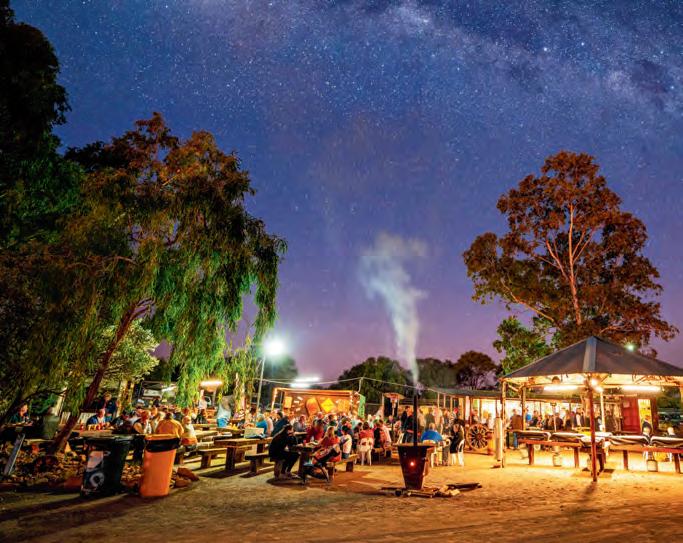


October
October
Melbourne,





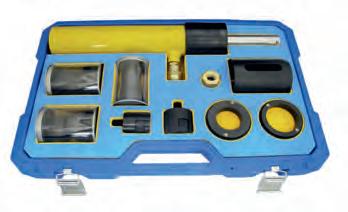
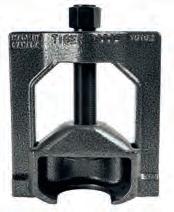

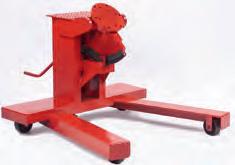

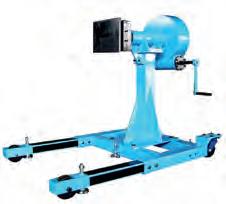







Celebrities are just like us! Many came from humble backgrounds and did what it took to make ends meet while chasing their big break. Ever dreamed of belting out a tune to thousands at a sold-out concert? Or perfecting your Oscar acceptance speech in the bathroom mirror? As far-fetched as those dreams might seem, for some stars, the road to fame literally started behind the wheel.
Elvis Presley
Before belting out ‘Jailhouse Rock’ and rolling his hips in front of young women, Elvis Presley spent time following in his father’s footsteps, driving trucks for Crown


Electric in 1954. Splitting his time between driving and trying to get discovered, he was even told to give up on his aspirations as a musician and stick with being a truck driver instead!
James Cameron
Long before he became synonymous with blockbuster films like Titanic, The Terminator,] and Avatar, James Cameron was behind the wheel of a truck. During this time, he spent the long hours on the road thinking
of screenplay ideas before finally quitting to pursue filmmaking in 1977.
Jason Aldean
While many country artists sing about quintennial ‘country’ experiences, Jason Aldean is one singer who has truly lived the life. Working as a delivery driver for Pepsi in Georgia, he balanced his day job with performing gigs on Friday and Saturday nights.
Liam Neeson
Before captivating audiences on the big screen, Liam Neeson spent time working as a truck driver for Guinness Brewery. After several years on the road, he shifted his focus toward acting, ultimately starring in acclaimed films like Schindler’s List and the action-packed Taken series.
Long hours on the road can often mean nights spent alone in the back of the cab, or solo dinners at a servo. So instead of browsing through Facebook, why not pick up one of these truck-centric books?
The Long Haul: A Trucker’s Tales of Life on the Road
Finn Murphy
More than 30 years ago, Finn
Murphy dropped out of college to become a long-haul trucker. Since then, he’s covered more than a million miles as a mover, packing and hauling people’s belongings all over America.
To buy: https://www.amazon.com. au/Long-Haul-Trucker%60s-TalesLife/dp/0393608719
The Best Australian Trucking Stories
Jim Haynes
A collection of true stories taken from the lives of trucking men and women from Tarcutta to Alice Springs and all over Australia.
To buy: https://www. allenandunwin.com/browse/ book/Jim-Haynes-Best-AustralianTrucking-Stories-9781760633325
Long Haul: Hunting the Highway Serial Killers
Frank Figliuzzi
In 2004, the FBI was tipped off to a gruesome pattern of murders along America’s highways and interstates. Today at least 850 homicides have been linked to a solitary breed of long-haul truck drivers.
To buy: https://www.amazon.com. au/Long-Haul-Hunting-HighwayKillers/dp/006326515X













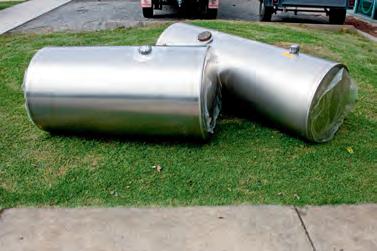
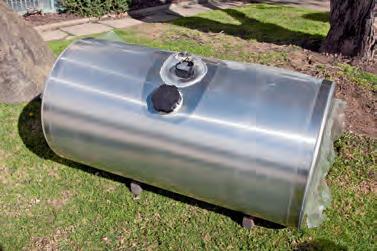
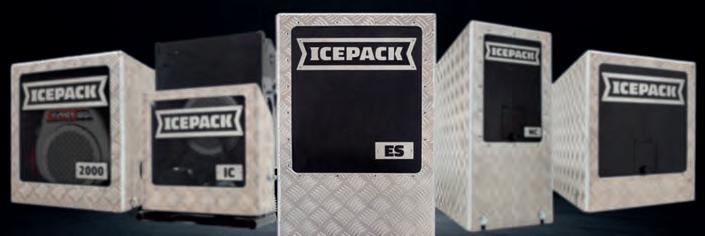






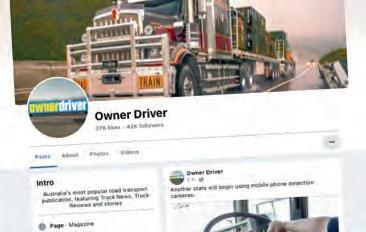
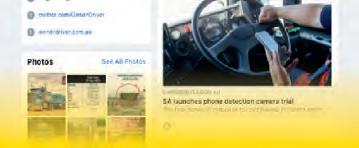








Frank Black addresses the worrying trend in Australia’s owner-driver landscape and what the entire industry needs to do to make the future viable
Across Australia, a troubling trend is unfolding in the transport sector. From large logistics companies to singletruck operators, businesses are closing their doors at an alarming rate. Rising costs, shrinking margins and unsustainable freight rates are squeezing the life out of an industry that is the backbone of our economy.
Many transport businesses are no longer breaking even. Some, after decades of reliable service, have been forced to walk away – not because they’ve lost the passion or work ethic, but because the job itself has become unsustainable. That should set off alarm bells for everyone who relies on freight to keep goods moving across this country – which, in truth, is all of us.
The warning signs are everywhere. Fuel prices are volatile. Insurance premiums go up year after year. Equipment costs have surged. Compliance demands are growing more complex and expensive. And through it all, freight rates – the one thing that should be keeping us afloat – have remained stagnant or even declined in real terms.
This isn’t just a rough patch. It’s a systemic crisis.
The first step is recognising that we can’t keep absorbing rising costs without pushing back. If we don’t agree to a clear minimum rate based on our real-world expenses – fuel, tyres, rego, wages, repairs, depreciation – we risk working for nothing. And that’s exactly what’s happening across the country. Too many operators are grinding themselves into the ground just to keep the wheels turning.
We’ve got to be honest about the hard truth: if a job doesn’t pay enough to cover your costs and make a fair return, walk away. That might sound extreme to some, but staying on for lowball rates doesn’t just hurt one business – it pulls the entire industry down with it. Accepting unsustainable work sets a dangerous precedent that makes it harder for all of us to survive.
Clients need to understand that reliable, professional freight services don’t come cheap – and shouldn’t. The days of bargain-basement rates have to end. You can’t have safe, wellmaintained trucks, qualified drivers and efficient delivery without paying for it.
It’s not acceptable for clients at the top of the chain to drive down rates just to please their own customers and maximise their profits while passing

all the cost pressures onto transport operators. If we allow that to continue, we reduce our leverage and risk being pushed even further to the edge. But there is strength in numbers. When we stand together – ownerdrivers, drivers employed in large fleets, small operators, industry bodies and unions like the TWU – we increase our bargaining power. We have a better chance of influencing clients and making them pay attention to the real cost of doing business in this industry.
This unity has to extend across the workforce. If you see other drivers taking work at undercutting rates, have a conversation. Let them know that they’re not doing themselves – or the rest of us – any favours. It might feel like they’re getting ahead in the short term, but if they can barely scrape by, they’re being squeezed just like everyone else.
Everyone wants a fair deal. But if we keep accepting less than we’re worth, it’s only a matter of time before the entire system breaks down. And when that happens, it won’t just be owner/ drivers and operators who suffer –clients will find themselves without anyone left to move their goods.
Those at the top need to understand that they depend on us just as much as we depend on them. And if they continue to ignore the warning signs, they risk facing more than just a driver shortage – they could see strike action, convoys, rallies and a loss of public trust.
We also need to address the issue of standards within the industry. There are still operators running equipment that’s not fit for the job and hiring drivers who aren’t up to scratch just to cut costs. That puts everyone at risk – customers, workers, businesses and road users. Companies who cut corners might save a few bucks in the short term, but they damage their own reputation and drag the rest of us down.
This industry is built on hard work and resilience. But in 2025, that’s not enough. We need to match that grit with business smarts. We need to stand firm, value what we do and collectively demand the respect – and the rates – we deserve.
Let’s be clear: this fight isn’t just about money. It’s about protecting our livelihoods, our safety and the future of the industry for the next generation.
It’s time we stopped accepting the scraps and started demanding a fair go.
Because if we don’t protect this industry – who will?
“We’ve got to be honest about the hard truth: if a job doesn’t pay enough to cover your costs and make a fair return, walk away.”











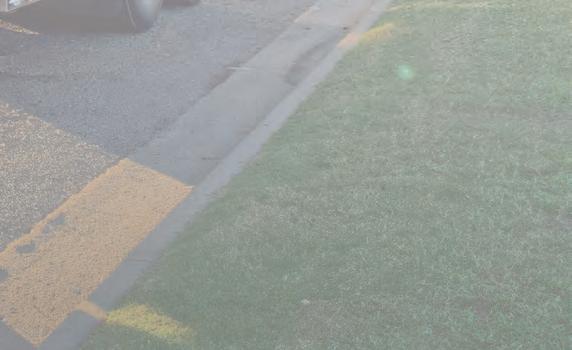
“Australian Truck Radio is my ‘go to’ when I’m on the road. The music is on point, and I never get bored!”




























